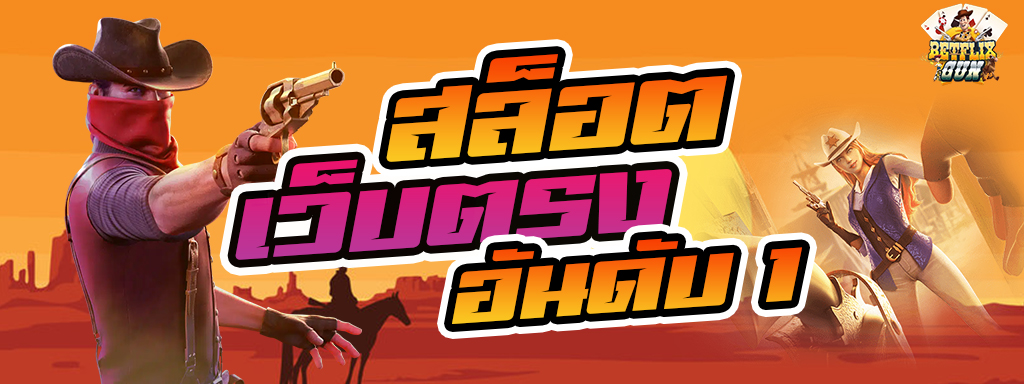

สล็อตเว็บตรง สุดยอดเว็บสล็อตที่สร้างความน่าสนใจ
การเข้าใช้บริการ สล็อตเว็บตรง เป็นหนึ่งในความสนใจที่จะทำให้เหล่าบรรดาสมาชิกนั้น ยิ่งถ้าหากได้เจอกับเว็บ สล็อตแตกหนัก ก็จะยิ่งทำให้รู้สึกสนุกสนานและเป็นที่น่าสนใจมากยิ่งขึ้น โดยการให้บริการ จะเป็นหนึ่งในเว็บไซต์ ที่สร้างความสนุกสนานเร้าใจให้กับคุณ ไม่เพียงเท่านั้นยังเป็นเว็บที่สามารถสร้างรายได้ให้คุณได้ด้วย เว็บของเราเชื่อถือและไว้ใจได้100% มีผู้เล่นมากมายเคยได้เข้ามาใช้บริการ หากคุณยังไม่มั่นใจสามารถเข้ามาดูเว็บของเรา ก่อนที่จะตัดสินใจสมัครสมาชิกได้เลย แต่ถึงอย่างนั้น ถึงแม้ว่าเราจะบอกกับคุณว่าเว็บของเราดีและปลอดภัยแค่ไหน แต่มันก็ยังมีอีกหลายปัจจัยที่จะทำให้กลายเป็นหนึ่งในเว็บไซต์ที่น่าสนใจ
ความปลอดภัยและความมั่นคงนั้นก็ส่วนหนึ่ง แต่มันก็ยังมีความพึงพอใจในการเข้าใช้บริการที่เป็นปัจจัยในการเลือก แต่ก็อย่างที่บอกว่ายังมีอีกหลากหลายสิ่ง ที่จะทำให้ผู้เล่นนั้นรู้สึกว่าเว็บ เป็นหนึ่งในเว็บไซต์ที่น่าสนใจ แล้วไม่ว่าจะอย่างไรก็อยากจะเข้ามาใช้บริการอีก ความน่าสนใจของเว็บนี้มีมากมาย ซึ่งเสน่ห์ของการเข้าใช้บริการ สล็อตเว็บตรง ก็คงจะเป็นในเรื่องของการเข้าใช้บริการ จากการที่เรานั้นได้ไปศึกษาข้อมูลมา พบว่าผู้เล่นส่วนใหญ่พึงพอใจในเรื่องนี้จริง เรารู้สึกว่าโปรโมชั่นและสิ่งต่าง ๆ ที่ควรจะเป็นของเรา ทำให้เราได้มาอย่างเต็มเม็ดเต็มหน่วยยกตัวอย่างเช่น เกมสล็อต ที่มาพร้อมกับโปรโมชั่น
อีกทั้งการเข้าใช้บริการ สล็อตเว็บตรง กับทางเรานั้นยังช่วยตอบโจทย์ให้ผู้เข้าใช้บริการได้อย่างหลากหลายทั้งในเรื่องของ ความรวดเร็วในการให้บริการ และความสนุกที่ลูกค้าจะได้จากการเดิมพัน แล้วยังมีหัวข้อที่สำคัญที่สุดนั้นก็คือความปลอดภัยที่ลูกค้าจะได้รับ โดยเว็บไซต์ของเราเป็นเว็บไซต์ที่มีความปลอดภัยมั่นคงแน่นอน 100% เนื่องจากไม่มีการนำข้อมูลใดออกไปเผยแพร่อย่างแน่นอน ทั้งนี่ผู้เล่นสามารถมั่นใจกับการเล่น สล็อตออนไลน์ กับทางเราได้เลย โดยเราได้รวบรวมเกมสล็อตที่ได้รับความนิยมในปัจจุบันมาไว้ในที่เดียวเพื่อให้ผู้เล่นได้รับความสนุกจากเกมเหล่านั้นแบบเต็มที่
ทำความรู้จักกับ สล็อตเว็บตรง โดยเฉพาะการทำงานขั้นพื้นฐาน
สำหรับการเข้าใช้บริการ สล็อตเว็บตรง ซึ่งจัดได้ว่าเป็นเชื่อถือได้ในความปลอดภัย เป็นหนึ่งในเว็บไซต์ที่มีความน่าสนใจหลายๆด้าน โดยเฉพาะอย่างยิ่งกับการใช้บริการ สล็อตแตกหนัก บริการนี้จะทำให้ผู้เล่นรู้สึกได้ทันที เกมสล็อตที่ทางเว็บเป็นผู้ให้บริการ ผู้เล่นจะได้รับประโยชน์และค่าตอบแทนสูงสุด อีกทั้งยังสนุกกับการเล่นได้อย่างเต็มที่ เนื่องจากเว็บของเรานั้นไม่จำกัดเวลาในการเล่น ไม่จำกัดวงเงินในการเดิมพัน ผู้เล่นสามารถปรับเบทได้เต็มที่ มิหนำซ้ำยังมีบริการสอนเล่นให้ด้วย สำหรับมือใหม่ที่พึงหัดเล่น ก่อนที่เราจะเข้าไปใช้บริการ สิ่งแรกที่ควรจะทำนั้นก็คือ การศึกษาเว็บไซต์ วิธีการข้าใช้งานในฟีเจอรต่างๆ หรือให้อธิบายง่ายๆนั้นคือ การทำงานขั้นพื้นฐานของเว็บไซต์ ว่ามีอะไรบ้างที่ไม่เข้าใจ หรือไม่คุ้นชิน ตรงนี้สามารถศึกษาจนกว่าจะเข้าใจ
เพื่อที่จะได้เข้าไปใช้บริการได้อย่างไม่ต้องเป็นกังวลถ้ามองดูดีๆแล้ว เว็บของเรานั้นมีรูปแบบการเข้าใช้งานที่ง่าย ฟีเจอร์ต่างๆบนเว็บไซต์ ต่างก็มีลูกเล่นที่ไม่เยอะ ซึ่งแน่นอนว่าสำหรับการเข้าใช้บริการ สล็อตเว็บตรง การที่จะทำให้เรานั้นสามารถที่จะทำความรู้จักกับการทำงานขั้นพื้นฐานของ เกมสล็อต ก็คงจะหนีไม่พ้นในเรื่องของการลงมือทำ หรือไม่ก็อาจจะเป็นในเรื่องของการลงเดิมพันกับตัวเว็บ ที่มีอัตราการฝากถอนที่น่าสนใจ แต่ก็ต้องยอมรับว่าการที่จะเล่นเกมสล็อตให้ได้กำไร การศึกษาเป็นสิ่งสำคัญ การศึกษาเกมเป็นสิ่งแรกที่จะทำให้คุณได้กำไรจากการลงเดิมพันเรื่องราวที่เกี่ยวกับเกมสล็อตมีมากมาย ไม่ว่าจะเป็นเทคนิค วิธีการเล่น
การทำความรู้จักกับเกมสล็อตออนไลน์ รวมไปถึงเทคนิคต่าง ๆ
สำหรับในเรื่องของเทคนิคที่ผู้เล่นจะต้องทำการเรียนรู้เกี่ยวกับ สล็อตเว็บตรง สำหรับมือใหม่เป็นเรื่องที่สำคัญอย่างยิ่ง ถ้าอยากได้กำไรคืนจากการเล่นเกมสล็อต อย่างแรกที่ต้องทำเลยคือ จะต้องรู้ก่อนว่าจะต้องทำอย่างไร ที่จะทำให้ผู้เล่นที่เข้าไปใช้บริการ เกมสล็อต ได้รับผลประโยชน์สูงสุด ซึ่งตรงนี้บอกได้เลยว่าง่ายมากๆ วิธีที่จะทำให้ได้ประโยชน์สูงสุดจากการเล่นเกมสล็อตนั้นก็คือ ผู้เล่นไม่ควรไปเล่นเกมสล็อตจากค่ายเว็บใด นอกจากเว็บของเรา
เหตุผลที่ให้ผู้เล่นเลือกใช้บริการเว็บของเรา สิ่งแรกเลยนั้นเว็บของเราการันตีด้านความปลอดภัย ให้บริการตรงไม่ผ่านเอเย่นต์ อีกทั้งผู้เล่นยังสามารถฝากถอนไม่มีขั้นต่ำ สล็อตเว็บตรง จัดได้ว่าเป็นเว็บการแจกโบนั้นก็เป็นอีกเหตุผลหนึ่ง ที่เราอยากให้ผู้เล่นทุกคนนั้นตัดสินใจเลือกใช้บริการเว็บของเรา โบนัสและโปรโมชั่นเป็นสิ่งที่มีประโยชน์ ที่จะช่วยเพิ่มความคุ้มค่าในการเล่น และแน่นอนว่าการเข้าใช้บริการ สล็อตแตกหนัก จะเป็นตัวช่วยที่ดีสำหรับผู้ที่มีต้นทุนน้อย การเรียนรู้เกี่ยวกับเทคนิค เป็นสิ่งทื่อใหม่หัดเล่นควรศึกษา ยังมีอีกหลากหลายสิ่งที่ผู้เล่นจะต้องเรียนรู้ แต่เราสามารถการันตีให้คุณได้ เว็บนี้ปลอดภัยและเชื่อถือได้จริงๆ หลังจากที่คุณมั่นใจในเว็บของเรา เมื่อเข้าใช้บริการและยิ่งถ้าผ่านการศึกษามาแล้ว คุณสามารถนำสิ่งที่คุณได้ศึกษามานำมาใช้กับ สล็อตไม่ผ่านเอเย่นต์ ได้เลย รับประกันได้เลยว่าเทคนิคต่างๆ จะประสบความสำเร็จอย่างแน่นอน

โบนัสและโปรโมชั่น สำหรับการเข้าใช้บริการ สล็อตเว็บตรง ทำเงินได้ง่าย
อีกหนึ่งเสน่ห์ที่ทำให้ สล็อตเว็บตรง ได้รับความนิยม ที่นอกเหนือจากการเป็นเว็บ สิ่งนั่นจะเป็นในส่วนของโปรโมชั่นรับโบนัส บอกได้เลยว่าเป็นเสน่ห์อีกอย่างหนึ่งของเว็บจริงๆ ซึ่งตรงนี้เราก็ได้บอกเอาไว้ตั้งแต่ต้นแล้วเช่นกัน ซึ่งการใช้ สล็อตไม่มีขั้นต่ำ จะอาจจะทำให้ได้รับโบนัสมากขึ้นกว่าเดิม ถ้าหากว่าใช้วอเลทไม่เป็น ไม่เป็นไรเลย แอดมินของเราสามารถสอนได้ ขอแค่เพียงไว้วางใจเว็บของเราก็พอ สำหรับสมาชิกที่เลือกเล่นเกมกับเว็บไซต์ของเรา ต่างก็คงสงสัยว่าถ้าอยากจะได้โบนัส หรือโปรโมชั่นจะต้องทำอย่างไร เนื่องจากโปรโมชั่นนี้เป็นโปรโมชั่นที่มอบประโยชน์สูงสุดให้กับผู้เล่น ทำให้ผู้เล่นนั้นประสบความสำเร็จได้มากขึ้น เป็นหนึ่งในเว็บที่มีโปรโมชั่นมากมาย
นอกเหนือจากการกดรับโปรโมชั่น ยังมีอีกหนึ่งสิ่งที่จะทำให้ การที่ผู้เล่นเข้ามาเล่น สล็อตเว็บตรง ได้รับผลประโยชน์ได้มากที่สุด นั้นก็คือการจัดการในเรื่องเงิน ซึ่งแน่นอนว่า ได้เปิดให้เข้ามา ทดลองเล่นสล็อต pg เพื่อที่จะทำให้วางแผนการเงินได้ดีมากขึ้น อีกทั้งยังมีระบบฝากถอนเงินที่ผู้เล่นสามารถวางใจได้100% การจัดการในเรื่องของธุรกรรมทางการเงิน ไม่มีเว็บใดที่จะปลอดภัยไปมากกว่าเว็บของเราอีกแล้ว
จัดการเงินในการเล่นเกมสล็อตออนไลน์ อย่างไรให้ประสบความสำเร็จ
แน่นอนวิธีการฝากถอนเงินเป็นเรื่องที่สำคัญอย่างมาก สำหรับการเข้าใช้บริการ สล็อตเว็บตรง ไม่มีผู้เล่นคนไหนที่อยากจะเข้ามาใช้บริการกับเว็บที่ไม่มีความปลอดภัยทางด้านนี้ แต่วางใจได้เลยเราก็ได้ย้ำอยู่เสมอว่าเว็บของเราปลอดภัยทุกด้าน และแน่นอนว่าเมื่อผู้เล่นได้พบกับเว็บไซต์ที่ดีอย่าง สล็อตออนไลน์ เว็บนี้แล้ว คุณจะไม่รู้สึกว่าอยากจะไปใช้บริการค่ายเว็บอื่นอีกเลย ยิ่งเมื่อนำมาใช้ควบคู่ไปกับการวางแผนในการเล่น หรือวางแผนในเรื่องของการเงิน ยิ่งมั่นใจได้เลยว่าการเล่นสล็อตของคุณนั้น จะจัดได้ว่าเป็น แน่นอน เว็บของเราไม่ใช่เว็บกะโหลกกะลา เว็บของเราเปิดให้บริการมานาน เพราะฉะนั้นผู้เล่นวางใจได้เลย
คำถามที่พบบ่อย
ใช้เวลาในการฝาก-ถอนนานมั้ย
เว็บเราใช้เวลาในการฝาก-ถอนไม่นาน เพราะคุณสามารถฝาก-ถอนได้ด้วยตนเอง ไม่ต้องรอแอดมินมาดำเนินการให้แบบแต่ก่อน
มีเกมสล็อตค่ายอะไรบ้างที่เปิดให้บริการ
มีให้เลือกเล่นมากกว่า 20 ค่าย อาทิเช่น PG SLOT, AMBPOKER, Joker, SlotXO, Jili และอีกมาก
สามารถเล่นสล็อตฟรี ได้จริงหรือ?
คุณสามารถทดลองเล่นเกมต่าง ๆ เพื่อเล่นเกมสล็อตบนเว็บไซต์ของเรา หากสนใจเล่นเกม เพียงสมาชิก สามารถฝากเงินได้ไม่จำกัดจำนวน วางเดิมพันได้ตามจำนวนที่กำหนดในแต่ละเกม
สรุป ทำไม สล็อตเว็บตรง จึงเป็นเว็บไซต์ที่น่าสนใจ
สุดท้ายนี้ สำหรับเหตุผลที่ว่าทำไม สล็อตเว็บตรง จึงเป็นเว็บที่น่าสนใจ ถ้าได้อ่านตั้งแต่ต้นจนจบ เราว่าทุกคนคงจะมองเห็นคำตอบกันแล้ว แต่ถึงอย่างนั้นแน่นอนว่าเหตุผลนั่นก็คือ ในส่วนของผลกำไรที่เหล่าบรรดาผู้เล่นจะได้รับ คุณที่เป็นผู้เล่นจะได้รับไปแบบเต็มเม็ดเต็มหน่วย นอกเหนือจากนี้แล้วนั้นยังมีในส่วนของ สล็อตแตกหนัก สำหรับคนที่ชื่นชอบการเข้าใช้บริการ แต่มีงบน้อย หากเล่นกับเว็บตรง จัดได้ว่าเป็นทางเลือกที่น่าสนใจมากที่สุด

สล็อตเว็บตรง อันดับ 1 ที่เปิดโอกาสให้รวยกันได้ทุกวินาที
สล็อตเว็บตรง อันดับ 1 เป็นช่องทางที่กำลังมาแรงที่สุดในยุคปัจจุบันนี้ สามารถเข้ามาสร้างรายได้เสริมกันได้ตลอดทั้งวันทั้งคืน เว็บสล็อตของเราบอกให้เลยว่าทุกท่านที่ได้เข้ามาใช้บริการนั้น จะได้ลงทุนกับเราโดยตรง ไม่ต้องกลัวการโดนโกง เนื่องจากเว็บของเราเป็นเว็บใหญ่ที่ได้นำมาอย่างถูกต้องตามกฎหมาย ส่งตรงมาจากต่างประเทศ และค่ายเกมสล็อตต่างๆ มากมาย ที่เราได้นำมานั้น สล็อตแตกหนัก ก็ถูกส่งตรงมาจากเจ้าของค่ายเกมใหญ่ ซึ่งแน่นอนว่าปลอดภัย 100% ไม่ว่าใครที่ตัดสินใจเข้ามาลงทุนกับเว็บตรงของเรานั้น ท่านจะประทับใจในการลงทุนที่สร้างกำไรได้อย่างมากมายมหาศาล
และเว็บของเรานั้นก็พร้อมเปิดโอกาสให้ทุกท่านได้เข้ามารวยกับ สล็อตเว็บตรง อันดับ 1 กันได้ทุกวินาที เกมที่ใช้เวลาเพียงเล็กน้อย ท่านก็สามารถคว้าเงินรางวัลใหญ่กลับไปใช้ได้มากมายนั่นเอง ซึ่งทุกท่านไม่ต้องเสียเวลาทั้งวันทั้งคืนในการสร้างรายได้ เว็บสล็อตไม่ผ่านเอเย่นต์ เว็บสล็อตของเรานั้นตอบโจทย์ได้เป็นอย่างดี ใช้เวลาน้อยได้เงินรางวัลมาก ซึ่งทำให้ตอนนี้ใครๆ ต่างก็ให้ความสนใจ และให้ค่านิยมมากที่สุด ใครที่ตัดสินใจเข้ามาลงทุนกับเราแล้ว จะไม่ผิดหวังอย่างแน่นอนเว็บสล็อตของเราพร้อมให้ทุกคนที่ได้เข้ามาใช้บริการสร้างความสนุกสนานเพลิดเพลินแบบไม่มีสะดุด ด้วยระบบอัจฉริยะ เว็บสล็อตที่ใช้ระบบอัตโนมัติทั้งหมด ทุกท่านสามารถดำเนินการเองได้เลย
อยากรวยต้องที่นี่ สล็อตเว็บตรง อันดับ 1 ปลอดภัยทุกการเดิมพัน
ช่องทางทำเงินที่พร้อมให้ทุกคนเข้ามาสร้างกำไรแบบไร้ขีดจำกัด สล็อตเว็บตรง อันดับ 1 ซึ่งแน่นอนว่าอยากรวยต้องที่นี่ แถมยังปลอดภัยทุกการเดิมพัน ซึ่งเว็บสล็อตของเรานั้นเป็นผู้ให้กำไรอันดับ 1 ของประเทศไทย ที่ได้นำความรวยมาเสิร์ฟตรงถึงหน้าจอมือถือทุกท่าน สล็อตแตกหนัก เพียงแค่ท่านมีมือถือก็สามารถเข้ามาร่วมลงทุนสร้างความสนุกสนานผ่านเกมสล็อตออนไลน์ เล่นได้ง่ายมากที่สุด ใครที่เป็นมือใหม่บอกได้เลยว่าใช้เวลาเพียงไม่กี่นาทีท่านก็สามารถทำความเข้าใจในตัวเกม และร่วมลงทุนกับเกมสล็อตออนไลน์ได้เลยทันที ทางเว็บสล็อตของเรายังมีการรวบรวมวิธีการเล่นเกมสล็อตออนไลน์ที่ทุกท่านสามารถเข้าไปอ่านทำความเข้าใจ และเข้ามาลงทุนได้
ใครที่ไม่มีความมั่นใจก็สามารถใช้ระบบทดลองเล่น สล็อตเว็บตรง อันดับ 1 ที่ทางเราได้มีการสร้างขึ้นมาเพื่อเอาใจนักพนันทุกท่านที่ได้เข้ามาเป็นสมาชิกกับเรา สามารถเข้ามาลองเล่นได้ฟรี โดยที่ไม่เสียค่าใช้จ่ายใดๆ เพิ่มเติม สามารถเล่นได้จนกว่าจะพอใจ สร้างความมั่นใจให้กับตัวเองก่อนจะเข้ามาเล่นเกมสล็อตออนไลน์กับเราได้อย่างสนุกสนานนั่นเอง เป็นช่องทางการสร้างกำไรที่ทุกท่านสามารถมั่นใจได้ ไม่ต้องกลัวการโดนโกง สร้างเงินได้เท่าไหร่ก็สามารถรับเงินได้ทั้งหมด ไม่มีการหักค่าธรรมเนียมใดๆ ทั้งสิ้น เว็บสล็อตไม่ผ่านเอเย่นต์ แถมยังมีการฝากถอนเงินที่ทุกท่านสามารถดำเนินการได้เอง รองรับทุกธนาคารชั้นนำ และ truemoney wallet เข้ามาพบเจอกับช่องทางการสร้างรายได้ที่ปลอดภัย และสะดวกมากที่สุดกันได้เลย
สรุป สล็อตเว็บตรง อันดับ 1 พร้อมแจกแจ็คพอตใหญ่ฟรี เพียงแค่ลงเดิมพัน
โอกาสรวยได้มาถึงแล้ว สล็อตเว็บตรง อันดับ 1 ได้นำเกมดีๆ เกมสล็อตออนไลน์ที่พร้อมแจกแจ็คพอตใหญ่ฟรี ให้กับสมาชิกทุกคน เพียงแค่เข้ามาลงเดิมพันเท่านั้น สล็อตแตกหนัก เล่นกับเราโดยตรง ปลอดภัยอย่างแน่นอน ที่สำคัญยังไม่มีการกำหนดขั้นต่ำอีกด้วย เพียงแค่ท่านเข้ามาลงทุนกับเรา ท่านจะสามารถลุ้นรับเงินรางวัลหลักล้านกันได้เลย

สล็อตออนไลน์ ลงทุนง่าย รวยได้ไว ช่องทางเสริมในการสร้างรายได้
หากต้องการสร้างรายได้เสริม ที่สามารถทำได้สะดวกสบาย สล็อตออนไลน์ ก็พร้อมมอบสิ่งดีๆ แบบนี้ส่งตรงถึงหน้าจอของทุกท่านแล้ว ไม่ว่าท่านจะเข้ามาใช้งานในด้านใด ทางเว็บสล็อตของเราก็จะสร้างทางเข้าที่หลากหลายรองรับทุกระบบทุกเว็บไซต์กันเลยทีเดียว ตอบโจทย์ทุกความสะดวกสบายให้กับทุกท่านได้เข้ามาเรียนเกมสล็อตออนไลน์ที่ลงทุนง่าย รวยได้ไว ซึ่งเราได้ขึ้นชื่อเรื่องช่องทางเสริมในการสร้างรายได้ที่ทุกคนต่างก็เข้ามาเล่นได้จริง สร้างเงินได้จริง เป็นช่องทางที่เหมาะกับการเข้ามาสร้างกำไรมากที่สุด เว็บสล็อตที่มีการให้บริการแบบครบวงจร เข้ามาเล่นทีเดียวครบจบทุกอย่าง สล็อตแตกง่าย แถมยังสามารถเข้ามาใช้งานได้แบบไม่มีสะดุด สามารถเข้ามาร่วมสนุกกันได้ในทุกวัน
เว็บสล็อตที่มีการอัพเดทระบบอยู่สม่ำเสมอ สล็อตออนไลน์ ทำให้ทุกคนได้เข้ามาสัมผัสกับการสร้างรายได้เสริมที่เล่นได้อย่างลื่นไหลได้มากที่สุด กับตัวเกมที่มีสีสันสดใส น่าดึงดูด น่าค้นหา เข้ามาลงทุนแล้วรับรองทุกท่านไม่มีทางผิดหวัง เราเป็นเว็บสล็อตที่ทั้งระบบใช้เป็นระบบอัตโนมัติ แน่นอนว่าการลงทุนของทุกท่านจะสะดวกสบายมากยิ่งขึ้น และที่สำคัญคนที่เข้ามาเป็นสมาชิกใหม่กับเราท่านก็จะได้รับเครดิตฟรี สล็อตไม่ผ่านเอเย่นต์ โดยที่ไม่จำเป็นต้องใช้ต้นทุนของตัวเองเลย หรือแม้ใครที่เป็นสมาชิกเก่า ก็ไม่ต้องกลัว เรามีการจ่ายเครดิตฟรีให้ทุกวันอยู่แล้ว ดังนั้นทุกคนจะได้รับสิทธิพิเศษในการลงทุนที่สะดวกสบาย และสร้างกำไรได้อย่างมหาศาลเลยนั่นเอง
เว็บที่ได้รับความนิยมมากที่สุด สล็อตออนไลน์ รองรับการลงทุนทุกแพลตฟอร์ม
การที่ได้เข้ามาลงทุนกับ สล็อตออนไลน์ ช่องทางที่ได้รับความยอดนิยมมากที่สุด จะทำให้ทุกท่านประทับใจในการสร้างรายได้เสริม ที่ไม่มีวันเบื่ออย่างแน่นอน เว็บสล็อตที่ได้มีการรวบรวมเกมสล็อตมากมายจากหลายค่ายเกมส่งตรงมาจากต่างประเทศ ซึ่งแน่นอนว่าปลอดภัยได้มากที่สุด เล่นเกมไหน สร้างเงินได้เท่าไหร่ ทางเว็บสล็อตของเราก็พร้อมโอนเข้าบัญชีให้กับทุกท่านโดยตรง สล็อตไม่มีขั้นต่ำ แถมช่องทางของเรายังมีการสร้างทางเข้าที่หลากหลาย เพื่อรองรับสมาชิกทุกคนสามารถเข้ามาลงทุนได้ทุกแพลตฟอร์ม สะดวกสบายได้มากที่สุด เรามีการอัพเดทอยู่สม่ำเสมอ เพื่อให้ทุกคนที่ได้เข้ามาลงทุนบนช่องทางนี้ สามารถเล่นได้อย่างลื่นไหลนั่นเอง ลงทุนได้อย่างปลอดภัยในต้องที่นี้เท่านั้น
เว็บสล็อตที่พร้อมเปิดให้ทุกคนได้เข้ามาทำกำไรโดยแบบไม่มีโกง สล็อตออนไลน์ ลงทุนได้อย่างอิสระ ลงทุนน้อยแต่ได้กำไรมหาศาล สล็อต ออโต้ พร้อมโอนเข้าสู่บัญชีให้กับทุกท่านโดยใช้เวลาไม่กี่นาที หรือแม้ใครที่มีเพียงแค่มือถือก็สามารถเข้ามาลงทุนกับเราได้จริง ซึ่งแน่นอนว่าเป็นช่องทางที่สะดวกสบายมากที่สุด อยู่ที่ใดก็สามารถหยิบขึ้นมา และร่วมเล่นเกมสล็อตออนไลน์ได้เลยทันที สร้างความร่ำรวยได้ทุกที่ หรือแม้แต่ท่านใดเพียงแค่นอนอยู่บ้าน ก็สามารถหยิบมือถือขึ้นมา เลือกเล่นเกมสร้างกำไรให้กับตัวเองได้เลยทันที
สรุป สล็อตออนไลน์ การลงทุนที่หาเงินได้ง่าย ลงทุนน้อยได้เงินมาก
เพียงแค่สมัครเข้ามาเป็นสมาชิก สล็อตออนไลน์ ท่านก็ได้รับเงินกำไรมากมายมหาศาลผ่านการลงทุนที่หาเงินได้ง่าย เกมสล็อตออนไลน์ที่ลงทุนน้อย แต่ได้เงินมาก มีการแจกโปรโมชั่นดีๆ มากมาย ที่จะทำให้ทุกท่านประทับใจได้มากที่สุด และที่สำคัญใครที่เป็นสมาชิกใหม่ก็สามารถใช้ ทางเข้าpg เพื่อสร้างความมั่นใจก่อนลงเดิมพันจริงกันได้เลย

โอกาสในการสร้างผลกำไรจาก เว็บสล็อต pg มีอะไรบ้าง
สำหรับโอกาสในการสร้างกำไรจากการเล่นสล็อต เราบอกได้เลยว่ามีเยอะแยะมากมาย หนึ่งในสิ่งที่เหล่าบรรดาสมาชิกอยากจะรู้นั่นก็คือ โอกาสในการสร้างผลกำไรนั้นมีอะไรบ้าง และแน่นอนว่าสิ่งแรกคือ การที่เราจะต้องมอง เว็บสล็อต pg ที่ดีและมีคุณภาพ เป็นสิ่งแรกที่จะต้องมองหา และจะต้องไม่ใช่เว็บที่มีคุณภาพอย่างเดียวเท่านั้น เว็บนั้นจะต้องเป็น เกมสล็อต pg เพื่อให้สมาชิกได้เข้ามาใช้บริการ แต่มากไปกว่านั้น จะเป็นตัวช่วยที่ดีที่สุด เนื่องจากเกมสล็อตจากค่ายนี้ขึ้นชื่อที่สุด สล็อตแตกง่ายและได้เงินไว แต่นอกเหนือจากการมองหาเว็บที่ดีแล้ว เราจะต้องมั่นใจด้วยว่าเว็บแห่งนั้นเป็นเว็บที่เหล่าบรรดาสมาชิกนั้นจะกล้าไว้วางใจ ปัจจุบันนี้มีหลายเว็บที่ให้บริการจริง
ยกตัวอย่างเช่นเว็บของเรา ที่เหล่าผู้เล่นมากมายจะกล้าไว้วางใจได้ โดยเฉพาะอย่างยิ่งกับตัวเกม เว็บสล็อต pg ที่ไม่เพียงแค่แตกง่าย จ่ายจริง แต่ยังจะต้องทำตัวให้เป็นเกม เพื่อที่จะทำให้สมาชิกมั่นใจ ซึ่งเว็บของเราก็จะเป็นอีกเว็บที่คุณสามารถกล้าไว้วางใจได้ ส่วนโอกาสที่จะทำให้เหล่าบรรดาสมาชิกนั้น ได้พบเจอกับโอกาสในการสร้างผลกำไร ก็คงจะหนีไม่พ้น สูตรที่จัดได้ว่าเป็นหนึ่งในตัวช่วยสำคัญ ที่จะทำให้กับเหล่าบรรดาสมาชิกนั้นได้พบเจอกับ สล็อตออนไลน์ แต่ถึงอย่างนั้นมันก็ไม่ง่ายเลยที่เราจะได้พบเจอกับเว็บไซต์ อย่างนี้ เราก็ได้บอกเอาไว้ตั้งแต่แรกแล้ว เว็บของเรามีสูตรการเล่นสล็อต ที่จะทำให้คุณนั้นทำเงินจากการเล่นเกมสล็อตได้
ซึ่งถ้าหากว่าคุณเป็นคนหนึ่งที่มีครบทุกอย่าง แต่ยังขาดอยู่ 1 อย่างนั่นก็คือ สูตรในการเล่นสล็อต เราขอแนะนำให้คุณไปทำการศึกษาเกี่ยวกับสูตร ถ้าหากว่าคุณไม่ทราบว่าจะต้องไปศึกษาจากที่ใด สามารถที่จะเข้ามาศึกษาได้ที่เว็บของเรา หรือจะค้นหาบน Google ก็ได้ ศึกษาสูตรก่อนที่จะเข้าใช้บริการ เว็บสล็อต pg เพราะจะเป็นประโยชน์ต่อคุณ ได้พบกับ สล็อตไม่ผ่านเอเย่นต์ และแน่นอนว่ายิ่งที่นี่เป็น การมีตัวช่วยติดตัวไว้ จะเป็นสิ่งที่ดี และได้กำไรกลับคืนมาง่ายอย่างแน่นอน สูตรการเล่นสล็อตให้ได้เงิน ไม่ได้เข้าใจยากอย่างที่คิด
สูตรเป็นตัวช่วยที่ดี ที่จะทำให้การลงเดิมพัน เว็บสล็อต pg ประสบความสำเร็จ
อย่างที่เราพูดย้ำไปว่าสูตรจัดได้ว่าเป็นหนึ่งในตัวช่วยที่ดีที่สุด เว็บสล็อต pg ซึ่งมันก็ยังคงเป็นอย่างนั้นเสมอมา ขนาดเซียนดังๆเขาก็ยังคงใช้สูตรสล็อตในการเล่น ยิ่งถ้าคุณไม่เคยเล่นเกมสล็อตมาก่อน เรียกได้ว่าเป็นมือใหม่ สำหรับคนที่เข้ามาใช้บริการ เกมสล็อต pg ซึ่งถ้าหากคุณเป็นคนหนึ่งที่เข้ามาเล่น การมีสูตรก็จะยิ่งเป็นตัวช่วยให้เจอ มากขึ้นและถ้าหากคุณเป็นคนหนึ่งที่อยากจะทำการศึกษาสูตรสล็อต แน่นอนว่าบนเว็บมีให้บริการอยู่เป็นจำนวนมากมาย
หรือแม้แต่ที่ เว็บ เว็บสล็อต pg แห่งนี้ก็มีสูตรสล็อตให้เข้ามาศึกษามากมาย หากคุณทำการมองหาดีๆ ก็อาจจะได้พบกับสูตรที่ช่วยให้ สล็อตออนไลน์ มีแจกให้เพียบ บอกได้เลยว่าไม่ได้โม้ แต่กล่าวมานั้นเป็นความจริงหมดทั้งสิ้น ถ้าคุณอยากจะได้ตัวช่วยดีๆ เว็บของเราก็มีตัวช่วยให้คุณมากมาย ต่อให้คุณเป็นผู้เล่นมือใหม่ก็ไม่ต้องกังวล หากไม่แน่ใจว่าสูตรที่ได้มาจะได้กำไรจากเราหรือไม่ ตรงนี้สามารถพิสูจน์ได้ง่ายๆ ลองเข้ามาใช้บริการ มองหาตัวช่วยดีๆอย่างการทดลองเล่น ซึ่งจะเป็นระบบทดลองเล่น ยิ่งศึกษาก็ยิ่งอาจจะได้กำไรจากเรามากกว่าเดิมก็ได้ หากไม่เชื่อก็ต้องลอง ต้องลองถึงจะได้คำตอบ
สรุป การมีสูตรจะได้กำไรจาก เว็บสล็อต pg จริงหรือไม่
ถ้าจะให้สรุปกันตรงๆ การมีสูตรเพื่อที่จะนำมาใช้บริการ เว็บสล็อต pg บอกได้เลยว่าเป็นสิ่งที่สำคัญอย่างมาก เพราะนี่จะเป็นตัวช่วยสำคัญที่จะทำให้คุณได้กำไร จากการลงเดิมพันกับ เกมสล็อต pg ได้ยิ่งถ้าหากคุณทำการศึกษาสูตรได้มากเท่าไหร่ ก็จะยิ่งพัฒนาและต่อยอดจนสามารถเอาชนะการรู้เดิมพัน ได้อย่างแน่นอน สมัครสมาชิกวันนี้ ไม่ต้องเสียค่าอะไรทั้งสิ้น สมัครสมาชิก ฝากเงินไม่มีขั้นต่ำ เริ่มเล่นเกมได้ทันที ไม่ต้องรอช้า รีบเข้ามาสมัครสมาชิกกันเลยดีกว่า โปรโมชั่นดีๆรอคุณอยู่

พามาส่อง pg slot เว็บตรง กับ 3 เกมยอดนิยม ที่สถิติโบนัสแจ็คพอตแตกบ่อย
สำหรับใครกำลังมองหาเกม pg slot เว็บตรง แตกบ่อย วันนี้เราขอแนะนำ สล็อตคลีโอพัตรา (Secrets of Cleopatra) เลย เรียกได้ว่าโด่งดังมาก จัดเป็นเกมยอดนิยมสำหรับเหล่าเซียนพนันที่เล่นแล้วสถิติโบนัสแจ็คพอปแตกบ่อยที่สุด มาในรูปแบบ เว็บสล็อตไม่ผ่านเอเย่นต์ ที่เปิดให้เล่นตลอด 24 ชั่วโมง ในธีมของราชินีอียิปต์ สถานที่ทางประวัติศาสตร์ที่สำคัญที่ทุกคนรู้จักกันเป็นอย่างดี ฉากหลังและภาพกราฟิกสวยงามอลังการ เป็นสล็อต 5 วงล้อ 3 แถว ที่มีรูปแบบการชนะหลากหลาย มาพร้อมกับการแจกฟรีสปินและตัวคูณกันแบบไม่อั้น ช่วยเปิดโอกาสให้คุณรับเงินรางวัลได้สูงมากยิ่งขึ้น เป็นเกมที่มีอัตราการจ่ายเงินรางวัลสูงแถมยังมีโอกาสแตกบ่อย รับรองว่าเล่นสนุกเป็นต้องติดใจทุกคนอย่างแน่นอน
และสำหรับใครที่มองหาเกมสล็อตตัวคูณเยอะๆ เราขอแนะนำ สล็อตสาวถ้ำ (Treasures of Aztec) สามารถเล่นได้แล้วบน สล็อตเว็บตรง นี้เลย เป็นเกมสล็อตยอดนิยมจากค่ายยักษ์ใหญ่ ลิขสิทธิ์ 100% ให้คุณได้ตื่นตาตื่นใจไปกลับตำนานดินแดนลึกลับ ที่มีสมบัติซ่อนอยู่ใต้พีระมิด พร้อมให้คุณได้ไปผจญภัยกันแบบไร้ขีดจำกัด เล่นได้ลื่นไหลไม่มีสะดุด มาพร้อมกับอัตราการจ่ายเงินรางวัลสูง ลักษณะการเล่นคือจะเป็น Slot 6 วงล้อ 5 แถว ที่มีเส้นทางการชนะสูงถึง 32,400 วิธีเล่น pg slot เว็บตรง ทำให้โอกาสการชนะของคุณนั้นพุ่งสูงขึ้นในทันที ทุกการปั่น Spin มีโอกาสให้คุณลุ้นชนะได้ทุกรอบ และหลายคนโชคดีทำรางวัลโบนัสแจ็คพอตแตกกันเป็นว่าเล่น โดยเกมนี้ให้เงินรางวัลสูงสุดถึง x100,000 ขอเงินเดิมพันทั้งหมดเลยทีเดียว ถือว่าเป็นเกมสล็อตที่ถูกออกแบบมาได้สมบูรณ์แบบที่สุด บอกเลยว่ามือใหม่ไม่ควรพลาด
สล็อตแมวเนโกะ (Lucky Neko) ก็เป็นอีกหนึ่งเกมที่ฮอตฮิตบน นี้อย่างมาก เป็นเกมที่ได้รับความนิยมมากในประเทศญี่ปุ่น เนื่องจากเชื่อว่าแมวนั้นเป็นสัญลักษณ์นำโชค ลักษณะคือจะเป็นการเดิมพันกับสล็อต 6 วงล้อ 5 แถว ที่มาพร้อมกับฟีเจอร์พิเศษอย่างสัญลักษณ์ Wilds สามารถใช้แทนสัญลักษณ์อื่นได้ทั้งหมด เพิ่มโอกาสให้คุณเข้าสู่รอบโบนัส jackpot แตกได้สูงมากยิ่งขึ้น เป็นเกม pg สล็อต ถึงแม้ว่าคุณจะมีเงินทุนน้อยก็ลุ้นรวยกับเราได้ โดยเกมนี้มีเส้นทางการชนะให้คุณทั้งหมด 40 วิธี และถ้าหากโชคดีก็ลุ้นรับรางวัลโบนัสสูงสุดอยู่ที่ x20,000 เท่าของเงินเดิมพัน เป็นอีกเกมที่สนุกเล่นแล้วโบนัส jackpot แตกบ่อย ให้คุณได้ตื่นตาตื่นใจพร้อมผจญภัยไปกับแมวเนโกะ ที่จะนำพาความโชคดีมาสู่คุณ
ฝาก-ถอน สะดวก รองรับทรูมันนี่วอลเลท ทำธุรกรรมได้ 24 ชม. โดยไม่ต้องโยกเงิน
อีกหนึ่งฟังก์ชัน ที่โดดเด่นมากของ สล็อตเว็บตรง นั่นก็คือช่องทางการทำธุรกรรม ที่บอกเลยว่าเรามีการพัฒนาระบบอย่างต่อเนื่อง ทำให้คุณสามารถฝาก-ถอนได้สะดวกรวดเร็วมากยิ่งขึ้น โดยสามารถฝากได้ไม่มีขั้นต่ำและเปิดให้ทำธุรกรรมตลอด 24 ชั่วโมงเลย ดังนั้นไม่ว่าคุณจะมีเงินทุนน้อยหรือมากแค่ไหนก็ตามสามารถที่จะเข้ามาร่วมสนุกกับ สล็อต ออโต้ ลิขสิทธิ์แท้ของเราได้อย่างอิสระ แถมระบบเรายังมีความทันสมัย รองรับ truemoney wallet ที่เป็นช่องทางการทำธุรกรรมทันสมัยที่สุดในปัจจุบัน มีความปลอดภัยมากที่สุดโดยที่คุณไม่ต้องโยกเงินให้ยุ่งยากเสียเวลาเลย จะมีการบันทึกรายการบัญชีไว้อัตโนมัติ ช่วยให้คุณวางแผนการเงินได้ละเอียดมากยิ่งขึ้น สำหรับเหล่าสมาชิกใหม่ สล็อตวอเลท ก็สามารถที่จะเข้ามาถอนเงินผ่านระบบทรูมันนี่วอลเล็ทนี้ได้ตลอด 24 ชั่วโมงโดยไม่มีวันหมดอายุ ไม่ว่าคุณจะอยู่ที่ไหนเมื่อไหร่ก็ตามเพียงแค่มีอินเตอร์เน็ตเท่านั้นคุณสามารถที่จะฝากเงินแล้วเข้ามาเล่นสนุกกับเราได้แบบไร้ขีดจำกัด
คำถามที่พบบ่อย
- วิธีการสมัครเป็นสมาชิก ยากหรือไม่ ?
ไม่ยากเลย เพราะทางเว็บสล็อต เว็บตรง มีการนำเอาระบบปฏิบัติการที่สะดวกสบาย สามารถเข้ามาสมัครผ่านระบบอัตโนมัติ ผ่านหน้าเว็บไซต์ด้วยตนเองได้เลย
- ฝากเงินผ่านช่องทางไหนได้บ้าง ?
ระบบฝากถอนเงินทำงานด้วยระบบอัตโนมัติที่ทันสมัยที่สุด นำเข้าจากสหรัฐอเมริกา รองรับการโอนเงินผ่านแอป MOBILE BANKING ทุกธนาคาร รวมไปถึงแอป TUREMONEY WALLET
- สามารถสอบถามข้อมูลต่างๆได้ผ่านช่องทางไหน
สามารถ แอด LINE มาสอบถามกับทีมงานแอดมินของเราได้ตลอดเวลา 24 ชั่วโมง
สรุป pg slot เว็บตรง แหล่งรวมเกมสล็อตลิขสิทธิ์แท้ เล่นสนุก ได้เงินง่าย เล่นได้บนทุกอุปกรณ์
ที่สุดของความบันเทิงออนไลน์ต้องยกให้กับ pg slot เว็บตรง นี้เลย เราเป็นแหล่งรวมเกมสล็อตลิขสิทธิ์แท้ที่คัดสรรมาจากทั้งค่ายในและต่างประเทศ บอกเลยว่าสนุกครบทุกรสชาติ มีหลากหลายธีมให้คุณได้เลือกเล่นมากมาย โดยแต่ละเกมนั้นมีสถิติรางวัลโบนัส แจ็คพอตแตกบ่อย เพิ่มโอกาสให้คุณทำเงินได้สูงยิ่งขึ้น แถมยังมาพร้อมกับสัญลักษณ์พิเศษช่วยให้คุณเล่นสนุก ได้เงินง่าย เกมสล็อตแตกง่าย แถมเล่นได้บนทุกอุปกรณ์อีกด้วยไม่ว่าคุณจะใช้งานผ่านคอมพิวเตอร์หรือโทรศัพท์มือถือก็สนุก สะดวก สบายตอบโจทย์นักพนันยุคใหม่ได้ดีที่สุด
เปิดเทคนิคเล่น สล็อตเว็บตรง ทำตามง่ายๆ การันตีโบนัสแตกกระจุย
อย่างที่เราทราบกันดีอยู่แล้วว่า สล็อตเว็บตรง หากเลือกเกมดีก็มีโอกาสประสบความสำเร็จได้สูง แต่การจะเล่นแล้วทำให้ สล็อตไม่ผ่านเอเย่นต์ แตกได้บ่อยๆนั้นก็ไม่ใช่เรื่องง่ายเลย โดยแต่ละคนจะต้องอาศัยประสบการณ์และความชำนาญในการเดิมพันมาอย่างยาวนาน ถึงจะช่วยให้คุณเข้าสู่รอบลึกๆได้ง่ายยิ่งขึ้น แต่ก็ไม่ต้องเป็นกังวลใจไป วันนี้เราได้รวบรวมเทคนิคเด็ด ที่จะมาช่วยเปิดโอกาสให้คุณสร้างกำไรได้เป็นกอบเป็นกำภายในระยะเวลาอันรวดเร็ว เพียงทำตามกฎเหล็กง่ายๆที่เรานำมาฝากกันในวันนี้รับรองว่าโบนัสแตกกระจุยแน่นอน จะมีเทคนิคใดน่าสนใจบ้างนะไปติดตามกันเลย
- ซื้อฟรีสปิน โดยส่วนใหญ่ของเรา จะคัดสรรแต่เกม สล็อตแตกหนัก รวมมาไว้ให้กับคุณแล้ว อีกทั้งแต่ละเกมนั้นยังมีการแจกฟรีสปินกันแบบจุกๆ หรือจะมาพร้อมกับฟีเจอร์เด็ดอย่างการซื้อฟรีสปินระหว่างการเดิมพัน ก็ช่วยเพิ่มโอกาสการชนะให้กับคุณได้สูงยิ่งขึ้น ซึ่งถือเป็นอีกหนึ่งเทคนิคที่ลงทุนแล้วคุ้มค่า
- เลือกเล่นเกมสล็อตที่มีอัตราการชนะ 96% ขึ้นไป ซึ่งเว็บของเราส่วนใหญ่ อัตราการชนะของเกมแต่ละค่ายนั้นก็อยู่ในระดับที่ได้มาตรฐาน ก่อนที่คุณจะวางเงินเดิมพันไปให้สังเกตที่ค่า RTP ยิ่งสูงมากเท่าไหร่ยิ่งเปิดโอกาสให้โบนัสเยอะ อีกทั้งยังมาพร้อมกับตัวช่วยพิเศษมากมายที่จะทำให้การเดิมพันนั้นง่ายยิ่งขึ้น
- เลือกเกมจากรีวิว ถือเป็นอีกหนึ่งเทคนิคที่ นักพนันมือใหม่ไม่ควรพลาด ก่อนที่คุณจะลงทุนกับเว็บของเรานี้ แนะนำให้เปิดหารีวิวเกมที่มีการจัดอันดับต้นๆ ซึ่งเกมเหล่านี้จะผ่านการคัดสรรมาเป็นอย่างดีแล้วว่าสามารถเล่นได้ง่าย ทำกำไรได้มหาศาล ภายในระยะเวลาอันรวดเร็ว การเลือกเกมจากรีวิวนั้นจะช่วยให้คุณตัดสินใจในการลงทุนได้ง่ายขึ้นกว่าเดิมอีกด้วย
- ใช้บริการระบบทดลองเล่น ฟรี ซึ่งทางเราก็เปิดให้เข้าใช้บริการตลอด 24 ชั่วโมง คุณสามารถที่จะเข้ามาฝึกฝนฝีมือ และสะสมกลยุทธ์เด็ดเคล็ดลับกันได้แบบไร้ขีดจำกัด ยิ่งเข้ามาใช้บริการบ่อยมากเท่าไหร่ก็จะยิ่งเพิ่มความชำนาญ และช่วยสร้างความมั่นใจให้คุณกล้าที่จะลงทุน มองเกมออก หาจังหวะช่วงปรับเบทขึ้นลงได้อย่างเหมาะสม และที่สำคัญช่วยเพิ่มโอกาสการทำกำไรให้กับคุณได้สูงขึ้นจริง
อัพเดทระบบการเข้าถึงเว็บตรง ที่สะดวกสบาย ตอบโจทย์นักพนัน สล็อตเว็บตรง ยุคใหม่ได้ดีที่สุด
ถ้าหากคุณก็เป็นอีกคนหนึ่งที่ชื่นชอบการเสี่ยงโชคเสี่ยงดวง สล็อตเว็บตรง ถือเป็นอีกหนึ่งหลังเดิมพันออนไลน์ที่คุณไม่ควรพลาด โดยเว็บตรงของเรานั้นเปิดให้บริการมาอย่างยาวนาน การันตีความมั่นคงเชื่อถือได้ และที่สำคัญเราเป็น สล็อตไม่ผ่านเอเย่นต์ ถึงแม้คุณจะมีงบน้อยก็สามารถเข้ามาใช้บริการกับเราได้อย่างอิสระ โดยเราได้มีการอัพเดทระบบให้สามารถเข้าถึงได้สะดวก และรวดเร็วมากยิ่งขึ้น เพียงแค่คุณเข้ามาที่หน้าเว็บไซต์ของเราโดยตรงได้เลย ไม่ต้องดาวน์โหลด Application ใดมาให้ยุ่งยากเสียเวลา แถมยังรองรับบนทุกแพลตฟอร์มอีกด้วย
ด่วน หากสมัคร สล็อตเว็บตรง วันนี้ คุณจะได้รับสิทธิพิเศษเครดิตเงินฟรีเข้าสู่บัญชีของคุณโดยอัตโนมัติทันที กติกาง่ายๆเพียงแค่คุณเข้ามาสมัครเป็นสมาชิกกับเรา เปิดเข้ามาที่หน้า สล็อตแตกหนัก แล้วเลือกเมนูสมัครสมาชิก หลังจากนั้นให้คุณกรอกเบอร์โทรศัพท์มือถือ เพื่อเป็นการยืนยันตัวตนขั้นตอนแรก หลังจากนั้นให้คนกรอกประวัติส่วนตัวเพิ่มเติมอีกสักเล็กน้อย เช่น ชื่อนามสกุล หมายเลขบัญชี ID Line เป็นต้น จากนั้นให้กดยืนยันข้อมูลได้เลย แล้วระบบจะทำการตรวจสอบ ถ้าหาข้อมูลถูกต้องครบถ้วนเรียบร้อยแล้วคุณจะได้รับ username และ Password ซึ่งสามารถเข้าถึงเว็บตรงของเราได้ทันที สะดวกรวดเร็วใช้เวลาไม่ถึง 5 นาทีคุณก็เข้ามาเป็นสมาชิกกับเราได้เรียบร้อยแล้ว
ซึ่งรหัสผ่านที่คุณได้รับมานั้นสามารถที่จะมาเข้าสู่ระบบ สล็อตเว็บตรง ได้ตลอด 24 ชั่วโมง เรารองรับทุกแพลตฟอร์มเลยไม่ว่าคุณจะนำไปใช้ผ่านคอมพิวเตอร์ หรือโทรศัพท์มือถือก็รองรับทุกระบบปฏิบัติการ ทั้ง iOS และ Android เรียกได้ว่าสะดวกเข้าถึงง่าย ตอบโจทย์นักพนันยุคใหม่ได้ดีที่สุด หลังจากที่คุณเข้าสู่เว็บไซต์ของเราได้เรียบร้อยแล้วคุณจะได้ตื่นตาตื่นใจไปกับ สล็อตออนไลน์ ใหม่ๆ ที่มาพร้อมกับฟิวเจอร์ใหม่ๆให้คุณได้เลือกเล่นมากมาย มีเกมสล็อตหลากหลายรูปแบบไว้รองรับให้คุณได้เลือกสรรกันอย่างจุใจ โดยแต่ละเกมนั้น คัดมาเป็นพิเศษแล้วว่า เป็นเกมฮิตติดอันดับ สามารถเล่นง่ายได้เงินไว และที่สำคัญมีการแจกฟรีสปินสูงเพิ่มโอกาสการชนะให้กับคุณได้มากยิ่งขึ้นไปอีก
จุดแข็ง ที่ทำให้ สล็อตเว็บตรง ของเรามีฐานลูกค้าจำนวนมาก บอกเลยไม่มีผิดหวังแน่นอน
เอกลักษณ์ที่โดดเด่นของ สล็อตเว็บตรง ที่ทำเอาเหล่าเซียนพนันติดอกติดใจและเข้ามาเดิมพันกับเราใหม่กันอย่างต่อเนื่อง นั่นก็คือการเป็น สล็อตออนไลน์ ใหม่ๆ ที่มีความมั่นคง ปลอดภัย มีใบ certificate รับรองว่าเปิดให้บริการอย่างถูกต้องตามกฎหมาย การันตีด้วยรางวัลต่างๆมากมายให้คุณมั่นใจได้เลยว่าเข้ามาเดิมพันกับเรานั้นคุณจะสามารถเล่นได้อย่างยุติธรรม และปลอดภัยแน่นอน นักพนันจะได้พบกับระบบที่เสถียร ให้คุณเข้ามาเล่นสล็อตได้อย่างลื่นไหลไม่มีสะดุด มีการพัฒนาระบบซอฟต์แวร์และฮาร์ดแวร์ให้ทันสมัยอยู่เสมอ บอกเลยว่าเข้ามาลงทุนกับเรานั้นคุณจะไม่มีผิดหวังอย่างแน่นอน
นอกจากนี้ เรายังรวบรวมค่ายดังชั้นนำจากทั่วทุกมุมโลกมาไว้ให้บน สล็อตเว็บตรง ที่นี่ที่เดียว ไม่ว่าจะเป็น เล่นสล็อต pg, Slot XO, 918Kiss, Joker123, JILI Slot, Pragmatic Play และอื่นๆอีกมากมาย ส่งตรงจากต่างประเทศ การันตีคุณภาพเลยว่าภาพกราฟิกสวยงามตาแตก พร้อมให้คุณเล่นสล็อตกันได้อรรถรสถึงใจมากยิ่งขึ้น โดยแต่ละค่ายนั้นเป็นสล็อตแนวหน้า ที่พัฒนาและออกแบบเกมมาได้สมบูรณ์แบบสุดๆ เล่นง่ายตัวช่วยเยอะ แถมแจกฟรีสปินมากมาย จึงทำให้เว็บไซต์ของเรานั้นสามารถตอบโจทย์นักพนันได้เป็นอย่างดีเลยทีเดียว ไม่ว่าคุณจะชื่นชอบเกมสล็อตในรูปแบบคลาสสิค สล็อตย้อนยุค สล็อตผจญภัย การต่อสู้ปกป้องเมือง ฯ ก็มีให้คุณเลือกครบทุกรสชาติ
อีกทั้ง สล็อตเว็บตรง เรายังมาพร้อมกับระบบธุรกรรมทางการเงินที่มีความทันสมัย เป็น ที่ให้คุณทำรายการด้วยตัวเองโดยไม่ต้องผ่านคนกลาง ลดความเสี่ยงในการโดนโกงลงได้ 100% แถมยังสามารถฝากถอนผ่าน truemoney wallet ได้อีกด้วย ซึ่งถือเป็นระบบธุรกรรมที่มีความทันสมัยและปลอดภัยมากที่สุดในปัจจุบัน ช่วยให้คุณฝากถอนเงินได้รวดเร็วทันใจภายใน 3 วินาทีเท่านั้น หรือสำหรับใครที่ไม่สะดวกโหลด Application truemoney wallet มาไว้บนโทรศัพท์มือถือ ก็สามารถที่จะผูกบัญชีธนาคารไว้บนเว็บไซต์ของเราได้เลย เรารองรับทุกธนาคารชั้นนำทั่วประเทศ เพื่อให้คุณฝากถอนได้สะดวกสบายยิ่งขึ้น รู้อย่างนี้แล้วรีบ สมัครสล็อต เข้ามาร่วมสนุกกับเราเลย มีแต่คุ้มกับคุ้ม
สิ้นสุดการรอคอย พบกับเว็บ สล็อตเว็บตรง ขนาดใหญ่ เล่นง่าย รายได้ดี คุ้มค่าสุดๆ
สำหรับใครที่กำลังมองหาช่องทางการลงทุนที่ทั้งสนุกและคุ้มค่ามากที่สุดในปัจจุบัน สล็อตเว็บตรง ถือเป็นอีกหนึ่งทางเลือกที่น่าสนใจไม่น้อยเลยทีเดียว โดยเราเป็น เกมสล็อต ที่จะมามอบประสบการณ์ใหม่ให้คุณได้สัมผัสความสนุกกันได้แบบไร้ขีดจำกัด อัดแน่นจัดเต็มไปด้วยความบันเทิงออนไลน์ที่หลากหลาย รวมเกมสล็อตแตกง่ายมาไว้ให้กับคุณแล้ว โบนัสแต่ไม่ยั้ง ไม่ว่าคุณจะเล่นชนะเท่าไหร่เราพร้อมที่จะโอนเงินเข้าบัญชีคุณเลยทันที ไม่มีล็อคยูส หากเกิดปัญหาติดขัดระหว่างการเดิม สามารถติดต่อทีมงานของเราได้ตลอด 24 ชั่วโมง เราพร้อมสแตนบายรอให้ความช่วยเหลือคุณได้อย่างทันท่วงทีแน่นอน เรากล้าการันตีเลยว่า หากได้ลองเข้ามาใช้บริการเว็บไซต์ของเราแล้วเป็นต้องติดใจทุกคนอย่างแน่นอน
คาสิโนใหญ่ได้มาตรฐาน สล็อตเว็บตรง เล่นสนุกได้เงินง่าย ต้องที่เว็บนี้เลย
สล็อตเว็บตรง สุดยอดแหล่งเดิมพันออนไลน์ที่กำลังถูกจับตามองมากในปี 2024 นี้ โดยเราเป็นคาสิโนขนาดใหญ่ที่เปิดให้บริการอย่างถูกต้องตามกฎหมาย ได้มาตรฐานสากลดังนั้นใครที่สมัครเข้ามาเป็นสมาชิกกับเรามั่นใจได้เลยว่าคุณจะได้รับความบันเทิงกันได้เต็มรูปแบบ สนุกครบทุกรสชาติ แถมยังมั่นใจตลอดกาลเดิมพันอีกด้วยเพราะเราการันตีด้วยประวัติที่โปร่งใส ไม่มีการฉ้อโกง เป็น สล็อตไม่ผ่านเอเย่นต์ ที่ให้คุณเดิมพันได้อย่างยุติธรรมมากที่สุด ขับข้ามไปด้วยเกมเดิมพันที่หลากหลาย จากค่ายดังชั้นนำทั่วทุกมุมโลกรวมมาไว้ให้กับคุณแล้วที่นี่ที่เดียว สนุกได้เงินง่าย มือใหม่ก็เล่นได้สบายใจหายห่วง
พบกับสุดยอด สล็อตเว็บตรง ใหม่ล่าสุดที่มีการพัฒนาอัพเดทระบบซอฟต์แวร์และฮาร์ดแวร์ยกระดับให้มีความทันสมัยตอบโจทย์นักพนันยุคใหม่ได้มากยิ่งขึ้น โดยเรามาพร้อมกับ สล็อตแตกหนัก จัดเป็นเกมพนันแนวใหม่ที่สามารถทำกำไรได้จริง ส่งตรงจากเว็บหลัก มั่นใจได้เลยว่าแต่ละเกมนั้นเล่นง่ายได้เงิน แถมยังมาพร้อมกับโปรโมชั่นเด็ดมากมายที่จะช่วยให้คุณทำกำไรได้เป็นกอบเป็นกำ โดยแต่ละเกมนั้นมีอัตราการจ่ายเงินรางวัลสูงคูณหลายเท่า รองรับทุกระบบปฏิบัติการเล่นง่ายสะดวกสบายเพียงแค่ยกโทรศัพท์มือถือคุณก็ทำกำไรกันได้ตลอด 24 ชั่วโมงเลย
มือใหม่ไม่ต้องเป็นกังวลใจไป คุณสามารถที่จะเพลิดเพลินสนุกสนานไปกับเกม สล็อตเว็บตรง ของเรากันได้อย่างเต็มที่ โดยเรามาพร้อมกับฟีเจอร์เด็ด ที่จะมาช่วยเปิดโอกาส ให้คุณได้หมั่นเข้ามาฝึกฝนเล่นจนเกิดความชำนาญแล้วจะช่วยสร้างความมั่นใจให้คุณกล้าลงทุนกับเรามากยิ่งขึ้น สล็อตออนไลน์ ใหม่ๆ ถือเป็นระบบที่มีประโยชน์อย่างมาก ช่วยให้คุณมีโอกาสเข้าสู่รอบโบนัสได้สูงมากยิ่งขึ้น โดยระบบนี้เปิดให้บริการตลอด 24 ชั่วโมง ไม่ว่าคุณจะว่างช่วงเวลาใดก็ตาม เว็บไซต์ของเราพร้อมเสิร์ฟความสนุกให้คุณตลอดเวลา คาสิโนของเราถือเป็นแหล่งเงินแหล่งทองถ้าหากคุณวางแผนได้อย่างชาญฉลาดก็มีโอกาสประสบความสำเร็จได้สูงมาก
สรุป สล็อตเว็บตรง ที่สุดของแหล่งรวมความบันเทิงออนไลน์ ที่ช่วยให้คุณสนุกกันแบบไร้ขีดจำกัด
เป็นอย่างไรกันบ้างสำหรับ สล็อตเว็บตรง ที่เรานำมาฝากกันในวันนี้ จะเห็นได้ว่าเราเป็นแหล่งรวมความบันเทิงออนไลน์ที่สมบูรณ์แบบที่สุด การันตีความปลอดภัยด้วยใบรับรองมาตรฐานระดับสากล สล็อตไม่ผ่านเอเย่นต์ คับคลั่งไปด้วยค่ายเกมสล็อตชั้นนำจากต่างประเทศ ให้คุณได้เลือกเล่นกันอย่างหลากหลาย ครบทุกรสชาติ ทุกอารมณ์ โดยแต่ละเกมนั้นก็มีสถิติรางวัลโบนัส jackpot แตกบ่อย แถมยังมาพร้อมกับตัวช่วยมากมาย เล่นกับคาสิโนของเราการันตี สล็อตแท้แน่นอน อย่ารอช้ารีบมาทำกำไรกับเราทที่นี่เลย รับรองประทบใจแน่นอน

สล็อตเว็บตรง เว็บแท้ 100% ไม่ผ่านเอเยนต์ ได้รับเงินเต็มจำนวน ถอนออโต้ได้ 24 ชั่วโมง
สล็อตเว็บตรง เรียกได้ว่าเป็นอีกหนึ่งสุดยอดเกมพนันออนไลน์ที่ได้รับความนิยมสูงสุดมาอย่างต่อเนื่องจนในปัจจุบันได้ปรับเปลี่ยนมาเป็นรูปแบบออนไลน์ ทำให้เหล่านักพนันสามารถเข้าถึงได้ง่ายโดยที่ไม่ต้องเดินทางไปไกลถึงต่างประเทศให้เสียเวลาเลย คุณก็สามารถสัมผัสกับเกม สล็อตแตกง่าย ผ่านบนโทรศัพท์มือถือหรือคอมพิวเตอร์ได้ตลอด 24 ชั่วโมงเลย ประหยัดทั้งเวลาและค่าใช้จ่ายลงได้มากเลยทีเดียว แถมข้อดีของการเล่นพนันออนไลน์นั้นคุณสามารถที่จะเลือกรับโปรโมชั่นเด็ดๆกันได้อย่างอิสระ โดยเว็บตรงของเรานี้ก็มีจัดโปรโมชั่นให้กับคุณกันอย่างต่อเนื่องไม่ว่าจะเป็นสมาชิกเก่าหรือสมาชิกใหม่ก็มีสิทธิ์ได้รับกันอย่างถ้วนหน้า
โดยเราเป็นแหล่งรวมความบันเทิงออนไลน์ที่ครบวงจร เป็น สล็อตเว็บตรง เว็บแม่ใหญ่แท้ 100% โดยไม่ผ่านเอเย่น คุณสามารถทำรายการผ่านระบบอัตโนมัติของเราซึ่งมีความทันสมัย และเป็นระบบที่เสถียรลื่นไหลไม่มีสะดุด ลดโอกาสความเสี่ยงในการโดนโกงลงได้ 100% และที่สำคัญการเล่นไม่ผ่านเอเย่นต์นั้นคุณจะได้รับเงินเต็มจำนวนโดยไม่หักส่วนแบ่งหรือเปอร์เซ็นต์ใดๆทั้งสิ้น จึงเพิ่มโอกาสให้คุณทำกำไรได้เป็นกอบเป็นกำ รับรองว่าเงินทุกบาททุกสตางค์ที่คุณลงทุนกับ สล็อตออนไลน์ นี้จะสามารถใช้ได้อย่างคุ้มค่า เต็มเม็ดเต็มหน่วย แต่ละเกมที่เราคัดสรรมานั้นล้วนแล้วแต่เป็นเกมฮิตติดอันดับ มาพร้อมกับตัวช่วยพิเศษมากมายและที่สำคัญเป็นเกมลิขสิทธิ์แท้ให้คุณได้ตื่นตาตื่นใจไปกับภาพสีสันคมชัดระดับ HD เล่นได้อรรถรสมากยิ่งขึ้นแตกต่างจากเว็บทั่วๆไปอย่างชัดเจน
สำหรับใครที่ยังไม่เคยมีประสบการณ์เล่นเกมสล็อตออนไลน์มาก่อนบอกเลยว่า สล็อตเว็บตรง ของเรานั้นพร้อมอำนวยความสะดวกให้คุณได้อย่างเต็มที่ หากคุณมีปัญหาติดขัดระหว่างการเดิมพันสามารถที่จะขอคำแนะนำ หรือขอคำปรึกษาจากทีมงานของเราได้เลย เราสแตนบายรอคุณอยู่ตลอด 24 ชั่วโมง เพียงแค่คุณแชทผ่านช่องทาง Application Line พนักงานเราตอบไว แล้วคุณจะได้รับการช่วยเหลืออย่างทันท่วงทีแน่นอน นอกจากนี้ เว็บ สล็อตไม่ผ่านเอเย่นต์ ของเรายังมาพร้อมกับระบบเกมทดลองเล่นฟรี ให้คุณได้เข้ามาฝึกฝนฝีมือจนเกิดความชำนาญ ซึ่งถือว่าเป็นประโยชน์อย่างมาก ช่วยยกระดับนักพนันมื้อใหม่ให้กลายมาเป็นนักพนันระดับเซียนได้ในเวลาอันรวดเร็ว อย่ารอช้าช่องทางรวยนี้พร้อมเปิดให้บริการกับคุณแล้ว สมัครเข้ามาเป็นสมาชิกคุณจะไม่มีคำว่าผิดหวังอย่างแน่นอน
ทำไมถึงต้องเลือกเดิมพันกับ สล็อตเว็บตรง วันนี้เรามีคำตอบมาฝากกัน
ปัจจัยสำคัญที่จะทำให้การเดิมพันนั้นประสบความสำเร็จสูงมากยิ่งขึ้นคือการเลือก สล็อตเว็บตรง ซึ่งจะมีความแตกต่างจากเว็บทั่วๆไปหลายประการ ถ้าหากเปรียบเทียบกับเว็บที่ผ่านเอเย่น เว็บตรงจะมีการจ่ายเงินให้กับเราแบบเต็มจำนวน โดยไม่หักส่วนแบ่งและไม่หักเปอร์เซ็นต์ใดๆเพิ่มเติม แถมยังไม่มีเงื่อนไขในการเล่นเกมมากมาย เปิดโอกาสให้เราได้เล่นอย่างอิสระ และที่สำคัญแต่ละเกมนั้นลิขสิทธิ์แท้ 100% จึงทำให้มีโอกาสแตกได้มากกว่า 98% นอกจากนี้ การจะเล่น สล็อตแตกง่าย ให้ประสบความสำเร็จนั้นยังต้องมีปัจจัยอื่นๆประกอบอีกหลากหลายด้าน โดยในวันนี้เราได้รวบรวมข้อดีของการเล่นสล็อตกับเว็บตรงไม่ผ่านเอเย่นมาฝากกัน ดังนี้
- การเลือกเดิมพันกับ สล็อตออนไลน์ คุณจะได้เพลิดเพลินไปกับเกมสล็อตลิขสิทธิ์แท้ 100% ที่ให้คุณได้สนุกตื่นตาตื่นใจตลอดการเดิมพัน เป็นเกมสล็อตที่รวบรวมมาจากค่ายดังชั้นนำจากทั่วทุกมุมโลกมาไว้ให้คุณแล้ว โดยเฉพาะเกมสล็อตถือเป็นค่ายดังจากต่างประเทศในตำนานที่ทำให้คนรวยมาแล้วนับไม่ถ้วน มีธีมให้เลือกหลากหลาย สนุกได้แบบไม่รู้เบื่อกันเลยทีเดียว
- ถ้าหากคุณวางเงินลงทุน มั่นใจได้เลยว่าเงินทุกบาททุกสตางค์ของคุณจะสามารถนำมาใช้ลงทุนได้อย่างคุ้มค่าและยุติธรรมมากที่สุด โดยเรามีระบบการทำธุรกรรมทางการเงินที่มีความทันสมัย ให้คุณใช้บริการที่ใช้เวลาไม่ถึง 3 วินาทีก็ทำรายการเสร็จเรียบร้อยแล้ว แถมยังปลอดภัยได้เงินเต็มจำนวนไม่โดนล็อคยูสหนีอีกด้วย
- ระบบการฝากถอนเงินของเรานั้นเป็นแบบอัตโนมัติโดยไม่ผ่าน Admin จึงเพิ่มความสะดวกสบายให้คุณทำธุรกรรมได้สะดวก ฝากเงินได้รวดเร็วทันใจมากยิ่งขึ้น และที่สำคัญทุก User สามารถใช้งานได้ตลอด 24 ชั่วโมง ให้คุณเล่นทั้งกลางวันกลางคืน เพิ่มยอดการทำกำไรให้กับคุณแบบไม่อั้น และที่สำคัญไม่จำกัดวงเงิน วางแผนการเดิมพันกันได้อย่างอิสระเลย ระบบนั้นมีความเสถียร พนักงานของเราคอยพัฒนาให้ใช้งานได้อย่างลื่นไหลไม่มีสะดุด
- อีกหนึ่งเอกลักษณ์ที่โดดเด่นและสำคัญมากของการเลือกเล่นคือจะเป็นเว็บที่มีความมั่นคงทางด้านการเงิน ดังนั้นจะสังเกตได้เลยว่าเว็บตรงนั้นมักจะจัดโปรโมชั่นมาคอยลดแลกแจกแถมให้กับลูกค้ากันอย่างต่อเนื่อง เปิดโอกาสให้คุณได้เข้ามาเล่น กันได้อย่างเต็มที่ถึงแม้ว่าจะมีงบน้อยก็สามารถที่จะมาหาโบนัสพิเศษเอาข้างหน้าได้เลย ซึ่งบอกเลยว่าที่นี่นั้นแจกโปรหนักๆให้กันแบบจุกๆ มีเงินไปใช้ปั่นสล็อตกันได้แบบฟรีๆ สมัครเข้ามาเป็นส่วนหนึ่งกับเรามีแต่ได้กับได้
พบกับ สล็อตเว็บตรง จากต่างประเทศ มีฟีเจอร์ใหม่ๆให้เราได้ตื่นตาตื่นใจมากมาย
ถือเป็นอีกหนึ่งคาสิโน ที่ถูกยกระดับให้เป็น สล็อตเว็บตรง ที่มีสถิติรางวัลโบนัสจะคลอดแตกบ่อยที่สุด จนทำให้เว็บไซต์ของเรานั้นโด่งดังไปทั่วเอเชีย เป็น สล็อตแตกง่าย อันดับ 1 ที่มีคนสมัครเข้ามาเล่นสูงสุดในปี 2024 โดยเราเป็นเว็บแท้ที่ส่งตรงจากต่างประเทศ พร้อมมีการพัฒนาระบบซอฟต์แวร์และฮาร์ดแวร์ให้มีความทันสมัยตอบโจทย์นักพนันยุคใหม่ได้มากที่สุด และที่สำคัญเรามีฟีเจอร์ใหม่ๆมาให้คุณได้ตื่นตาตื่นใจกันมากมาย ด้วยระบบออโต้ทั้งเว็บไซต์ ให้คุณทำรายการได้รวดเร็วทันใจโดยไม่ต้องผ่านคนกลางให้เกิดความเสี่ยงหรือเสียเวลาเลย ไม่ว่าจะเป็นระบบการสมัครสมาชิก ที่เปิดให้คนสมัครได้ฟรี ผ่านระบบอัตโนมัติ ที่กรอกข้อมูลไม่ถึง 5 นาทีก็ได้รับ username และ Password แล้ว
หรือจะเป็นฟีเจอร์กาทำธุรกรรม ก็ยังเป็นระบบอัตโนมัติเช่นกัน โดย สล็อตเว็บตรง ของเราได้ลดความเสี่ยงให้กับลูกค้าทุกคนได้ใช้บริการเว็บไซต์กันได้อย่างยุติธรรมและปลอดภัยมากที่สุด คุณสามารถที่จะเข้ามาฝากถอนเงินโดยไม่ต้องผ่านทีมงานของเราเลย ไม่ว่าคุณจะว่างช่วงเวลาใดก็ตามสามารถที่จะฝากเงินเข้าใส่บัญชีออนไลน์ได้ตลอด 24 ชั่วโมง โดยเรารองรับทุกธนาคารชั้นนำทั่วประเทศ หรือใครไม่สะดวกผูกบัญชีธนาคารกับเว็บไซต์ของเราก็สามารถที่จะฝากถอนเงิน ผ่าน Application truemoney wallet ก็ได้เช่นกัน เป็นอีกหนึ่งช่องทางการฝากเงินที่มีความปลอดภัยและเร็วที่สุดในปัจจุบัน โดยจะมีการบันทึกสลิปโดยอัตโนมัติ ไม่ต้องส่งสลิปผ่าน LINE ให้ยุ่งยากเสียเวลา เพียงเติมเงินเข้ามาก็เล่นเกมกับบน สล็อตออนไลน์ ของเราได้ทันที
อีก 1 ฟีเจอร์ที่บอกเลยว่ามีประโยชน์มากๆบน สล็อตเว็บตรง ของเรานั่นก็คือ ระบบ ทดลองเล่นสล็อต ที่เปิดให้เข้ามาใช้บริการได้ตลอด 24 ชั่วโมง ภาพสี เสียง คมชัด เล่นได้อรรถรสเหมือนเกมจริงเลย และที่สำคัญมีให้เลือกหลากหลายรูปแบบพร้อมตอบโจทย์ให้คุณได้ครบทุกไลฟ์สไตล์ ดังนั้นสำหรับใครที่เป็นนักพนันมือใหม่ไม่ต้องเป็นกังวลใจไปเลย คุณสามารถที่จะเข้ามาศึกษากฎกติก รวมถึงวิธีการเล่น และอัตราการจ่ายเงินรางวัลของเกมต่างๆ ได้อย่างละเอียดถี่ถ้วนเพื่อถือเป็นผลประโยชน์ของตัวคุณเอง ยิ่งหมั่นฝึกฝนสะสมประสบการณ์มากเท่าไหร่ก็จะยิ่งช่วยยกระดับ ให้คุณกอบโกยเงินรางวัลกลับบ้านไปได้อย่างง่ายดายยิ่งขึ้นนั่นเอง
จัดอันดับเกมสล็อตยอดนิยม บน สล็อตเว็บตรง เล่นสนุก ทำกำไรงาม บอกเลยติดใจแน่นอน
Ninja Raccoon Frenzy ถือเป็นเกมยอดฮิตบน สล็อตเว็บตรง ของเราเลย ส่งตรงจากค่าย slot pg ค่าย Slot ยักษ์ใหญ่ที่สุด การันตีเลยว่าภาพสวยมาพร้อมกับตัวช่วยมากมายให้คนได้พบกับเจ้าและคุณน่ารักฝีมือฉกาจ ที่จะมาช่วยพาคุณไปผจญภัยรับเงินรางวัลโบนัสกันอย่างจุกๆ ลักษณะของเกมนี้จะเป็นสล็อตขนาด 6 วงล้อ 3 แถว ที่มีอัตราการชนะอยู่ที่ 96.82% โดยไฮไลท์เด็ดของเกมนี้คือจะมีสัญลักษณ์พิเศษอย่าง Scatter ที่จะมาแจกฟรีสปินให้กับคุณกันอย่างต่อเนื่อง โดยมีเงื่อนไขถ้าหากเปิดเจอสัญลักษณ์รูปถ้วยรางวัล 3 ตัวขึ้นไปก็รับฟรีสปินได้เลยทันที นอกจากนี้ยังมีสัญลักษณ์พิเศษ Wild ที่สามารถใช้แทนสัญลักษณ์อื่นได้ทั้งหมดพาคุณเข้าสู่รอบ Super Mega Win ได้อย่างรวดเร็ว
Gladiator’s Glory สำหรับใครที่ชอบเล่นสล็อตแนวต่อสู้เราขอแนะนำเกมนี้เลย เล่นได้แล้วบน สล็อตเว็บตรง นี้ มาพร้อมกับระบบทดลองให้คุณได้เข้ามาทดสอบฝีมือกันก่อนวางเงินเดิมพันได้อีกด้วย ลักษณะจะเป็นการต่อสู้ระหว่างนักรบกับเสือตัวมหึมา เพิ่มระดับความท้าทายให้คุณได้ลุ้นตลอดกาลเดิมพันกันเลยทีเดียว เป็นเกมสล็อตขนาด 5 วงล้อ ที่จะมีการแจกฟรีสปินสูงสุดถึง 10 ครั้งกันเลยทีเดียว สล็อตไม่ผ่านเอเย่นต์ ภายในเกมคุณจะได้พบกับสัญลักษณ์มากมายเช่น กลาดิเอเตอร์ นักรบผู้ยิ่งใหญ่ที่จะให้เงินรางวัลสูงสุดจากทั้งหมด 11 สัญลักษณ์ นอกจากนี้ยังมีสัญลักษณ์เสือ ซึ่งให้รางวัลตอบแทนสูงเป็นอันดับ 2 เป็นเกมสล็อตที่ภาพสวยคมชัด ให้คุณได้ตื่นตาตื่นใจกับฉากหลังสุดอลังการ
เปิดโปรโมชั่นเด็ด สมัครคาสิโนสดวันนี้ ฟรี แถมสมาชิกใหม่รับโบนัสสูงสุด 100%
สัมผัสประสบการณ์ใหม่ได้แล้วบน สล็อตเว็บตรง ที่เปิดให้คุณเข้ามาใช้บริการได้ตลอด 24 ชั่วโมงเลย โดยมีโปรโมชั่นเด็กสมัคร สล็อตไม่ผ่านเอเย่นต์ วันนี้ฟรีไม่เสียค่าใช้จ่ายใดๆเพิ่มเติม แถมสำหรับสมาชิกใหม่ยังได้รับเครดิตฟรีเพิ่มอีกด้วย โดยที่ไม่มีเงื่อนไขการทำเทิร์น ไม่ต้องแชร์ก็ได้เงิน ยังไม่หมดเพียงเท่านี้เว็บไซต์ของเรายังมีการจัดกิจกรรม ให้คุณได้เข้ามาลุ้นรับรางวัลโบนัสกันอย่างต่อเนื่อง ไม่ว่าจะเป็นโปรโมชั่นแนะนำเพื่อนใหม่ ที่ได้กินเงินค่าคอมมิชชั่นกันในระยะยาว หรือจะเป็นโปรคืนยอดเสียพี่มีให้ทุกวัน เปิดโอกาสให้คุณกล้าลงทุนมากยิ่งขึ้น รวมไปถึงโปรทุกยอดฝากจะได้รับโบนัสเพิ่มอีก 5-10% ถือเป็นสุดยอดคาสิโนสดที่ช่วยตอบโจทย์นักพนันยุคใหม่ได้ดีเลยทีเดียว
สรุป สล็อตเว็บตรง เข้าถึงง่าย รองรับทุกระบบปฏิบัติการ สนุกปลอดภัย ได้เงินจริง
สำหรับใครที่กำลังมองหาเว็บพนันออนไลน์ที่ได้มาตรฐานระดับสากล ต้อง สล็อตเว็บตรง ของเราเลย จะมาช่วยให้คุณหารายได้เสริมกันอย่างง่ายๆได้ทุกวัน โดย สล็อตแตกง่าย ของเรานี้สามารถช่วยสร้างความสนุกและความเพลิดเพลินให้กับคุณกันได้แบบไร้ขอบเขต ถึงแม้จะไม่มีบัญชีธนาคารก็เล่นสล็อตได้ เพราะเรารองรับ wallet ระบบทันสมัย เล่นได้ลื่นไหลไม่มีสะดุด แถมยังมีเกม ให้เลือกสรรหลายร้อยเกมรับรองว่าไม่มีเบอร์ไหนอย่างแน่นอน

บริการระบบใหม่ฝากถอนรวดเร็ว สล็อตเว็บตรง โดดเด่นที่สุดในปี 2024
แน่นอนว่า สล็อตเว็บตรง เป็นทางรอดสำหรับเหล่านักเดิมพันที่มีความชื่นชอบอยากจะเล่นเกมสล็อตออนไลน์กันอยู่แล้ว หากท่านให้ความสนใจในการทำเงินจากสล็อต โดยหาคำว่าขาดทุนจากการเข้ามาเล่นกันแบบเต็มที่ อยากจะมาแนะนำให้ทุกท่านได้ทำการเข้ามาเล่นผ่านทางนี้เลย เกมสล็อต ให้การเข้ามาเล่นเกมของทุกท่านกลายมาเป็นความจริงได้อยู่เสมอ สล็อตเป็นหนึ่งในเกมน่าสนใจ ที่จะทำให้ความต้องการของทุกท่านจากที่ฝันเอาไว้
กลายมาเป็นความจริง สล็อตเว็บตรง กับการเข้ามาลงเล่นที่จะทำให้ทุกท่านได้ทำการเข้ามาเล่นได้สมบูรณ์แบบอยู่ในตอนนี้เลย โอกาสดี ๆ ในการเข้ามาทำเงินจากสล็อตได้มาถึงแล้ว หากท่านหวังไปสู่ความร่ำรวยจากการเข้ามาเล่นเกมแนวแบบนี้ ทุกท่านสามารถทำการเข้ามาเลือกเล่นที่นี้ได้เสมอ สล็อตไม่มีขั้นต่ำ จะทำให้ความต้องการของทุกท่านกลายมาเป็นความจริง ดำเนินการเข้ามาเล่นกันได้อย่างน่าสนใจมากที่สุดในตอนนี้เลย การเข้ามาเล่นออกแบบทันสมัย ที่ทำให้ด้านการเงินไม่ใช่ปัญหาอะไรเลย
สมัครเข้ามาเล่น สล็อตเว็บตรง พร้อมโปรโมชั่นเยอะที่สุดในไทย
ในการลงเล่นเกมสล็อตในประเทศไทย รูปแบบปัจจุบันคือออนไลน์ ให้ทุกท่านสามารถทำการเข้ามาลงเล่นกันง่ายดาย โดยที่จะไม่มีความยุ่งยากะไรอยู่แล้ว สล็อตเว็บตรง ในการออกแบบให้ทุกท่านได้ทำการเข้ามาลงเล่นรับเงินรางวัลจำนวนมหาศาลให้ทุกท่านที่มีความอยากจะเล่นจริง ๆ ได้รับรู้เอาไว้เลย เกมสล็อต จะทำการฝากถอนน้อยหรือว่ามาก ให้อิสระกับเหล่าผู้เล่นในส่วนนี้กันอย่างเต็มที่ประจำปี 2024 นี้เลย
ดำเนินการเข้ามาเล่นที่จะทำให้การเข้ามาเล่นมีแต่ได้เงินรางวัลจำนวนมหาศาลทุกวันแน่นอน สล็อตเว็บตรง เข้ามาสมัครเล่นได้ตามต้องการ นำพาไปสัมผัสประสบการณ์ในการเข้ามาเล่นแบบใหม่ ให้ทำการเข้ามาลงเล่นไปพบเจอกับโอกาสในการทำเงินกันอยู่ตลอดเวลา ยิ่งเข้ามาเล่นเยอะมากเท่าไร สล็อตไม่มีขั้นต่ำ โอกาสในการทำเงินจะกลายมาเป็นของทุกท่านมากเท่านั้น ขอเพียงแค่ท่านตั้งใจจริง ๆ มีการออกแบบให้การเข้ามาเล่นเกมทุกครั้ง อยู่ในจุดของการทำเงินรางวัลได้อย่างน่าสนใจมากที่สุดอย่างแท้จริง
วิธีการเข้ามาสมัครสมาชิกลงเล่นเกมสล็อตออนไลน์ง่าย ๆ ระบบอัตโนมัติ
หากท่านต้องการอยากจะเล่นเกมสล็อตออนไลน์ผ่านแหล่งบริการชั้นนำ จากทางเราสามารถทำการเข้ามาเล่นผ่านทางนี้ได้เสมอ ที่จะทำให้การเข้ามาเล่นเกมของทุกท่านกลายมาเป็นเรื่องง่าย สล็อตเว็บตรง เพียงได้เลือกเล่นจากทางนี้เท่านั้นเอง เปิดบริการให้ทุกท่านได้ทำการเข้ามาสมัครสมาชิก เกมสล็อต เข้ามาเล่นกันได้อย่างน่าสนใจ วิธีมีอะไรบ้างแนะนำให้กับทุกท่านที่อยากจะเข้ามาเล่นเกมสล็อตผ่านเว็บดี ๆ ได้รับรู้เอาไว้
- เลือกไปที่เมนูการสมัครสมาชิก โดยทางเว็บจะมีลิงค์ให้ทุกท่านกดเข้ามาสมัครกันอยู่แล้ว สามารถดำเนินการได้เลย บริการทำรายการทั้งหมด สามารถดำเนินการได้ผ่านบนมือถือเครื่องเดียวเท่านั้น ทำทุกอย่างได้ด้วยตัวเอง
- หลังจากที่ทุกท่านได้เข้าไปที่หน้าเมนูการสมัครแล้ว จะมีข้อมูลส่วนตัวช่องว่าง ให้ทุกท่านได้เข้ามากรอกทั้งหมดเลย โดยจะเป็นชื่อ นามสกุล เบอร์ ชื่อและหมายเลขธนาคาร และรายละเอียดอีกเพียงเล็กน้อยเท่านั้นเอง
- เมื่อทุกท่านทำการกรอกข้อมูลเสร็จทั้งหมดแล้วนั้น จะต้องทำการส่งให้ทางเจ้าหน้าที่ทำการตรวจสอบ เพื่อให้เกิดความถูกต้อง และความปลอดภัย ซึ่งใช้เวลาไม่นาน จะมีการส่งยูสเซอร์และรหัสผ่านในการใช้งานให้
- หากท่านได้รับแล้วสามารถกรอกในช่องว่าง เพื่อให้ทุกท่านทำการล็อคอินเข้าสู่ระบบครั้งแรก เพื่อทำการเข้ามาเล่นในวันนี้ได้เลย จัดเต็มกับประสบการณ์ในการเข้ามาลงเล่นได้เต็มที่ ให้ทุกการเล่นมีแต่สิ่งที่ง่ายเสมอ
ในการเข้ามาเป็นสมาชิกมีการออกแบบให้ทุกท่านสามารถเข้ามาทำรายการกันอย่างง่ายดาย สล็อตไม่มีขั้นต่ำ นำพาไปสัมผัสการเข้ามาเล่นที่ทำให้การเข้ามาลงเล่นสล็อตออนไลน์ง่ายมาเป็นเรื่องง่ายที่พร้อมพาไปสัมผัสการทำเงินจากการเข้ามาเล่นกันได้อย่างน่าสนใจมากที่สุดในตอนนี้เลย
เลือกเป็นส่วนหนึ่งกับเว็บสล็อตคุณภาพการันตีไม่มีโดนโกง ให้ทุกท่านได้รู้ไว้ตอนนี้
วันนี้เหล่าผู้เล่นที่มีความต้องการอยากจะเข้ามาลงเล่นเกมสล็อต เกมพนันแบบที่ได้กับได้ หาคำว่าขาดทุนจากการเข้ามาเล่นไม่ยาก อยากจะแนะนำให้ทุกท่านได้ทำการเข้ามาเล่นจากทางนี้เท่านั้น สล็อตเว็บตรง ตลอดการเข้ามาเล่นผ่านช่องทางนี้จะทำให้ความฝันกลายมาเป็นความจริง สล็อตแตกหนัก วันนี้ ลองมาเล่นกับทางเราจะทำให้ความต้องการของเหล่าผู้เล่นเป็นจริง
ไปสู่การสร้างเงินรางวัลในการเข้ามาเล่น สล็อตเว็บตรง กันได้สนุกสนานมากที่สุถดในตอนนี้ ให้การเข้ามาเล่นจากที่ฝัน ได้กลายมาเป็นความจริง ต่อยอดไปสู่การเข้ามาเล่นได้ย่างน่าสนเสมอ สำหรับการเข้ามาสมัครเข้ามาเล่นผ่านทางนี้ สล็อตpg อยากจะบอกให้ทุกท่านได้รู้เลยว่ามีรางวัลโปรโมชั่นสุดคุ้มพร้อมแจกให้ทุกท่านได้รับต่อยอดไปสู่การเข้ามาเล่นกันได้สบาย ๆ ในตอนนี้อยู่แล้ว ลองทำการเข้ามาเล่นที่นี้จะทำให้ความต้องการในการทำเงินรเป็นจริงแน่นอน
เล่นเกม สล็อตเว็บตรง การันตีรับเงินรางวัลครบทุกบาทจ่ายจริง ไม่มีการโกงเด็ดขาด
เส้นทางในการเข้ามาลงเล่นเกมสล็อตออนไลน์คุณภาพได้เงินจริง ยิ่งเข้ามาเล่นยิ่งได้รับเงินรางวัล ทางเราอยาจะมาแนะนำให้เลือกที่นี้เท่านั้น สล็อตเว็บตรง นำพาไปสัมผัสประสบการณ์ในการเข้ามาเล่นแบบใหม่ที่จะทำให้ทุกท่านได้เห็นความแตกต่างจากการเข้ามาเล่นกันอย่างชัดเจน ในการออกแบบที่ทำให้การเข้ามาเล่นกันได้เสมอ จัดเต็มประสบการณ์ในการเข้ามาเล่นแบบใหม่ที่อยากจะบอกว่าเป็นแหล่งบริการที่จะไม่มีทำให้ทุกท่านรู้สึกผิดหวัง เว็บสล็อตแตกง่าย แต่จะมีแต่นำพาไปสู่การทำเงินจากการเข้ามาเล่นมากมายตลอดเวลา
หากท่านให้ความต้องการในการเข้ามาเล่น สล็อตเว็บตรง ที่ทางเราอยากจะมาแนะนำเกี่ยวกับการเข้ามาเล่นรูปแบบนี้อย่างแรกคือการเปิดบริการที่ผ่านจดทะเบียนมาจากต่างประเทศ ให้ทุกท่านได้ทำการเข้ามาเล่นกันได้เต็มที่ ในการออกแบบไปสู่การทำเงินรางวัลได้อย่างน่าสนใจเสมอ ไม่มีการโกงให้เหล่าสมาชิกรู้สึกผิดหวังจากการเข้ามาเล่นแม้แต่ครั้งเดียว ดำเนินการเข้ามาเล่นที่มีการจ่ายเงินรางวัลให้กับทุกท่านครบทุกบาท ไม่ว่าท่านจะเล่นได้น้อย หรือว่าเล่นได้มากก็ตาม สล็อต ออโต้ ไม่มีความจำเป็นว่าจะโกงให้ทุกท่านรู้สึกผิดหวังอะไรแต่อย่างใด
สิ่งที่จะได้รับในการเลือกเล่น สล็อตเว็บตรง ที่ดีที่สุดแนะนำให้นักเดิมพันรุ่นใหม่ไฟแรง
แหล่งบริการเกมสล็ออตออนไลน์ในปัจจุบันมีจำนวนมากมาย ทั้งที่เป็นเว็บใหม่เว็บเก่า ซึ่งในการเลือกยากมากขึ้นกว่าเดิมอยู่แล้ว จึงเป็นโอกาสที่ดี สล็อตเว็บตรง ที่ทางเราจะได้มาแนะนำเกี่ยวกับสิ่งที่ทุกท่านจะได้รับในการเข้ามาเล่นผ่านทางเว็บชั้นนำนี้มีอะไรบ้าง สล็อตpgแท้ ทุกท่านจะได้รู้เพื่อให้เกิดความมั่นใจว่าการได้เข้ามาเป็นส่วนหนึ่งจากที่นี้มีแต่ได้รับเงินรางวัลเป็นกบเป็นกำกันอย่างแน่นอน ให้ทุกท่านได้รับรู้ไว้
- ได้เล่นเกมสล็อตจำนวนมากมายที่มีไม่ต่ำกว่า 1000 รายการที่นำเข้ามาจากค่ายชื่อดังระดับโลก เปิดบริการไปสู่การเข้ามาเล่นที่มีแต่ได้กับได้ สล็อตทั้งหมดเล่นง่าย แตกไว ทำให้การเล่นทุกอย่างไม่มีความยุ่งยากซับซ้อนอะไร
- ได้รับความสะดวกสบายในการเข้ามาเล่น ที่จะให้ทุกท่านดำเนินการเข้ามาเล่นได้เต็มที่ พร้อมพาไปสัมผัสประสบการณ์ในการเข้ามาเล่นแบบใหม่ ที่ทำให้ทุกท่านสามารถโฟกัสไปสู่การเข้ามาเล่นได้ตามใจต้องการ
- ได้รับโบนัสแนะนำเพื่อน หากท่านต้องการอยากจะได้รับโปรดี ๆ โดยไม่เสียแม้แต่บาทเดียว ทางเราอยากจะมาแนะนำให้ทุกท่านได้เข้ามาเลือกที่นี้เลย แจกรางวัลโบนัสให้จริงต่อยอดไปสู่การเข้ามาเล่นวันนี้ได้สบายเสมอ
- ได้รับยอดเสีย ที่ทางเว็บจะมีการคืนให้กับทุกท่าน ได้ทำการเข้ามาเล่นได้เต็มที่ โดยสามารถโฟกัสไปสู่การเข้ามาเล่นกันได้สบาย ๆ ในการออกแบบที่จะทำให้ทุกท่านทำเงินกันได้จำนวนมหาศาลอย่างแน่นอน คืนให้แน่นอน
เลือกเข้ามาเล่นเกมสล็อตออนไลน์ผ่านแหล่งบริการชั้นนำแบบนี้ เกมสล็อตแตกง่าย พร้อมพาไปสัมผัสประสบการณ์ในการเข้ามาทำเงินรางวัลกันได้อย่างน่าสนใจ ที่จะทำให้การเข้ามาเล่นเกมมีแต่ได้รับเงินรางวัลจำนวนมหาศาล ในการออกแบบที่ทำให้การเข้ามาเล่นได้อย่างน่าสนใจเสมอ
ลงเล่นเดิมพันผ่านแหล่งบริการ สล็อตเว็บตรง คุณภาพไม่มีขาดทุน
โอกาสดี ๆ สำหรับการเข้ามาลงเล่นเกมสล็อตออนไลน์ได้เข้ามาถึงแล้วหากท่านให้ความสนใจในการเข้ามาเล่นเกมแนวแบบนี้ ขอให้ทุกท่านได้เข้ามาเล่นผ่านแหล่งบริการชั้นนำแบบนี้ได้เสมอ สล็อตเว็บตรง เปิดให้ทุกท่านได้เล่นสล็อตได้เงินจริง พาไปสัมผัสประสบการณ์สล็อตออนไลน์ที่แตกต่างจากที่อื่นอยู่แล้ว สล็อตไม่ผ่านเอเย่นต์ ทำให้การเข้ามาเล่นสล็อตของทุกท่านอยู่ในรูปแบบที่ทำให้ทุกท่านเข้ามาทำเงินอยู่ตลอดเวลา ทำให้การเข้ามาเล่นได้กับได้เยอะมากเท่านั้น ทำให้การเข้ามาเล่นคุ้มค่าตลอดเวลา หากท่านให้ความสนใจลองมาติดต่อได้เลย เลือกเข้ามาเล่นผ่านแหล่งบริการนี้ได้เสมอ เปิดโอกาสให้เหล่านักเดิมพันที่มีความต้องการอยากจะเข้ามา เล่นสล็อต ได้มาลงเล่นเต็มที่อยู่เสมอ ไม่ได้มีการออกแบบให้ยุ่งยากแต่อย่างใด
สรุป สล็อตเว็บตรง นำพาไปสู่การสร้างกำไรเป็นกอบเป็นกำลองได้เลย
สุดท้ายนี้โอกาสในการเข้ามาเล่น สล็อตเว็บตรง ได้มาถึงแล้วทำให้การเข้ามาลงเล่นเกมของทุกท่าน ที่จะทำให้ความต้องการกลายมาเป็นความจริง จัดเต็มในการเข้ามาทำเงินจำนวนมหาศาล เกมสล็อต ยิ่งท่านมีความตั้งใจโอกาสในการทำเงินรางวัลจะกลายมาเป็นของทุกท่านได้เห็นสิ่งใหม่ ๆ ที่จะทำให้การทำเงินรางวัลได้รับกันแบบจำนวนที่ทำให้ทุกท่านสามารถลงเล่นกันได้อย่างน่าสนใจ ทางเลือกที่พร้อมพาไปสู่ความร่ำรวยในการเข้ามาลงเล่นได้อยู่เสมอแน่นอน

บริการที่ดีที่สุด สล็อตเว็บตรง ไม่ผ่านเอเย่นต์เข้าสู่ระบบมั่นคงปลอดภัยได้เงินรางวัลเป็นกอบเป็นกำ
เปิดบริการให้ให้ทุกท่านได้เข้ามาเล่น สล็อตเว็บตรง เกมสล็อตได้เงินรางวัลจริง ที่มีการเปิดบริการสัมผัสสิ่งที่มีความมั่นคง ลงเล่นวันนี้รับเงินรางวัลทันที ในการออกแบบที่จะทำให้ความต้องการของทุกท่านเป็นจริง ไปสู่การเข้ามาลงเล่นได้อย่างน่าสนใจ ได้รับสิ่งดี ๆ ที่จะทำให้ความต้องการกลายมาเป็นความจริง สล็อตวอเลท เพราะฉะนั้นแล้วหากท่านต้องการอยากจะเข้ามาเล่นเกมสล็อตแบบที่มีการออกแบบได้อย่างน่าสนใจมากที่สุด
ทางเราอยากจะมาแนะนำให้ทุกท่านได้เข้ามาเล่นผ่านทางนี้เลย สล็อตเว็บตรง จะทำให้การเข้ามาเล่นเกมสล็อตจากที่มีความยุ่งยากกลายมาเป็นการเล่นที่ง่ายทันที บริการสล็อตไม่มีผ่านเอเย่นต์ให้การเข้ามาเล่นทุกครั้งขึ้นตรงกับเว็บแม่เท่านั้น เพื่อให้สามารถดำเนินการไปสู่การทำเงินได้ดั่งใจต้องการ สล็อตแตกง่าย ทำให้การเข้ามาเล่นเดิมพันมีความมั่นคงและปลอดภัยไปสู่การเข้ามาเล่นไปสู่การสร้างเงินรางวัลเป็นกอบเป็นกำ หนึ่งในการเข้ามาเล่นเกมให้ทุกท่านสามารถลงเล่นกันได้อย่างน่าสนใจมากที่สุดในช่วงเวลานี้เลย พร้อมทำให้การเข้ามาเล่นสล็อตได้เงินจำนวนมหาศาล ยิ่งเล่นยิ่งมีโอกาสมากเท่านั้น
การเปิดบริการ สล็อตเว็บตรง มีความน่าสนใจตอบโจทย์นักเดิมพันทุกท่านเสมอ
การเข้ามาลงเล่นเดิมพันเกมสล็อต เกมพนันออกแบบไปสู่การเข้ามาเล่นที่ทำให้ทุกท่านได้เห็นประสบการณ์ในการเข้ามาทำเงินที่ทำให้ความฝันกลายมาเป็นจริง โอกาสดี ๆ ได้มาถึงแล้วสำหรับการเข้ามาเล่นเกมสล็อตที่มีการเปิดบริการได้สมบูรณ์แบบตามที่ทุกท่านต้องการเลย สล็อตเว็บตรง ให้การเข้ามาเล่นที่มีความน่าสนใจ เพราะในตอนนี้มีเว็บที่เปิดบริการไม่ได้มาตรฐานจำนวนมากมาย สล็อตวอเลท หากท่านต้องการอยากจะเข้ามาลงเล่นเกมสล็อตที่มีการออกแบบได้รับเงินรางวัลอยู่ทุกวัน
ที่นี้เป็นอีกคำตอบน่าสนใจ สล็อตเว็บตรง นำพาไปสู่เส้นทางของการทำเงินรางวัลกันได้ตามใจต้องการเสมอ ตอบโจทย์นักเดิมพันต่อยอดไปสู่การเข้าไปสร้างกำไรจากการเข้ามาเล่นได้อย่างน่าสนใจ ให้ทุกท่านได้ทำการเข้ามาเล่นไม่มีปัญหา โฟกัสในการเข้ามาเล่นเกมพนันต่าง ๆ ได้สบายใจอยู่เสมอ สล็อตแตกง่าย ในการเข้ามาเล่นเกมพนัน เกมสล็อตทุกท่านอยากจะเล่นในแหล่งบริการที่มีความมั่นคง ปลอดภัย อยู่แล้ว
เว็บสล็อตออนไลน์เปิดบริการลงเล่นได้ง่ายให้อิสระเต็มที่
ถึงเวลาในการเข้ามาแนะนำแหล่งบริการเกมสล็อตน่าสนใจ สล็อตเว็บตรง ที่จะทำให้การเข้ามาเล่นเกมได้ตามที่ทุกท่านต้องการ สัมผัสเส้นทางในการทำเงิน ไม่มีทำให้ทุกท่านรู้สึกผิดหวังในการเข้ามาเล่นแม้แต่ครั้งเดียว อยากจะเข้ามาทำเงินรางวัลแบบที่มีแต่ได้กับได้ ลองมาเปิดใจเข้ามาเล่นจากทางเราได้เสมอ สล็อตวอเลท ในการออกแบบไปสู่ความร่ำรวยรับเงินรางวัลแบบจำนวนมหาศาล ให้ทุกท่านได้รับเงินรางวัลจากการเข้ามาเล่นได้โดยไม่มีทำให้ทุกท่านผิดหวังจากการเข้ามาเล่นแม้แต่ครั้งเดียว ให้การเข้ามาเล่นจากที่เป็นความฝัน จะกลายมาเป็นการทำเงินแบบตามที่ทุกท่านอยากจะเข้ามาเล่นกันเลย สล็อตแตกง่าย ให้อิสระในการเข้ามาเล่นเกมของทุกท่านมีแต่ได้รับหาคำว่าขาดทุนจากการเข้ามาเล่นไม่เจอออย่างแน่นอน ทำให้การเข้ามาเล่นของทุกท่านสมบูรณ์แบบไปสู่การทำเงินสมใจปรารถนา
การเปิดบริการเกมสล็อตออนไลน์จากที่นี้มีความน่าสนใจแบบไหน
การเล่นเกมสล็อตต้องยอมรับว่าเป็นหนึ่งในเกมที่มีจำนวนคนเข้ามาเล่นเยอะอยู่แล้วในประเทศไทย หากท่านต้องการอยากจะเข้ามาเล่นจริง ๆ สามารถทำการเข้ามาเล่นกันได้เสมอ สล็อตเว็บตรง พร้อมทำให้การเข้ามาเล่นของทุกท่านไปสู่ความร่ำรวย สล็อตแตกหนัก วันนี้ ไม่ได้ทำให้การเล่นเกมรู้สึกผิดหวังจากการเล่นอะไรแต่อย่างใด ดำเนินการเข้ามาเล่นที่ทำให้ความต้องการของทุกท่านไปสู่ความร่ำรวยกันได้อย่างน่าสนใจมากที่สุด โดยทางเราอยากจะมาแนะนำการเปิดบริการให้ทุกท่านได้รับรู้กันดังนี้
- เปิดบริการเข้ามาเล่นตลอด 24 ชั่วโมง ไม่มีการจำกัดเวลาอะไรแต่อย่างใด ให้ทุกท่านรันในระบบเข้ามาลงเล่นเกมสล็อตได้ตามใจต้องการ ทำให้ทุกท่านไปสู่เส้นทางในการเข้ามาลงเล่นไม่มีทำให้ทุกท่านรู้สึกผิดหวังอะไร
- การเข้ามาเล่นเกมสล็อตทุกท่านสามารถเข้ามาเล่นได้ทั่วประเทศไทย เนื่องจากมีการครอบคลุมทั่วประเทศอยู่แล้ว ไม่ว่าจะอยู่ กลาง อีสาน เหนือ ใต้ สามารถลงเล่นได้สบาย เพียงแค่มีอินเตอร์เน็ตเท่านั้นเองออกแบบง่าย
- ให้การเข้ามาลงเล่นในระบบที่เปิดบริการระบบออโต้ ให้ทุกท่านสามารถทำการเข้ามาเล่นทุกครั้งได้ด้วยตัวเองเท่านั้น พร้อมการดูแลจากเจ้าหน้าที่แอดมินตลอดเวลา หากไม่รู้อะไรสามารถสอบถามได้ทันทีเลยเล่นสนุก
- ให้การเข้ามาเล่นตอบสนองกับเหล่านักเดิมพันทุกท่านจะเป็นผู้เล่นเงินทุนน้อย หรือว่าเงินทุนมาก สามารถทำการเข้ามาเล่นได้ทั้งหมด เล่นไม่เก่ง เป็นผู้เล่นใหม่สามารถทำการทดลองก่อนจะทำการเข้ามาเล่นจริง ๆ ได้เลย
ออกแบบให้ทุกท่านสามารถเข้ามาลงเล่นเกมสล็อตออนไลน์ที่จทำให้การเข้ามาเล่นเกมของทุกท่านกลายมาเป็นเรื่องง่าย ตอบยอดไปสู่การเข้ามาทำเงินรางวัลกันได้อย่างน่าสนใจมากที่สุดในตอนนี้เลย pg slot game ทำให้การเข้ามาเล่นเกมสล็อตของทุกท่านกลายมาเป็นเรื่องง่าย หาคำว่าขาดทุนจากการเข้ามาเล่นยาก
ลงเล่นปั่น สล็อตเว็บตรง ทุนน้อยไม่ใช่ปัญหาเข้ามาสมัครสมาชิกได้ทุกวัน
ในการเข้ามาลงเล่นปั่นเกมสล็อตออนไลน์ทุกท่านสามารถทำการเข้ามาเล่นกันได้เต็มที่ ในการเปิดบริการต่อยอดไปสู่การทำเงินรางวัลจำนวนมหาศาล หากท่านมีความสนใจอยากจะทำเงินจากสล็อตโดยไม่มีคำว่าขาดทุนจากการเข้ามาเล่นต้องเป็นที่นี้เท่านั้นสำหรับ สล็อตเว็บตรง ที่จะทำให้การเข้ามาเล่นเกมสล็อตไปสู่เส้นทางความร่ำรวยหาคำว่าขาดทุนจากการเข้ามาเล่นยากอยู่แล้ว หากท่านต้องการอยากจะเข้ามาเล่นสามารถเข้ามาสมัครสมาชิกได้เลย ยินดีเปิดบริการไปสู่การเข้ามาเล่นสล็อตได้ตามที่ตัวเองชื่นชอบ สมัครสล็อตpg
สำหรับการสมัครมีการเปิดบริการ สล็อตเว็บตรง ที่ทุกท่านสามารถทำทุกอย่างได้ด้วยตัวเอง มีการออกแบบไม่มีอะไรที่ยากเลย ทำให้ทุกท่านได้ทำการเข้ามาเล่นสัมผัสประสบการณ์ในการทำเงินได้ตามใจต้องการแน่นอน สมัครได้ด้วยตัวเอง เนื่องจากระบบทั้งหมดมาในแบบอัตโนมัติ เมนูต่าง ๆ รองรับการใช้งานภาษาไทยทั้งหมด สล็อตฝากถอนวอเลท ให้เหล่าผู้เล่นไปสู่การเข้ามาเล่นได้รับเงินกันได้เต็มประสิทธิภาพ สมัครเข้ามาเล่นวันนี้มาพร้อมรางวัลโปรโมชั่นจำนวนมากมายที่จะมีการแจกให้ทุกท่านได้รับไปสู่การเข้ามาลงเล่นได้อย่างน่าสนใจมากที่สุดในตอนนี้เลย
เลือกเล่นเกมสล็อตออนไลน์ผ่านทางนี้ไม่มีทำให้ผิดหวัง
เกมสล็อตทุกท่านสามารถเข้ามาเล่นกันได้เสมอ เปิดโออกาสให้ทุกท่านได้ทำการเข้ามาเล่นเกมสล็อตได้เงินจริง ไม่มีทำให้ทุกท่านผิดหวังจากการเข้ามาลงเล่นแม้แต่ครั้งเดียว สล็อตเว็บตรง ทำให้การเข้าเล่นเกมของทุกท่านไปสู่ความง่าย ดำเนินการกันได้อย่างน่าสนใจ สำหรับการเข้ามาลงเล่นผ่านที่นี้ ให้ทุกท่านเข้ามาเล่นจากบนมือถือเครื่องเดียว ให้ความสะดวก และความง่าย ให้ผู้เล่นรุ่นใหม่ต่อยอดำปสู่การเข้ามาลงเล่นกันได้อย่างน่าสนใจ สล็อตไม่มีขั้นต่ำ ทำให้การเข้ามาเล่นไปสู่การทำเงินกันได้เต็มที่แน่นอน มาเล่นที่นี้ จะทำให้ความต้องการกลายมาเป็นจริง ยิ่งมาเล่นยิ่งมีโอกาสในการทำเงินเยอะมากเท่านั้น มาพร้อมการเงินมั่นคง พร้อมจะมีการจ่ายให้ทุกท่านแบบเต็มจำนวน จะเล่นได้มากน้ยแค่ไหน จ่ายเต็มในระยะเวลาไม่มีเกิน 1 นาที ไม่มีเสียค่าธรรมเนียม
ข้อดีการเล่นสล็อตบริการไม่มีผ่านคนกลางดีที่สุดในปัจจุบัน
ทางเราอยากจะมาแนะนำเกี่ยวกับข้อดีในการเข้ามาเล่นในแหล่งบริการสล็อตออนไลน์ที่ดีที่สุดในปัจจุบัน เพื่อให้ได้รู้ว่าในการเข้ามาเล่นที่นี้ มีโอกาสได้เงินรางวัลจริง ไม่มีการโกง สล็อตเว็บตรง แตกต่างจากการเข้ามาเล่นผ่านตู้เกมแมชชีนกันอย่างสิ้นเชิง สล็อตออนไลน์ นำพาไปสู่การเข้ามาเล่นเกมที่จะไม่มีทำให้รู้สึกผิดหวังจากการเข้ามาเล่นเดิมพันแม้แต่ครั้งเดียว ข้อดีจากการเข้ามาเล่นผ่านทางนี้มีอะไรบ้างแนะนำดังนี้
- สามารถเข้ามาเล่นได้ง่าย เล่นไม่เป็น ไม่มีความชำนาญมีระบบสำหรับการทดลองฟรี ๆ ให้ทุกท่านได้เรียนรู้เกี่ยวกับสล็อตต่าง ๆ ก่อนจะทำการเข้ามาเล่นกันแบบจริง ไ ในวันนี้เลย
- ในการเข้ามาเล่นเปิดโอกาสให้ทุกท่านสามารถเล่นได้เสมอ จะเป็นผู้เล่นเงินทุนน้อย หรือว่าเงินทุนมาก สามารถทำการเข้ามาเล่นกันได้เลย ออกแบบทำให้การเล่นเกมทุกอย่างเป็นอะไรที่ง่าย
- สามารถเข้ามาเล่นได้เต็มที่เนื่องจากทางเว็บมีตัวช่วย ไม่ว่าจะเป็นการแจกเครดิตฟรี และการคืนยอดเสีย ให้ทุกท่านได้ทำการเข้ามาลงเล่นได้โดยไม่มีอะไรที่เกินกำลังความสามารถ
- พร้อมพาไปสู่การเข้ามาเล่นเดิมพัน ไม่ได้มีการออกแบบให้ทุกท่านรู้สึกถึงความผิดหวัง มีการดูแลจากเจ้าหน้าที่เสมอ มีปัญหาหรือว่าต้องการอยากจะรู้อะไรสอบถามเข้ามาได้ตลอด
หนึ่งเดียวในการเปิดบริการเกมสล็อตออนไลน์ที่มีการเปิดบริการได้อย่างน่าสนใจมากที่สุดในตอนนี้เลย ทางเราจึงอยากจะมาแนะนำให้ทุกท่านได้ทำการเข้ามาเล่นผ่านทางนี้ เล่นสล็อต ที่ทำให้การเข้ามาเล่นไปสู่เส้นทางในการทำเงินรางวัลกันแบบได้ตามใจต้องการแน่นอน
สรุป สล็อตเว็บตรง ใคร ๆ ก็สามารถเล่นได้ลุ้นรับรางวัลแจ็คพอตใหญ่ได้ทุกวัน
โอกาสดี ๆ ในการเข้ามาลงเล่น สล็อตเว็บตรง มาถึงแล้วหากท่านมีความสนใจอยากจะเล่นเกมสล็อตที่มีการเปิดบริการสมบูรณ์แบบตอบสนองกับทุกท่านควรจะต้องเข้ามาเล่นผ่านทางนี้เท่านั้น สล็อตวอเลท มาพร้อมระบบการฝากถอนทุกครั้งมาในระบบใหม่ ไม่มีขั้นต่ำ รองรับทั้งในระบบที่เป็น ทรูมันนี่วอลเลท และในแอปธนาคาร ใช้งานได้ทั้งหมด โอกาสดี ๆ สำหรับการทำเงินจากสล็อตแบบใหม่มาถึงแล้ว ไม่ได้มีการออกแบบให้การเล่นยุ่งยาก หรือว่าจะเกิดการโดนโกงลองกันได้เสมอ

เพจหลัก รายได้ดี ขับเคลื่อนด้วยระบบออโต้ทั้งเว็บ สล็อตเว็บตรง ทันสมัยตอบโจทย์ได้ดีที่สุด
อีกหนึ่งทางเลือกสำหรับคนที่กำลังมองหาช่องทางการเดิมพันออนไลน์ สล็อตเว็บตรง ที่สนุกและได้เงินจริง บอกเลยต้องเตรียม Slot Online ที่เล่นผ่านเว็บตรงเท่านั้น ซึ่งถือเป็นระบบที่มีความทันสมัยปลอดภัยไม่ผ่านเอเย่น โดยที่คุณไม่ต้องโดนหักส่วนแบ่งหรือหักเปอร์เซ็นต์เพิ่มเติมเลย จะช่วยยกระดับให้คุณ สล็อตแตกง่าย และคุ้มค่ามากยิ่งขึ้น โดยเว็บตูนของเรานั้นขับเคลื่อนด้วยระบบออโต้ทางเว็บไซต์ ไม่ว่าจะเป็น ช่องทางการสมัคร การทำธุรกรรม หรือรวมไปถึงช่องทางการกดเล่นเกมต่างๆ ก็สามารถทำได้ผ่านระบบออโต้ ที่พร้อมสแตนบายรอคุณตลอด 24 ชั่วโมง
เรียกได้ว่า สล็อตเว็บตรง เป็นแหล่งเดิมพันออนไลน์ที่ขนทับเกมดังจากค่ายยักษ์ใหญ่ทั่วโลกรวมเอาไว้ให้กับคุณแล้ว คุณจะได้สัมผัสกับ สล็อต ออโต้ ลิขสิทธิ์แท้ส่งตรงจากต่างประเทศ ตื่นตาตื่นใจไปกับภาพกราฟฟิกที่สวยงาม อลังการ มาพร้อมกับสัญลักษณ์พิเศษที่จะช่วยยกระดับให้คุณเข้าถึงรอบโบนัสแจ็คพอตแตกได้ง่ายยิ่งขึ้น ซึ่งถือเป็นอีกหนึ่งข้อดีของการเล่นกับเว็บทำให้คุณเล่นได้อรรถรส และได้กำไรมากขึ้นกว่าเดิม แถมยังเป็นระบบที่มีความปลอดภัย 100% การันตีด้วยใบรับรองให้เปิดอย่างถูกต้องตามกฎหมาย ดังนั้นใครที่กำลังมองหาช่องทางการทำเงิน ที่ทั้งสนุก และคุ้มค่าบอกเลยว่าเว็บนี้ช่วยตอบโจทย์ให้กับคุณได้ดีที่สุด
อีกทั้งคาสิโนสด สล็อตเว็บตรง ของเรายังมีฝ่ายบริการลูกค้า พี่รับเฉพาะทีมงานมืออาชีพ มีประสบการณ์ไม่น้อยกว่า 5 ปี มาคอยดูแลระบบทั้งในเรื่องของซอฟต์แวร์ และฮาร์ดแวร์พัฒนาให้มีคุณภาพสมบูรณ์ พร้อมตอบโจทย์นักพนันได้ตลอด 24 ชั่วโมง ถ้าหากคุณเกิดปัญหาติดขัดระหว่างการเดิมพัน สามารถที่จะติดต่อแชท line สอบถามทีมงานของเราได้ตลอดเวลา คุณจะได้รับการช่วยเหลือได้อย่างทันการ นอกจากนี้ใครที่เป็นนักพนันมือใหม่ เรายังมีระบบ สล็อตทรูวอเลทไว้คอยให้บริการคุณอีกด้วย ช่วยให้คุณเข้ามาทำความเข้าใจกติกาได้อย่างละเอียดลึกซึ้ง อัพเกรดฝีมือเล่นสล็อตได้ระดับมืออาชีพภายในระยะเวลาอันรวดเร็ว อย่ารอช้ารีบตัดสินใจ สมัครเข้ามาเป็นส่วนหนึ่งกับเว็บตรงของเรา แล้วคุณจะได้เปิดประสบการณ์ใหม่แบบที่ไม่เคยได้สัมผัสที่ไหนมาก่อนอย่างแน่นอน
มือใหม่ห้ามพลาด พาส่องสัญลักษณ์พิเศษ บน สล็อตเว็บตรง ที่ช่วยทำกำไรได้มากขึ้น
สำหรับใครที่เคยเล่น สล็อตเว็บตรง กันมาบ้างแล้ว จะทราบเป็นอย่างดีว่าแต่ละเกมสล็อตนั้นมาพร้อมกับสัญลักษณ์มากมาย ซึ่งแตกต่างกันไปอย่างสิ้นเชิงในทุกๆเกม ถือเป็นอีกหนึ่งเสน่ห์ของเกมสล็อต ที่จะช่วยให้คุณได้เจอกับสัญลักษณ์แปลกใหม่ ได้ตื่นตาตื่นใจตลอดการเดิมพัน ซึ่งคุณทราบหรือไม่ว่าสัญลักษณ์แต่ละตัว มีความสำคัญต่อการทำกำไรของคุณทั้งสิ้น โดยในวันนี้ เราได้รวบรวมสัญลักษณ์พิเศษ ที่นับพนันมือใหม่ต้องทราบ เพื่อเพิ่มโอกาสในการเก็งกำไร ให้คุณเล่น สล็อตแตกง่าย ได้เงินดีมากยิ่งขึ้น จะมีสัญลักษณ์พิเศษใดที่คุณต้องรู้จักบ้างนั้น ไปติดตามกันเลย
- SCATTERS เป็นสัญลักษณ์อันดับต้นๆเลยที่เหล่าเซียนพนันส่วนใหญ่มักจะมองหากันในเกมสล็อต ซึ่งทาง สล็อต ออโต้ ของเราก็ได้คัดสรรค่ายดังชั้นนำที่มีการผลิตเกมสล็อต ที่แจกสัญลักษณ์ SCATTERS เยอะๆ มารวมไว้ให้คุณแล้ว ด้วยความสำคัญของตัวนี้ จะเป็นการแจกฟรีสปิน ให้กับคุณตลอดการเดิมพัน ภายใต้เงื่อนไขของการเปิดเจอสัญลักษณ์ 3 ตัวขึ้นไป ก็จะได้รับฟรีสปินแตกต่างกันไปในแต่ละเกม ส่วนใหญ่จะเริ่มต้นที่ 8 ฟรีสปิน ถ้าหากคุณเจอสัญลักษณ์พิเศษนี้ จะสามารถปั่นสล็อตได้ฟรี โดยไม่ต้องเสียเงินทุนเพิ่มเติมเลย ซึ่งนั่นหมายความว่าเพิ่มระดับความคุ้มค่า ให้คุณได้เล่นทำกำไรได้มากยิ่งขึ้น
- WILDS เป็นสัญลักษณ์พิเศษที่พบเจอได้บ่อยมาก ความสำคัญคือ หากเปิดเจอสัญลักษณ์นี้ 1 ตัว บนเพย์ไลน์ของคุณ จะสามารถใช้แทนสัญลักษณ์อื่นๆได้ทั้งหมด แต่มีข้อแม้ว่า ยกเว้นสัญลักษณ์ SCATTERS ยกตัวอย่าง เช่น ในระหว่างที่คุณกดสปิน บนกระดานล่าสุด มี สัญลักษณ์เลข 9 เรียงกันบนเพย์ไลน์ที่กำหนดแล้ว 4 ตัว และถ้าหาก บนกระดานมีสัญลักษณ์ WILDS ปรากฏขึ้นมา จะสามารถใช้แทนสัญลักษณ์อื่นได้ทั้งหมด กลายเป็นสัญลักษณ์เลข 9 มีครบทั้ง 5 ตัว คุณจะเป็นผู้ชนะและรับเงินรางวัลเข้าบัญชีไปเลยทันที จึงทำให้สัญลักษณ์นี้มีความสำคัญ ช่วยทำกำไรให้กับเกมของคุณได้อย่างดีเยี่ยม
- GAMBLE FEATURES บนเกมสล็อตบางตัวนั้นมี Option เสริมมาให้คุณได้ลุ้นตื่นเต้นตลอดการเดิมพัน ซึ่งถือว่าเป็นโอกาสดีที่จะช่วยให้คุณทำเงินรางวัลเพิ่มขึ้นเป็น 2 เท่า จากเงินเดิมพันทั้งหมด หรือบางเกมให้มากกว่านั้น โดยส่วนมากเกมพิเศษที่เพิ่มเข้ามาในรอบพิเศษ ส่วนใหญ่มักจะเป็นการเล่นไพ่ในแบบต่างๆ หรือจะเป็นการโยนเหรียญเสี่ยงดวง ซึ่งก็ถือว่าเป็น Option เสริมที่สร้างความสนุกสนานให้กับคุณได้มากยิ่งขึ้น ดังนั้นสำหรับนักพนันมือใหม่ ให้มองหาสัญลักษณ์พิเศษเหล่านี้ แล้วจะช่วยให้คุณทำเงินบนได้มากยิ่งขึ้น
ที่สุดของแหล่งบันเทิงออนไลน์ ที่มีคุณสมบัคิครบครัน ควรค่าแก่การลงทุน
เอกลักษณ์ที่โดดเด่นของ สล็อตเว็บตรง เรานอกจากจะเป็นเว็บตรงที่ไม่ผ่านเอเย่น มี ใบอนุญาตจากค่ายเกมสล็อตต่างๆให้คุณมั่นใจแล้วว่าลิขสิทธิ์เกมแท้แน่นอน 100% แล้ว เรายังเป็น สล็อตแตกง่าย ที่ขับเคลื่อนด้วยระบบอัตโนมัติทั้งเว็บไซต์ แน่นอนว่ามีความทันสมัยตอบโจทย์นักพนันยุคใหม่ได้มากยิ่งขึ้น ไม่ว่าคุณจะอยู่ที่ไหนเมื่อไหร่ก็ตามเพียงแค่คุณมีโทรศัพท์มือถือที่มีอินเทอร์เน็ต ก็สามารถที่จะเข้ามาเดิมพัน ทำกำไรจากเกมสล็อตของเรากันได้ตลอด 24 ชั่วโมงเลย โดยไม่ต้องรอคนกลางให้ยุ่งยากเสียเวลา
ในส่วนของระบบธุรกรรมทางการเงินของ สล็อตเว็บตรง เรานั้น ก็ถือว่าทำระบบมาได้สมบูรณ์แบบเลยทีเดียว ช่วยให้คุณฝากถอนเงินได้รวดเร็วทันใจภายใน 3 วินาทีเท่านั้น ภายใต้เงื่อนไข สล็อต ออโต้ ซึ่งเป็น Application ที่ติดตั้งได้ง่าย สามารถใช้งานได้อย่างหลากหลายครอบคลุมครบจบในแอพฯเดียว โดยระบบนี้จะมีการบันทึกสลิปอัตโนมัติ ไม่ต้องส่งผ่าน LINE ให้ยุ่งยากเสียเวลา อีกทั้งยังเปิดให้ฝากถอนได้ไม่จำกัดจำนวนครั้งต่อวันอีกด้วย หรือสำหรับใครไม่สะดวกในการดาวน์โหลดแอพฯมาไว้บนโทรศัพท์มือถือ ก็สามารถผูกบัญชีธนาคารไว้บนเว็บไซต์เราได้เลย รองรับทุกธนาคารชั้นนำทั่วประเทศ เรามีระบบรักษาความปลอดภัยที่รัด รับรองว่าข้อมูลของคุณจะถูกเก็บเป็นความลับอย่างแน่นอน
อีกหนึ่งคุณสมบัติที่ทำให้เหล่าเซ็นพนันกล้าที่จะลงทุนกับ สล็อตเว็บตรง ของเรานั่นก็คือทุกเกมสล็อตสามารถเล่นได้บนโทรศัพท์มือถือทุกระบบปฏิบัติการเลย ไม่ว่าคุณจะใช้ระบบปฏิบัติการ iOS หรือ Android ก็ตาม เกมของเราพร้อมรองรับทุกรูปแบบ ให้คุณเล่นได้สนุกเร้าใจ ตอบโจทย์ได้มากยิ่งขึ้น อีกทั้ง เรายังมีระบบ สล็อตทรูวอเลท ไว้คอยให้บริการอีกด้วย สามารถเข้ามาเล่นได้ตลอด 24 ชั่วโมงไม่จำกัดเวลา และไม่เสียค่าใช้จ่ายใดๆเพิ่มเติม หากเล่นแล้วติดใจสมัครผ่านระบบอัตโนมัติมาเป็นสมาชิกกับเรา แล้วคุณจะได้รับสิทธิพิเศษดีๆอีกเพียบ
ฝาก-ถอนได้รวดเร็วทันใจ ผ่าน แอพฯ Truemoney wallet ปลอดภัย ได้เงินเต็มจำนวน
เราเป็น สล็อตเว็บตรง ที่มีความทันสมัย สามารถฝากถอนเงินผ่านระบบทรูมันนี่วอลเล็ทได้ตลอด 24 ชั่วโมงเลย ข้อดีของการฝากผ่านระบบนี้คือคุณจะได้รับเงินเต็มจำนวนไม่หักส่วนแบ่งหรือเปอร์เซ็นต์ใดๆทั้งสิ้น แถมยังสามารถฝากถอนได้ไม่มีขั้นต่ำ มีเงินเพียงแค่ 1 บาทก็เข้ามาลุ้นรวยสร้างกำไรกับเราได้อย่างอิสระ อีกทั้งเรายังรองรับระบบการฝากถอนเงินผ่านธนาคารชั้นนำทั่วประเทศอีกด้วย ใครสะดวกวิธีไหนก็สามารถเลือกกันได้ตามความเหมาะสมเลย โดย pg สล็อต เปิดให้คุณทำรายการตลอด 24 ชั่วโมง สะดวกเวลาไหนก็เข้ามาฝากถอนกันได้อย่างอิสระ
สรุป สล็อตเว็บตรง เล่นสนุก ได้เงินง่าย รวมเกมสล็อตลิขสิทธิ์แท้ ที่คุณไม่ควรพลาด
โอกาสดีๆมาถึงคุณแล้ว สล็อตเว็บตรง พร้อมเปิดให้บริการตลอด 24 ชั่วโมง สมาชิกใหม่สมัครวันนี้ได้รับเครดิตฟรีเข้าบัญชีไปเลยทันที โดยคุณสามารถบริหารจัดการเครดิตฟรีนั้นได้อย่างอิสระ จะถอนออกมาเป็นเงินสดหรือจะนำไปต่อยอดทำกำไรในอนาคตก็ได้เช่นกัน เรียกได้ว่า เป็น สล็อตแตกง่าย แห่งเอเชียที่กำลังถูกจับตามองมากในปัจจุบัน จะช่วยสานฝันให้คุณเล่นเกมสล็อตได้ประสบความสำเร็จสูงยิ่งขึ้น อีกทั้งเรายังเป็นเว็บที่คัดสรรแต่เกมดี ลิขสิทธิ์แท้มาช่วยเปิดโอกาสให้คุณทำกำไรได้มากกว่าที่เคย รับรองว่าเข้ามาเป็นส่วนหนึ่งกับเราคุณจะต้องติดใจอย่างแน่นอน

ลงทุนกับเกมเล่นสนุกกับ สล็อตเว็บตรง สร้างกำไรได้ทุกวัน
ขึ้นชื่อด้านความปลอดภัย สล็อตเว็บตรง ใครที่ต้องการลงทุนที่มีความปลอดภัยสูง ต้องแวะเข้ามาลงทุนบนช่องทางนี้เท่านั้น เว็บสล็อตของเราได้มีการอัพเดทระบบให้มีความปลอดภัยมากยิ่งขึ้น ได้ให้โปรแกรมเมอร์พัฒนาอยู่สม่ำเสมอ จึงทำให้ตอนนี้ระบบของเราเป็นระบบที่เสถียรมากที่สุด และพร้อมมอบความสนุกสนานที่จะทำให้ทุกคนเข้ามาสร้างกำไรกันได้อย่างปลอดภัย 100% เว็บของเราพร้อมให้ทุกคนเข้ามาลงทุนกับเกม เว็บสล็อตแตกง่าย เล่นสนุกที่สามารถสร้างกำไรได้ทุกวันจริงๆ เปิดให้บริการทุกวันไม่มีวันหยุด ไม่ว่าท่านจะว่างเวลาใด ก็สามารถแวะเข้ามาร่วมสนุก และลงทุนได้ เนื่องจากช่องทางของเรานั้นไม่จำเป็นต้องเสียเวลาทั้งวันในการลงทุน
เพียงแค่แบ่งเวลาเพียงไม่กี่นาที ท่านจะสามารถเข้ามาร่วมสนุก และกอบโกยกำไรกลับไปได้อย่างแน่นอน สล็อตเว็บตรง สามารถเข้ามาลงทุนโดยต้นทุนที่ต่ำ ไม่จำเป็นต้องใช้ต้นทุนสูง ทางเกมสล็อตก็พร้อมมอบตัวช่วยสุดพิเศษที่จะทวีคูณเงินรางวัลให้กับทุกท่านได้มากยิ่งขึ้น สามารถเข้ามาใช้บริการของเรากันได้เลย เกมสล็อต ระบบของเราไม่มีการกำหนดขั้นต่ำในการฝากถอนเงิน จึงทำให้ทุกคนเข้ามาสัมผัสกับการลงทุนที่ได้รับความอิสระได้อย่างเต็มที่ หากชื่นชอบความสนุกสนาน และต้องการสร้างรายได้เสริม ต้องแวะมาร่วมสนุกกับช่องทางของเราให้ได้
อย่ารอช้า สล็อตเว็บตรง แจกหนักกว่าใคร
ทางเราได้มีการจัดเตรียมตัวช่วยสุดพิเศษมากมาย ที่จะทำให้ทุกท่านสนุกสนานในการลงทุนกับ สล็อตเว็บตรง ในทุกวันนั่นเอง อย่ารอช้ารีบตัดสินใจเข้ามาลงทุนกับเราได้แล้วในวันนี้ ไม่ว่าท่านจะเข้ามาร่วมสนุกในช่วงเวลาใด ก็สามารถเลือกรับโปรโมชั่นต่างๆ มากมาย ที่เราได้จัดเตรียมให้กับทุกท่านหลากหลายรูปแบบ ซึ่งเป็นตัวช่วยที่จะทวีคูณเงินรางวัลให้กับทุกท่านได้มากที่สุด แจกหนักกว่าใครต้องที่นี่เท่านั้น เว็บสล็อตแตกง่าย บอกได้เลยว่าสมาชิกทุกคนที่ได้เข้ามาร่วมสนุกกับเรานั้น สามารถคว้าเงินกำไรกลับไปได้อย่างมหาศาล เว็บสล็อตที่พร้อมจ่ายจริงให้ครบทุกบาททุกสตางค์
ซึ่งไม่ว่าท่านจะลงทุนน้อย หรือลงทุนมากก็มีโอกาสคว้าเงินรางวัลได้ถึงหลักล้านกันเลยทีเดียว เว็บสล็อตได้จัดเตรียมเงินรางวัลใหญ่พร้อมจะให้กับสมาชิกโดยที่ไม่มีการหักค่าธรรมเนียม หรือหักเปอร์เซ็นต์ใดๆ สล็อตเว็บตรง แถมยังเป็นการลงทุนที่เล่นกับเราได้โดยตรง ไม่ต้องผ่านคนกลาง ปลอดภัย 100% เว็บสล็อตที่ถูกสร้างขึ้นมาอย่างถูกต้องตามกฎหมาย เราอยากให้ทุกท่านรีบคว้าโอกาสดีๆ แบบนี้ โปรโมชั่นมากมายพร้อมเป็นของทุกท่านแล้ว เราจึงอยากเชิญชวนให้สมาชิกทุกคนเข้ามาสัมผัสกับการลงทุนที่ได้รับอิสระ ไม่มีขั้นต่ำ ลงทุนน้อยแต่คว้าโอกาสดีๆ ได้ หากต้องการโอกาสดีๆ เพียงแค่ท่านคว้าไว้ หยิบมือถือขึ้นมาได้เลย เว็บสล็อตของเราสามารถเข้าเล่นผ่านมือถือได้ สะดวกสบายมากที่สุด
เกมสนุกที่พร้อมให้ทุกคนมาลุ้นรับความร่ำรวยได้ทุกวัน
เว็บสล็อตออนไลน์ที่ถูกสร้างขึ้นมาเพื่อตอบโจทย์กับคนในยุคสมัยใหม่ แน่นอนว่า สล็อตเว็บตรง ต้องมีการสร้างช่องทางใหม่ๆ ในการสร้างรายได้เสริมที่ทันยุคทันสมัยนี้ ยิ่งประเทศไทยเคยผ่านสถานการณ์วิกฤตมาแล้ว ทำให้แต่ละคนขาดแคลนในการสร้างรายได้ จึงทำให้ตอนนี้ทางเว็บสล็อตออนไลน์ของเรากลายเป็นช่องทางยอดนิยมในหมู่มากของคนในยุคสมัยใหม่ เว็บสล็อตแตกง่าย ที่พร้อมให้โอกาสที่จะทำให้ทุกคนมีเงินใช้จ่ายในชีวิตประจำวันกันได้จริง เข้ามาลงทุนกันได้ง่ายๆ ด้วยตัวเกมสล็อตออนไลน์เพียงแค่กดปุ่มเดียว ไม่ว่าท่านจะอยู่ที่ไหน ก็สามารถร่วมสนุก และกอบโกยกำไรกลับไปได้อย่างแน่นอน
เว็บ สล็อตเว็บตรง ของเราเปิดให้บริการตลอด 24 ชั่วโมง เป็นเกมที่สนุก พร้อมให้ทุกคนเข้ามาลุ้นรับความร่ำรวยกันได้ทุกวันไม่มีวันหยุด ไม่ว่าท่านจะว่างเวลาใดก็สามารถหยิบมือถือขึ้นมา และร่วมสนุกบนช่องทางของเรากันได้แล้ว ลุ้นรับแจ็คพอตแตกหนัก โบนัสมากมาย พร้อมกับตัวทวีคูณในการกอบโกยเงินรางวัล โปรโมชั่นที่เราจะจัดเตรียมไว้ให้กับทุกท่านนั่นเอง เว็บของเราเปิดโอกาสให้กับทุกท่าน ไม่ว่าท่านจะเป็นเพศใด วัยใด ก็สามารถเข้ามาคว้าโอกาสดีๆ กันได้เลย เกมสล็อต อำนวยความสะดวกสบายได้มากที่สุด ซึ่งข้อดีในการเข้ามาลงทุนบนช่องทางของเรานั้นมีดังนี้
- เป็นช่องทางหลักที่สามารถเข้ามาร่วมลงทุนกับเว็บสล็อตออนไลน์ที่ปลอดภัยมาก สร้างช่องทางอย่างถูกต้องตามกฎหมาย มีบริษัทเป็นหลักแหล่ง
- เกมสนุกเล่นได้ไม่มีสะดุด ด้วยระบบที่มีความเสถียรเป็นอย่างมาก อัปเดตอยู่สม่ำเสมอ
- ทุกคนจะได้รับเงินรางวัลที่ทวีคูณได้มากที่สุด เนื่องจากทางเว็บได้มีการจัดเตรียมโปรโมชั่นมากมายที่ให้ทุกคนเลือกสรรรับกันได้เลย
- เว็บสล็อตออนไลน์ที่พร้อมให้สมาชิกทุกคนสร้างเงินได้ทุกที่ทุกเวลา ไม่ว่าท่านจะใช้อุปกรณ์อะไร หรือระบบปฏิบัติการใดก็ตาม ทางเว็บสล็อตก็ได้มีการสร้างทางเข้าที่รองรับได้ทั้งหมด
สล็อตออนไลน์สร้างกำไรได้ง่าย มอบความร่ำรวยถึงหน้าจอ
สำหรับใครที่พึ่งสมัครเข้ามาเป็นสมาชิกกับ สล็อตเว็บตรง แน่นอนว่าท่านได้เลือกโอกาสทองให้กับตัวเองแล้ว เว็บสล็อตของเรามีการจัดเตรียมโปรโมชั่นมากมาย ที่จะเป็นตัวช่วยในการสร้างเงินรางวัล ที่ทำให้ทุกท่านได้ทวีคูณมากยิ่งขึ้น ได้เงินมากมายจนกลายเป็นมหาเศรษฐีกันได้อย่างรวดเร็ว เว็บสล็อตของเราได้ปั้นมหาเศรษฐีมากมายหลายคนแล้ว จึงทำให้เว็บสล็อตน่าเชื่อถือมากยิ่งขึ้น เว็บของเราเล่นง่าย แถมยังมีค่ายเกมดังดีๆ ที่พร้อมมอบโอกาสให้กับทุกคนได้ในทุกวันทุกเวลา สล็อตออนไลน์ ออนไลน์สร้างกำไรได้ง่าย เพียงแค่กดปุ่มเดียวเท่านั้น
โดยที่สำคัญทางเราพร้อมมอบโอกาส และความร่ำรวยถึงหน้าจอท่าน สล็อตเว็บตรง ไม่ว่าท่านจะอยู่ที่ใดก็สามารถร่วมสนุก และสร้างกำไรกันได้แล้ว ไม่มีอะไรสะดวกสบายไปมากกว่านี้ เว็บสล็อตที่มีการอัพเดทอยู่สม่ำเสมอให้ทันยุคสมัยใหม่ เพื่อให้คนในสมัยนี้ชื่นชอบ และเข้ามาร่วมสนุกมากยิ่งขึ้น ไม่มีข้อจำกัด สล็อตวอเลท ไม่มีทางกีดกัน และที่สำคัญไม่มีการล็อคอัตราการชนะ ไม่ว่าท่านจะเข้ามาเล่นมากเพียงใด หรือเล่นกี่ครั้งต่อวัน ทางเว็บของเราก็ไม่มีการล็อคอัตราการชนะ และไม่มีการล็อค User จึงอยากบอกให้คนที่พึ่งได้เข้ามาเป็นสมาชิกกับเรา ไม่ต้องเป็นกังวล ร่วมสนุกได้อย่างสบายใจปลอดภัย 100%
เกมสล็อตออนไลน์ที่พร้อมให้บริการตลอด 24 ชั่วโมง บริการครบวงจร
นอกจากที่สมาชิกทุกคนจะได้เข้ามาสัมผัสกับ สล็อตเว็บตรง ที่สามารถเล่นได้ตลอดเวลา ที่มีตัวช่วยสุดพิเศษทวีคูณเงินรางวัลมากที่สุด แล้วท่านยังสามารถพบกับการเปิดโอกาสในรูปแบบใหม่ ที่ทางเว็บสล็อตได้สร้างขึ้นมาให้กับสมาชิกทุกคน ไม่ว่าท่านจะเป็นสมาชิกเก่า หรือสมาชิกใหม่ ก็สามารถเข้ามาร่วมได้โดยที่ไม่ต้องเสียค่าใช้จ่ายใดๆ เพิ่มเติม เกม สล็อตฝากถอนวอเลท ที่พร้อมให้บริการตลอด 24 ชั่วโมง เรามีการสร้างระบบทดลองเล่น ที่จะทำให้ท่านฝึกฝนฝีมือตัวเองก่อนลงทุนจริงได้ หรือเลือกลงทุนกับเกมต่างๆ ตามหาความสนใจ และความต้องการของตัวเองอย่างแท้จริง
ซึ่งใครที่สมัครเข้ามาเป็นสมาชิกกับเราในวันนี้ สล็อตเว็บตรง ท่านจะได้รับเครดิตฟรี เป็นอีกตัวช่วยเสริมนอกจากโปรโมชั่น ที่จะทำให้ท่านทวีคูณกำไรได้มากมายมหาศาลเพิ่มขึ้นนั่นเอง และยังเป็นการลงทุนที่ไม่ต้องใช้เงินของตัวเองมากมายนัก หรือบางคนอาจจะไม่ต้องใช้เงินต้นทุนของตัวเองเลยก็เป็นได้ ซึ่งใครที่สนใจก็สามารถเข้ามาร่วมสนุกกับเว็บสล็อตออนไลน์ของเราได้ ข้อดีที่สำคัญอีกอย่างคือไม่มีการกำหนดขั้นต่ำในการลงทุน ใครมีเงินน้อยก็สามารถร่วมได้ เกมสล็อต pg หรือใครมีเงินมากก็เข้ามาร่วมสนุก และคว้ากำไรได้มากยิ่งขึ้น เว็บของเราบริการครบวงจร เปิดโอกาสให้กับทุกคน
สร้างกำไรได้ไว สล็อตเว็บตรง จ่ายเต็ม ทวีคูณเงินรางวัล
ช่องทางความร่ำรวยของคนไทยทั่วประเทศ ท่านที่ตัดสินใจเข้ามาลงทุน สล็อตเว็บตรง ก็สามารถคว้าโอกาสทองได้มากกว่าใคร เว็บสล็อตของเรานั้นสามารถสร้างกำไรได้ไวมากที่สุด เนื่องจากเป็นเกมที่ใช้เวลาเพียงไม่กี่วินาที กดปุ่มเดียวเท่านั้น ท่านก็สามารถลุ้นรับแจ็คพอตแตกหนักจากเว็บสล็อตออนไลน์ของเราได้เลยทันที ยิ่งเข้ามาเล่นกับค่ายเกมดังที่มีคุณภาพ เกมที่น่าดึงดูด แน่นอนว่าทำให้ทุกคนเข้ามาลงทุนได้อย่างสบายใจ และสนุกมากที่สุด เว็บของเราพร้อมจัดหนักจัดเต็มโปรโมชั่นสุด Perfect เกมสล็อต ที่แน่นอนว่าจะทำให้ทุกท่านติดใจจนไม่อยากเลิกเล่นกันเลยทีเดียว
แถมเว็บของเรายังพร้อมจ่ายให้เต็ม สล็อตเว็บตรง ทวีคูณเงินรางวัลทุกรอบที่ท่านได้เข้ามาลงทุน โดยไม่มีข้อจำกัดในแต่ละวัน หรือใครที่เป็นสมาชิกใหม่ที่เพิ่งฝึกเข้ามาเล่น ท่านไม่ต้องเป็นกังวล ทางเว็บสล็อตของเรามีการสร้างระบบ สล็อตแตกหนัก มาให้ท่านได้ลงทุนกันก่อนนั่นเอง โดยที่ไม่ต้องเสียค่าใช้จ่ายใดๆ เพิ่มเติม แม้แต่การสมัครสมาชิกก็ไม่ต้องเสียค่าสมัคร จึงเป็นสิ่งสำคัญที่ทำให้ทุกคนชื่นชอบ และอยากจะเข้ามาฝึกฝนฝีมือบนช่องทางของเรา ก่อนเข้ามาเริ่มเดิมพันจริงนั่นเอง ทำให้ทุกท่านมีโอกาสคว้าเงินรางวัลมากขึ้น โดยที่ไม่ต้องเสียเงินไปฟรีๆ เกมสล็อตออนไลน์ที่เล่นง่าย ไม่ว่าอยู่ที่ไหนก็รวยได้ ลองเลย
เว็บสล็อตที่พร้อมแจกเงินล้านให้จริง ด้วยโปรโมชั่นแบบจัดเต็ม
ช่องทางที่สะดวกสบายในการสร้างรายได้เสริม จะเป็นช่องทางไหนไม่ได้ สล็อตเว็บตรง ของเราเป็นที่หนึ่งในดวงใจของคนไทยมาอย่างยาวนาน ยิ่งในปัจจุบันนี้มีสมาชิกเพิ่มขึ้นมากทุกวัน จนแตะถึงหลักล้านคน ด้วยที่เว็บสล็อตเปิดให้บริการอย่างถูกต้องตามกฎหมาย จึงสามารถเปิดได้อย่างยาวนาน ไม่มีการปิดหนี พร้อมให้ทุกคนเข้ามาสร้างรายได้เสริมได้อย่างต่อเนื่องในทุกวัน สล็อตแตกง่าย ไม่ว่าท่านสร้างเงินรางวัลได้มากเพียงใด ทางเว็บสลัดของเราก็พร้อมแจกจ่ายเงินให้ครบทุกบาททุกสตางค์ จ่ายให้จริง พร้อมกับระบบสมัยใหม่ที่รวดเร็วมากกว่าเดิม อัปเดตให้ดีมากยิ่งขึ้น
ไม่ว่าใครที่เข้ามาเล่นกับเรา สล็อตเว็บตรง ท่านก็จะได้สัมผัสกับระบบที่มีความเสถียร ไม่มีอะไรมาขัดขวางในการสร้างความสนุก และกอบโกยกำไรของทุกคน พร้อมกับการสร้าง สล็อตไม่มีขั้นต่ำ ที่เป็นช่องทางในการลงทุนที่ยอดนิยม และสะดวกสบายเป็นอย่างมาก ไม่มีใครไม่มีมือถือในยุคสมัยนี้ จึงทำให้เป็นช่องทางที่สำคัญมากที่สุด ยิ่งใครได้เข้ามาลงทุนกับเรา เราพร้อมแจกเงินล้านให้จริง ด้วยโปรโมชั่นแบบจัดเต็ม ซึ่งในวันนี้เราจะมายกตัวอย่างถึงโปรโมชั่นจัดหนักที่พร้อมแจกจ่ายให้กับสมาชิกทุกคนที่ได้ตัดสินใจเข้ามาลงทุนมีดังนี้
- โปรโมชั่น พร้อมให้ท่านรับได้ง่ายๆ เพียงแค่กรอกเบอร์มือถือไว้กับระบบของเราเท่านั้น
- โปรโมชั่นฝากเงินเข้าครั้งแรกในแต่ละวัน ท่านจะได้รับทุนเพิ่มมากยิ่งขึ้น รับได้ทุกวัน รับได้ต่อเนื่อง ไม่ต้องเสียค่าบริการใดๆ เพิ่มเติม
- โปรโมชั่นแจกสปินฟรี สร้างโอกาสในการคว้าเงินรางวัลในการเล่นเกมแต่ละรอบให้มากยิ่งขึ้น
- โปรโมชั่นคืนยอดเสีย เป็นโปรโมชั่นสำคัญที่พร้อมช่วยเหลือสมาชิกทุกคน ที่ไม่ว่าท่านจะเสียมากเท่าใด ก็มีโอกาสได้รับเงินคืน เพื่อนำไปต่อยอดได้อีกต่อไป
สรุป สล็อตเว็บตรง แจกตัวช่วยสุดพิเศษ ทวีคูณเงินรางวัล
ลงทุนกับเว็บสล็อตที่มีการแจกตัวช่วยสุดพิเศษมากมาย ทำให้ทวีคูณเงินรางวัลได้มากมายมหาศาล สล็อตเว็บตรง สมาชิกใหม่รับโปรโมชั่นสุดเด็ดที่จะทำให้มีโอกาสคว้ากำไรได้มากยิ่งขึ้น ช่องทางของเราได้ขึ้นชื่อว่าเป็น เว็บสล็อตแตกง่าย พร้อมแจกหนักกว่าใคร ลองเปิดโอกาสให้กับตัวเองก็ไม่เสียหาย

พร้อมมอบโอกาสนาทีทองในการสร้างรายได้ สล็อตเว็บตรง ที่ทำได้ง่ายที่สุด
การันตีจากนักพนันมืออาชีพหลายท่าน ที่ได้เคยเปิดใจเข้ามาร่วมลงทุนบนเว็บ สล็อตเว็บตรง ของเรานั่นเอง ซึ่งแน่นอนว่าทุกคนต่างก็บอกเป็นเสียงเดียวกันว่า สล็อตแตกหนัก เว็บของเรานั้นมีการให้บริการที่ยอดเยี่ยมที่สุด แถมยังมีเงินรางวัลก้อนใหญ่ที่พร้อมแจกจ่ายให้กับสมาชิกทุกคนที่ชนะในการเดิมพันกับเราได้จริง เนื่องจากนักพนันหลายๆ ท่านได้เข้ามากอบโกยกำไรกลับไปกันได้ทุกคน ด้วยตัวเกมที่เล่นง่าย เพียงแค่กดปุ่มเดียวเท่านั้น ท่านก็สามารถลุ้นรับเงินรางวัลถึงหลักล้านได้อย่างแน่นอน
เว็บสล็อตที่พร้อมมอบโอกาสดีๆ สล็อตเว็บตรง เป็นโอกาสนาทีทองในการสร้างรายได้ ที่สามารถทำได้ง่ายที่สุด และยังลุ้นรับเงินรางวัลก้อนใหญ่กลับไปได้ในทุกวันอย่างต่อเนื่อง เราไม่มีการล็อคอัตราการชนะ และไม่มีการ lock User เราจึงอยากให้ทุกคนได้เปิดใจที่จะเข้ามาสร้างรายได้บนช่องทางนี้ และกลายเป็นมหาเศรษฐีไปพร้อมกับพวกเรา ยิ่งมีคนเข้ามาร่วมลงทุนบนเว็บ เว็บสล็อตแตกง่าย ของเรามาก ยิ่งทำให้เว็บของเรามีการสะสมเงินรางวัลที่สูงเพิ่มมากยิ่งขึ้น เราเปิดให้บริการอย่างถูกต้องตามกฎหมาย มีบริษัทที่เปิดให้บริการจริงๆ อยู่ต่างประเทศ ซึ่งเราก็ได้นำแต่สิ่งดีๆ ที่อยู่ไกลมาเสิร์ฟตรงถึงหน้าจอทุกท่าน โดยที่ไม่ต้องเสียค่าเดินทางไปที่อื่น ลงทุนที่ได้เงินง่ายไม่เหมือนกับใครอย่างแน่นอน
แหล่งหาเงินยอดนิยม สล็อตเว็บตรง จ่ายหนักกว่าใคร
ความสุขที่ทุกคนสร้างได้ สล็อตเว็บตรง พร้อมช่องทางดีๆ ในการสร้างรายได้เสริม เสิร์ฟตรงถึงหน้าจอของทุกคน และยังได้พบกับตัวเกมที่สามารถเล่นได้ง่าย สล็อตแตกหนัก เงินรางวัลแตกง่ายมากที่สุด ลงทุนน้อยแต่มีโอกาสลุ้นรับถึงเงินล้าน ซึ่งทางเว็บของเราก็พร้อมจ่ายให้จริง จัดเตรียมไว้ครบทั้งหมดแล้ว ขอเพียงแค่ทุกคนที่สนใจลองเปิดใจ และสมัครเข้ามาเป็นสมาชิกบนช่องทางของเรา ซึ่งท่านก็จะพบกับการลงทุนที่หาเงินได้ไว และเรายังเป็นแหล่งหาเงินยอดนิยมที่คนไทยทุกคนในตอนนี้ต่างก็ให้ความสนใจ และเข้ามาร่วมสนุกผ่านเกมสล็อตออนไลน์กันทั้งนั้น สร้างเงินได้เท่าไหร่ก็สามารถถอนออกได้ทั้งหมด เว็บสล็อตที่มีดีกว่าที่ทุกคนคิด มีเกมมากมายให้ทุกท่านได้เลือกเล่นกันได้อย่างเต็มที่
ด้วยตัวเกมที่มีเงินรางวัลแตกง่าย สล็อตเว็บตรง จึงทำให้ช่องทางของเราได้ขึ้นชื่อว่าเกมสล็อตแตกง่ายมากที่สุด และแจกเงินรางวัลอันมหาศาลที่พร้อมให้ทุกคนกลายเป็นมหาเศรษฐีได้เพียงแค่ชั่วพริบตาเดียว เว็บสล็อตแตกง่าย การลงทุนที่สามารถดำเนินการได้เอง ไม่ต้องรอนาน และรับเงินรางวัลจากการเล่นเกมสล็อตออนไลน์ได้เลยทันที เป็นอีกหนึ่งช่องทางในการลงทุนที่สะดวกสบายมากที่สุด ไม่ต้องเสียค่าเดินทาง อยู่บ้านก็สามารถหาเงินเข้าสู่บัญชีกันได้ เว็บสล็อตของเราพร้อมจัดหนักให้กว่าใคร ไม่ว่าจะเป็นตัวช่วยต่างๆ หรือเงินรางวัล เราก็พร้อมจัดเต็มให้ทั้งหมด
เว็บสล็อตออนไลน์ที่พร้อมมอบโอกาสดีๆ ให้กับสมาชิกใหม่ทุกคน
การที่ช่องทางของเราได้ขึ้นชื่อว่าเป็นช่องทางหาเงินยอดนิยมอันดับ 1 ของประเทศไทย ไม่ได้มากันง่ายๆ แต่ สล็อตเว็บตรง ได้มีการพัฒนาระบบ และอัพเดทอยู่สม่ำเสมอ เพื่อให้ทุกอย่างสามารถอำนวยความสะดวกสบายให้กับสมาชิกของเราทุกคนได้ดีมากยิ่งขึ้น ซึ่งเราก็เป็นเว็บสล็อตออนไลน์ ที่พร้อมมอบโอกาสดีๆให้กับสมาชิกใหม่ทุกคน และใครที่เป็นสมาชิกเก่าท่านก็อย่างน้อยใจไป ทางเว็บก็มีการจัดเตรียมโปรโมชั่นตัวช่วยพิเศษ และเงินรางวัลอีกมากที่พร้อมแจกจ่ายให้ทั้งสมาชิกเก่า และสมาชิกใหม่ได้อย่างเท่าเทียมกัน ซึ่งเรามีการใช้ระบบในการเล่นเกม สล็อตแตกหนัก
ซึ่งบอกได้เลยว่ารวดเร็วทันใจในการลงทุน สล็อตเว็บตรง ท่านไม่จำเป็นต้องใช้เวลานาน กดเพียงแค่ปุ่มเดียวเท่านั้น ก็สามารถรันคิวเล่นเกมสล็อตออนไลน์ไปได้เรื่อยๆ เป็นระบบออโต้ที่สะดวกสบาย และสะดวกมากที่สุด ลุ้นรับเงินรางวัลได้ถึงหลักล้าน ซึ่งใครที่สนใจ และอยากจะเชิญชวนให้ทุกท่านลองเปิดใจ เข้ามา เว็บสล็อตแตกง่าย เป็นสมาชิกกับเรา ซึ่งเมื่อทำการสมัครสมาชิกแล้ว ท่านก็สามารถรับโปรโมชั่นดีๆ จากช่องทางของเราได้ ซึ่งใครที่สนใจรายละเอียดในการสมัครสมาชิกมีดังนี้
- สามารถสมัครสมาชิกผ่านหน้าเว็บไซต์ โดยให้ท่านกดที่เมนูการสมัครสมาชิก
- ทำการกรอกข้อมูลให้ครบทุกบรรทัด ตามที่เว็บไซต์ของเราได้กำหนดไว้ โดยให้ข้อมูลทุกอย่างเป็นไปตามความเป็นจริง และให้ชื่อกับชื่อบัญชีธนาคารตรงกันเท่านั้น ไม่อย่างนั้นท่านจะไม่สามารถถอนเงิน หรือฝากเงินเข้าได้
- ทำการตรวจสอบข้อมูลให้ครบทุกบรรทัด และกดยอมรับเงื่อนไขเข้าใช้งาน เพื่อที่ทุกคนจะได้สัมผัสกับการเข้าใช้งานที่ได้เต็มประสิทธิภาพ
- กดยืนยันการสมัครสมาชิก จากนั้นสมาชิกของเราทุกคน สามารถรับตัวช่วยสุดพิเศษในการสร้างรายได้ ไม่ว่าจะเป็นโบนัส หรือโปรโมชั่นต่างๆ
ช่องทางหาเงินที่สะดวกสบาย สามารถรองรับได้ทุกแพลตฟอร์ม
แถมในตอนนี้ สล็อตเว็บตรง ของเรายังเป็นช่องทางหาเงินที่สะดวกสบายมากที่สุด ไม่ว่าท่านจะอยู่ที่ใด เวลาไหนก็สามารถหยิบอุปกรณ์ที่สะดวกที่สุดในตอนนั้น ขึ้นมาเชื่อมต่อกับอินเทอร์เน็ต และทำการเข้าสู่หน้าเว็บไซต์เพื่อเลือกลงทุนเกมสล็อตที่ต้องการกันได้เลย ซึ่งทาง สล็อต ออโต้ สามารถรองรับได้ทุกแพลตฟอร์ม ไม่ว่าท่านจะใช้อุปกรณ์ใด หรือรูปแบบไหนในการเข้าลงทุน ก็สามารถเข้าร่วมสนุกได้ทั้งหมด เราได้ให้นักพัฒนาโปรแกรมเมอร์ของเราได้สร้าง และพัฒนาอยู่สม่ำเสมอ เพื่อให้ระบบดียิ่งขึ้น และทำให้การลงทุนของทุกคนเล่นได้แบบไม่มีสะดุด สนุกสนานได้เป็นอย่างดี และแน่นอนว่าการทำสิ่งดีๆ แบบนี้ เราอยากจะให้ทุกคนสามารถคว้าเงินกำไรมากมายกลับไปใช้จ่ายในชีวิตประจำวันกันได้นั่นเอง
ซึ่งการเล่นกับเรานั้นสามารถลงทุนกับเราได้โดยตรง สล็อตเว็บตรง ไม่ต้องผ่านคนกลาง เงินมีเท่าไหร่ก็สามารถนำไปใช้จ่ายได้ทั้งหมด สามารถฝากถอนเงินได้ไว มี 1 บาท ก็สามารถถอนได้ โอนเข้าสู่บัญชีให้โดยตรง หรือท่านใดที่ไม่มีบัญชีธนาคาร ทางเราก็มีทรูมันนี่วอลเล็ท สล็อตวอเลท ที่สามารถรองรับในการฝากถอนเงินผ่านมือถือ ที่รวดเร็วทันใจอีก 1 แอปพลิเคชันนั่นเอง การที่ทางเราได้พัฒนาระบบให้สามารถรองรับได้ทุกแพลตฟอร์มนั้น บอกได้เลยว่าทุกคนจะสามารถเข้ามาหาเงินกันได้ทุกช่วงเวลา ยิ่งเข้ามาเล่นมาก ยิ่งมีสิทธิ์รวยได้ก่อนใคร ดังนั้นท่านได้ค้นพบช่องทางหาเงินที่ดีที่สุดในประเทศไทยแล้ว
เนื่องจากช่องทางของเรามีข้อดีมากมายขนาดนี้ จึงทำให้ สล็อตเว็บตรง กลายเป็นแหล่งหาเงินยอดนิยม และยังเป็นช่องทางอันดับ 1 ของประเทศไทย ซึ่งบอกได้เลยว่าทุกคนต่างให้ความสนใจที่อยากจะเข้ามาสร้างเงินที่ได้รับความสนุกสนานกับการหมุนวงล้อ ใช้เวลาเพียงไม่กี่วินาที ท่านก็สามารถหาเงินจากการเล่นสล็อตออนไลน์กันได้แล้ว เว็บสล็อตไม่ผ่านเอเย่นต์ เกมสล็อตของเรารับประกันความสนุกสนาน ที่จะทำให้ทุกคนสนุกจนฉุดไม่อยู่กันเลยทีเดียว ไม่จำเป็นต้องลงทุนเล่นทั้งวันทั้งคืน ใช้เวลาว่างของท่านในการเข้ามาลงทุน ก็สามารถคว้าเงินรางวัลกับไปใช้จ่ายได้อีกมากมาย สร้างกำไรได้ง่ายด้วยตัวเกมที่เล่นง่าย และเราไม่มีการล็อคอัตราการชนะ
จึงทำให้สามารถลงรับเงินรางวัลกับการเล่นเกม สล็อตเว็บตรง ที่ได้เงินรางวัลใหญ่ได้บ่อยมากที่สุด แถมเกมของเรายังมีแจ็คพอตแตกหนัก ที่มีคนหลายคนได้รับแจ็คพอตจนกลายเป็นมหาเศรษฐีแล้วนั่นเอง เราพร้อมสานฝันการเป็นคนรวยให้กับสมาชิกทุกคนได้ หากสนใจก็สามารถเข้ามาร่วมสนุกกันได้ สล็อตออนไลน์ทำได้เร็วมาก พร้อมให้ทุกคนได้เข้ามาสัมผัสด้วยตนเอง อย่าเชื่อหากท่านยังไม่ได้ลองเข้ามาสัมผัส ดังนั้นเราจึงอยากให้ทุกคนลองเปิดใจ และเข้ามาสัมผัสนั่นเอง
เว็บอันดับ 1 สล็อตเว็บตรง เล่นที่เดียวครบจบ ปลอดภัย
ในตอนนี้ถือได้ว่า สล็อตเว็บตรง ของเราเป็นเว็บหลักที่ให้บริการเกมสล็อตออนไลน์ที่ใหญ่ที่สุดในประเทศไทยนั่นเอง หากใครที่นึกถึงเกมสล็อตต้องนึกถึงเว็บสล็อตของเรา บอกได้เลยว่ามีค่ายเกมสล็อตมากมายให้ทุกท่านได้เลือกเล่นได้อย่างหลากหลาย และมีเกมจำนวนมาก ที่ท่านสามารถเปลี่ยนเล่นได้ทุกเกมในแต่ละวัน ไม่มีข้อจำกัด จึงทำให้เรากลายเป็นเว็บอันดับหนึ่งที่ครองใจนักพนันชาวไทยมาเป็นเวลานาน เกมสล็อต เล่นที่เดียวครบจบทุกอย่าง และยังเป็นการลงทุนที่สามารถลงทุนได้อย่างปลอดภัย
ไม่ต้องกลัวการโดนโกง ที่ส่งตรงมาจากต่างประเทศโดยตรง สล็อตเว็บตรงและยังแนะนำเกมดีๆ ที่มีคุณภาพส่งตรงมาจากเจ้าของผู้ผลิตเช่นเดียวกัน จึงทำให้ทุกคนสามารถมั่นใจในการลงทุนบนช่องทางของเราได้นั่นเอง แถมตัวเกมของเรายังแจกเงินรางวัลจัดหนัก เล่นสล็อต มีโบนัสแตกบ่อยมากที่สุด จึงทำให้ตอนนี้มีคนติดใจ และเข้ามาร่วมลงทุนเพิ่มมากขึ้นในทุกวัน ยิ่งในตอนนี้เว็บสล็อตของเรามีคนเข้ามาเล่นมาก ยิ่งทำให้ฐานเงินรางวัลเพิ่มมากยิ่งขึ่น ซึ่งทางเราก็พร้อมจ่ายให้จริงครบทุกบาททุกสตางค์ เนื่องจากระบบการทำธุรกรรมทางการเงินของบริษัทเรามีความมั่นคงสูง จึงทำให้การจ่ายเงินนั้นไม่มีปัญหา หากใครที่ต้องการอยากจะสร้างรายได้เสริม หรือนำเงินไปใช้จ่ายที่รวดเร็ว ต้องเข้ามาเล่นกับสล็อตออนไลน์ให้ได้
ช่องทางหาเงินที่ได้รับความยอดนิยมมากที่สุดในประเทศไทย
นอกจากในตอนนี้ สล็อตเว็บตรง จะได้รับความยอดนิยมมากแล้ว เรายังเป็นตัวช่วยสำหรับคนที่มีทุนน้อย และอยากจะเข้ามาลงทุน เรามีการแจกทุนให้ฟรี เพื่อให้คนทุนน้อยนั้นสามารถเข้ามาร่วมสนุก และต่อยอดสร้างกำไรกันได้ง่าย ยิ่งตัวเกมของเราที่เล่นง่าย และมีการแจกโบนัสทวีคูณกันรางวัลให้มากที่สุด จึงทำให้คนทุนน้อยนั้นสามารถนำเงินที่เรามอบให้มาสร้างตัว และร่วมลงทุนกับเราได้ทุกวันอย่างต่อเนื่อง สล็อตไม่มีขั้นต่ำ เป็นช่องทางยอดนิยมมากที่สุดในประเทศไทย คนไทยทุกคนต่างก็เริ่มสนใจ และสมัครเข้ามาเป็นสมาชิกกับเราเพิ่มมากยิ่งขึ้น
ไม่ว่าท่านจะเป็นเพศใด วัยใด เราก็ไม่ปิดโอกาส สล็อตเว็บตรง เพราะเปิดโอกาสให้กับทุกคนได้เข้ามาสัมผัสกับการสร้างเงินที่ทำได้ง่ายมากที่สุด เล่นได้อย่างปลอดภัย ไม่ต้องกลัวการโดนโกงเพราะเราได้นำเว็บหลักตรงๆ มาจากต่างประเทศกันเลยทีเดียว สร้างขึ้นมาเพื่อช่วยเหลือทุกคน แถมได้รับ เครดิตฟรี ที่ทำให้ได้เงินรางวัลเพิ่มยิ่งขึ้น และใครที่กำลังลังเลเราบอกได้เลยว่าเราเป็นเกมออนไลน์ที่ได้เงินจริง ธุรกรรมทางการเงินของบริษัทก็มีความมั่นคง เป็นบริษัทใหญ่ที่เรามีฐานสมาชิกแตะถึงหลักล้านคน ซึ่งการที่ได้เข้ามาเล่นกับเราแล้ว สิ่งที่ท่านจะได้รับจะมีดังนี้
- ทุกคนจะได้เข้ามาสร้างความสนุก ผ่อนคลายให้กับตัวเอง ด้วยตัวเกมที่เล่นง่าย แถมยังมีกราฟิกตัวการ์ตูนที่น่ารัก น่าสนใจ ทำให้ทุกท่านผ่อนคลายได้เป็นอย่างดี
- สามารถหาเงินได้ทุกที่ ทุกเวลา เนื่องจากทางเว็บไซต์ได้มีการสร้างทางเข้าที่หลากหลาย และสามารถเข้าใช้งานได้ทุกระบบปฏิบัติการ
- สามารถวางแผนบริหารจัดการเงินได้อย่างเป็นระบบ เนื่องจากการเข้ามาลงทุนต้องมีการวางแผนในด้านการลงทุนมาเป็นอย่างดี
- ท่านจะได้ค้นพบกับแหล่งสร้างรายได้เสริม ที่สามารถเข้ามาสร้างกันได้ทุกวันอย่างต่อเนื่อง เปิดให้บริการตลอด 24 ชั่วโมง
สรุป สล็อตเว็บตรง เว็บดี เกมสนุก เล่นได้ปลอดภัย จ่ายจริงครบทุกบาท
ช่องทางหาเงินที่ดีแบบนี้ทุกคนห้ามพลาด สล็อตเว็บตรง ที่เป็นเว็บหลักส่งตรงมาจากต่างประเทศ เว็บที่ดีที่สุดในตอนนี้ เข้ามาเล่นเกมสนุกที่เล่นได้อย่างปลอดภัย สล็อตแตกหนัก พร้อมจ่ายให้จริงครบทุกบาท สามารถเข้าเล่นเกมได้ง่าย เพราะมี ทางเข้าสล็อตเป็นอุปกรณ์ที่สะดวกที่สุดในเวลานี้ เชิญเลยห้ามพลาดเด็ดขาด
เกมแท้จากต่างประเทศ 100% สล็อตเว็บตรง ฐานการเงินมั่นคง เล่นปลอดภัย ได้เงินจริงแน่นอน
ใหม่ล่าสุด สล็อตเว็บตรง ที่จะมาช่วยเปิดประสบการณ์ใหม่ให้คุณสนุกได้ไม่เหมือนใคร ใครที่กำลังมองหา เว็บสล็อตแตกง่าย บอกเลยว่าต้องห้ามพลาดกับคาสิโนสดของเรานี้เลย รับรองว่าช่วยตอบโจทย์ให้กับคุณได้เป็นอย่างดีแน่นอน โดยแต่ละเกมของเรานั้นเล่นกี่รอบก็แตกหนัก คัดสรรแต่เกมสล็อตชั้นนำจากค่ายดังยักษ์ใหญ่ที่มาพร้อมกับตัวช่วยพิเศษมากมาย มาเปิดโอกาสให้คุณได้เข้าสู่รอบโบนัส ทำกำไรกันได้อย่างง่ายดาย และที่สำคัญวางใจได้เลยว่าทุกเกมหาคุณเล่นชนะรอรับเงินเข้าบัญชีภายในไม่เกิน 5 วินาทีเท่านั้น สนุกปลอดภัย เป็นอีกหนึ่งแหล่งเดิมพันที่ช่วยสร้างรายได้ให้กับคุณได้เป็นกอบเป็นกำ
โดยเราเปิดให้บริการตลอด 24 ชั่วโมง ไม่ว่าคุณจะทำงานดึกดื่นหรือว่างเช้าตรู่แค่ไหนก็ตาม สล็อตเว็บตรง ของเราพร้อมที่จะเสริมความสนุกให้คุณในทุกช่วงเวลา แนะนำให้เข้ามาสมัครเป็นสมาชิกกับ สล็อตแตกหนัก นี้ แล้วคุณจะได้รับสิทธิพิเศษที่เหนือกว่าผู้อื่น ยิ่งเล่นเยอะก็ยิ่งทำกำไรได้เยอะ โดยเฉพาะใครที่หมั่นเข้ามาใช้บริการระบบ สล็อตทดลองเล่นฟรี จะยิ่งช่วยเพิ่มโอกาสและความชำนาญให้คุณมองเห็นช่องทางการสร้างรายได้มากกว่าผู้อื่น เว็บตรงของเราพร้อมเปิดโอกาสให้คุณได้ลุ้นเงินหมื่นเงินแสนในทุกวัน เล่นกี่ครั้งก็ได้รับเงินแบบเต็มจำนวนไม่หักส่วนแบ่งใดๆเลย
สำหรับใครที่เงินทุนน้อยก็ไม่ต้องเป็นกังวลใจไป สล็อตเว็บตรง ของเราเบทต่ำ เกมสล็อต ก็มีสิทธิ์ที่จะมาลุ้นเงินแสนได้ง่ายๆ วางเงินเดิมพันเท่าไหร่ก็ได้ แถมสมาชิกใหม่จะได้รับเครดิตฟรีที่จะนำไปต่อยอดทำกำไรในอนาคตได้เพิ่มเติมอีกด้วย ได้ชื่อว่าเป็นเว็บตรงอันดับ 1 ของเอเชียที่เหล่าเซียนพนันไว้วางใจ เข้ามาใช้บริการกันอย่างต่อเนื่อง ด้วยระบบที่มีความเสถียร ถูกใจกลุ่มเป้าหมาย แถมยังพบกับเกมลิขสิทธิ์แท้ 100% ที่แตกง่าย ไม่ล็อคยูส ให้คุณได้ตื่นตาตื่นใจสนุกกันจนวินาทีสุดท้าย ถือเป็นการเปิดประสบการณ์ใหม่ ที่คุ้มค่าและเรากล้าการันตีเลยว่าไม่มีเว็บไซต์ไหนกล้าให้ได้เยอะเท่านี้แน่นอน
มือใหม่หัดเล่น สล็อตเว็บตรง ต้องรู้จักสัญลักษณ์ใดบ้าง มาดูพร้อมๆกันเลย
ถึงแม้ว่าเกมสล็อตจะเล่นง่ายได้เงินไวก็ตาม แต่การจะประสบความสำเร็จกับ สล็อตเว็บตรง นั้นก็จำเป็นจะต้องมีประสบการณ์ หรือมีความชำนาญพอสมควร แต่สำหรับมือใหม่ก็ไม่ต้องเป็นกังวลใจไป ถ้าหากคุณหมั่นเข้ามาใช้บริการอย่างต่อเนื่อง จะทำให้ทราบถึงกฎกติกาอย่างละเอียด จนเกิดความคุ้นเคย แล้วสามารถสร้างรายได้ให้กับคุณมากยิ่งขึ้น ก่อนที่คุณจะเล่น เว็บสล็อตแตกง่าย นั้น จำเป็นจะต้องทำความเข้าใจและรู้จักสัญลักษณ์ต่างๆบนหน้ากระดานสล็อต ซึ่งมีความสำคัญอย่างมาก มีผลต่อการสร้างรายได้ของคุณโดยตรง สัญลักษณ์ไหนมีคุณสมบัติอย่างไร มาดูพร้อมๆกันเลย
- Line Bet เป็นสัญลักษณ์ ที่คุณจะได้พบบน สล็อตแตกหนักในทุกๆเกม จะมีความสำคัญใช้แสดงเครดิตที่คุณวางเงินเดิมพันต่อ 1 Line โดยปุ่มนี้จะสามารถปรับเปลี่ยนได้ตามความเหมาะสม ถ้าหากคุณเล่นและมองสถานการณ์แล้วว่า มีโอกาสชนะสูง สามารถปรับเครดิตเพิ่มขึ้นได้อย่างอิสระ เช่น Line Bet 1.5 , 2 , 5 , 10
- Lines จะเป็นไอคอนที่ไว้สำหรับแสดงจำนวนไลน์ ซึ่งในการ เล่น สามารถเลือกได้ต่ำสุดคือ 1 line ส่วนจำนวนไลน์ในการเล่นบนเว็บ สูงสุด ขึ้นอยู่กับแต่ละเกม ดังนั้นผู้เล่นจะต้องทำการศึกษาก่อนที่จะวางเงินเดิมพันจริง บางเกมกำหนดไว้เช่น 10 Lines , 30 Lines เป็นต้น
- Spin เป็นปุ่มที่ทุกคนจะต้องรู้จักกันเป็นอย่างดี ในการเดิมพัน ปุ่มนี้จะมีไว้สำหรับในการกดปั่นสล็อต เพื่อให้ระบบทำการหมุนสุ่มภาพสัญลักษณ์สล็อตลงมา ซึ่งในแต่ละเกม ก็จะมีสัญลักษณ์ที่แตกต่างกันไป ยิ่งถ้าคุณเลือกเกมที่มีอัตราการชนะ 96% ขึ้นไป มักจะได้พบกับสัญลักษณ์พิเศษอยู่บ่อยๆ สามารถพาคุณเข้าสู่รอบโบนัสได้ง่ายมากขึ้น
- Auto Spin เป็นการเล่น โดยปล่อยให้ระบบทำการกดสุ่มสัญลักษณ์โดยอัตโนมัติ โดยที่คุณไม่ต้องมาคอยกดเอง ซึ่งเราสามารถเลือกจำนวนครั้งได้ แต่ปุ่มนี้ไม่แนะนำให้ใช้เท่าไหร่นัก เพราะตามตำราแล้ว การใช้ Auto Spin จะทำให้ระบบไม่รีเซ็ต และยากที่จะเจอสัญลักษณ์ที่มีการจ่ายเงินรางวัลสูง ดังนั้นถ้าหลีกเลี่ยงได้ ก็ให้หลีกเลี่ยง
- Paytable อีกหนึ่งไอคอนที่มีความสำคัญในการเล่น โดยจะเป็นปุ่มเมนูสำหรับคลิกดูรายละเอียดของเกมนั้นๆ ว่ามีฟังชั่นอะไรพิเศษแถมมาให้เราบ้าง เช่น การได้ฟรีสปิน หรืออัตราการจ่ายเงินรางวัลในแต่ละสัญลักษณ์ภาพ ซึ่งจำเป็นอย่างมากที่จะต้องกดเข้ามาดู เพื่อวางแผนการเล่น ให้มีประสิทธิภาพสูงมากขึ้น
เทคนิคการเล่นสล็อตให้ได้โบนัสเยอะๆ เลือกช่วงเวลาให้เป็น เห็นทางรวยแน่นอน
จะเห็นได้ว่า เกม สล็อตเว็บตรง นั้นส่วนใหญ่เล่นง่ายทำเงินให้กับผู้เล่นได้ดีทุกเกม แต่คุณทราบหรือไม่ว่า อีกหนึ่งเทคนิคที่เหล่าเซียนพนานิยมนำมาใช้กับ เว็บสล็อตแตกง่าย กันมากนั่นก็คือ การเลือกช่วงเวลาเล่นเกมสล็อต หรือหลายคนจะรู้จักกันดีในชื่อของ Bonus time เป็นช่วงเวลาทำเงินที่เล่นแล้วโบนัส jackpot แตกบ่อยที่สุด ช่วยให้คุณทำเงินได้มหาศาล ซึ่งก็ถือเป็นทริคดีๆที่จะช่วยยกระดับให้การเล่นสล็อตของคุณทำเงินได้มากยิ่งขึ้น โดยช่วงเวลาอันดับ 1 ที่คนเล่นกันมากที่สุดคือ ช่วงเวลา 00.00-06.00 น. ถือเป็นช่วงเวลาทอง พี่จะเปิดเจอรางวัลสุ่ม และได้ฟรีสปินเยอะ เป็นช่วงเวลาที่ระบบจะทำงานและคืนเงินให้กับผู้เล่น แถมในช่วงนี้ผู้เล่นมักจะมีสมาธิดีอีกด้วย
อีกหนึ่งช่วงเวลาทอง ของการเข้ามาเล่น สล็อตเว็บตรง คือ ช่วงเวลา 12.00-18.00 น.ถือเป็นช่วงเวลาของการพักผ่อน เป็นช่วงพักเบรคจากการทำงาน ที่หลายคนรู้สึกอารมณ์ดี ก็จะทำให้คุณมีสมาธิในการเล่นมากยิ่งขึ้น บางคนแวะเข้ามาเล่นเกมสล็อตสักครึ่งชั่วโมง ก็ช่วยทำเงินได้เยอะแล้ว ในช่วงนี้ ระบบมักจะจ่ายสัญลักษณ์ที่มีการจ่ายเงินรางวัลสูงหล่นลงมาบ่อย ถือเป็นอีกหนึ่งช่วงเวลาที่เหมาะแก่การเล่น สล็อตแตกหนัก นี้อย่างมาก ให้คุณได้เข้ามาลุ้นรับโชคลาภ หรือเงินรางวัลโบนัสแจ็คพอต ต่างๆที่ระบบพร้อมแจกให้มากมาย รับรองว่าคุ้มค่าแก่การลงทุนแน่นอน
และอีกหนึ่งช่วง Bonus time ที่คุณไม่ควรพลาดในการเล่น สล็อตเว็บตรง อย่างยิ่งคือ ช่วงเวลา 18.00-00.00 น.เป็นช่วงเวลาที่สะดวกและตอบโจทย์การใช้ชีวิตในปัจจุบันมากที่สุด หลายคนเลิกงานแล้ว จึงไม่มีธุระที่ต้องกังวล เปิดโอกาสให้คุณรู้สึกโล่ง โปร่งสบาย พร้อมมีสมาธิจดจ่ออยู่กับ เกมสล็อต ที่จะนำมาปรับประยุกต์ใช้ให้ได้ประโยชน์สูงสุด อีกทั้งในช่วงเวลานี้ระบบยังมีการตอบแทนลูกค้า ด้วยการแจกโบนัสพิเศษกันอย่างต่อเนื่อง เป็นช่วงที่มีคนเล่นเยอะที่สุด คุณจะได้สนุกสนานกันแบบไร้ขีดจำกัด แถมยังมีโอกาสได้ค่าตอบแทนสูงกว่าช่วงเวลาอื่นๆอีกด้วย
ความแตกต่างของ สล็อตเว็บตรง นี้ ดีกว่าเว็บอื่นอย่างไร?
สำหรับใครที่กำลังลังเลอยู่ว่าจะสมัคร สล็อตเว็บตรง นี้ดีหรือไม่ ต้องบอกเลยว่า เราเป็นเว็บตรงที่ได้มาตรฐานเป็นคาสิโนขนาดใหญ่ จากต่างประเทศ ที่มีสถิติรางวัลโบนัส jackpot แตกบ่อยที่สุด แถมเรายังคัดสรรเกมสล็อตลิขสิทธิ์แท้ รวมมาไว้ให้กับคุณแล้วที่นี่ที่เดียว รับรองเลยว่าเข้ามาเล่นทุกครั้งไม่มีผิดหวังอย่างแน่นอน นอกจากนี้เรายังมีคุณสมบัติพิเศษอื่นๆที่พร้อมตอบโจทย์นักพนันยุคใหม่ได้ดีที่สุด ด้วยระบบ สล็อตออนไลน์ โดยไม่ต้องผ่านคนกลางให้ยุ่งยากเสียเวลาเลย คุณสามารถสมัครหรือทำธุรกรรมทางการเงินโดยอัตโนมัติ ประหยัดทั้งเวลาแถมยังคุ้มค่าไม่โดนหักเปอร์เซ็นต์อีกด้วย
นอกจากนี้ สล็อตเว็บตรง ของเรายังมีการแจกสูตร AI ที่สามารถใช้ได้จริง ซึ่งก็ถือว่ามีส่วนเข้ามาช่วยเพิ่มอัตราการชนะ เพราะการประมวลผล ด้วยระบบ AI นั้นมีความแม่นยำสูง สามารถนำไปปรับประยุกต์ใช้ได้กับทุกเกม หรือถ้าหากใครยังไม่มั่นใจก็สามารถเข้ามาใช้บริการ เกมสล็อต กับเราก่อนได้ เปิดให้เข้ามาเล่น 24 ชั่วโมงโดยไม่เสียค่าใช้จ่ายใดๆเพิ่มเติม หากมั่นใจ ก็สมัครและวางเงินเดิมพันกับเราได้เลย เว็บตรงเบทต่ำ 1 บาทก็ลงทุนได้
และที่สำคัญ สล็อตเว็บตรง ของเรามีความปลอดภัยสูงกว่าเว็บอื่นๆ ผ่านการจดทะเบียนอย่างถูกต้องตามกฎหมาย การันตีด้วยรางวัลต่างๆมากมายที่ให้คุณสามารถตรวจสอบได้ เป็นเว็บตรงที่จริงใจที่สุด ช่วยให้คนเดิมพันได้อย่างยุติธรรม มาพร้อมกับการจัดกิจกรรมแจกโบนัสพิเศษ ลุ้นรับเงินรางวัลกันอย่างต่อเนื่อง หาคนเล่นชนะก็สามารถฝากถอนได้ตลอด 24 ชั่วโมง โดยผ่านระบบอัตโนมัติ เราเป็น สมัครสล็อต ก็เล่นได้ ด้วยระบบ truemoney wallet ที่เสถียร ปลอดภัยทำรายการได้รวดเร็วภายใน 3 วินาทีเท่านั้น แถมยังฝากถอนไม่มีขั้นต่ำอีกด้วย
พบกับระบบทดลองเล่นฟรี ให้คุณทำกำไรได้ไม่อั้น แบบมืออาชีพเลยทีเดียว
อีกหนึ่งความดีงามของ สล็อตเว็บตรง นี้ คือการคัดสรรเกมสล็อตลิขสิทธิ์แท้ ที่มาพร้อมกับระบบ สล็อตไม่มีขั้นต่ำ ฟรี มีเกมให้เลือกหลายร้อยเกมเลยโดยที่คุณไม่ต้องวางเงินเดิมพันก่อน ก็เข้ามาเล่นได้อย่างอิสระ เปิดให้เล่นตลอด 24 ชั่วโมง แต่ละเกมนั้นภาพกราฟิกสวยงามตระการตา มาพร้อมกับระบบเสียงซาวด์กระหึ่ม ที่ช่วยเพิ่มอรรถรสในการเดิมพันให้กับคุณสนุกสนานมากยิ่งขึ้น รับรองว่าเข้ามาทดลองเล่นแล้วคุณจะต้องติดใจ พร้อมวางเงินกับเราทันทีแน่นอน ระบบเสถียรเล่นลื่นไหลไม่สะดุด ยิ่งถ้าหากคุณเข้ามาใช้บริการบ่อยๆก็จะเกิดความชำนาญ และเพิ่มโอกาสในการทำกำไรในอนาคตให้กับคุณได้จริง
สรุป สล็อตเว็บตรง รองรับทรูวอลเลท-ทุกธนาคาร ระบบเสถียร แสงสีจัดเต็มได้อรรถรสสุดๆ
พร้อมแล้ว มาสัมผัสความสนุกกับ สล็อตเว็บตรง ของเรากันได้เลย เราเป็น เว็บสล็อตแตกง่าย ที่มีความมั่นคงปลอดภัย ดาวน์พร้อมมอบความสนุกให้กับคุณตลอด 24 ชั่วโมง เป็นเว็บตรงที่ช่วยสร้างรายได้ในทุกๆวัน แถมยังมีช่องทางเข้าที่ง่ายดายรองรับทุกแพลตฟอร์มทั้งคอมพิวเตอร์และโทรศัพท์มือถือทุกระบบปฏิบัติการ ไม่ว่าคุณจะอยู่ที่ไหนเมื่อไหร่ก็ตามสามารถที่จะเข้ามาเดิมพันลุ้นรวยกับเราได้ทุกช่วงเวลา สนุกตอบโจทย์นักพนันยุคใหม่ได้อย่างแน่นอน

โอกาสใหม่ของนักเดิมพัน สล็อตเว็บตรง ที่ต้องการร่ำรวยง
เปิดบริการให้เหล่านักเดิมพัน สล็อตเว็บตรง ไปสู่ความสนุกสนาน ในการออกแบบกันได้อย่างน่าสนใจอย่างแท้จริง จะทำให้ความฝันของเหล่านักเดิมพันทุกท่านกลายมาเป็นความจริง ไปสู่การเข้ามาเลานได้กัยได้ หาคำว่าขาดทุนจากการเข้ามาเล่นไม่ได้ แม้แต่ครั้งเดียว เกมสล็อต พร้อมจะทำให้ความฝันได้มาเป็นจริงอย่างแน่นอน ไปสู่การลงเล่น ในแต่ละครั้ง พร้อมทำให้มาเป็นจริง ไม่มีอะไรเกินความสามารถในการเข้ามาลงเล่นแม้แต่ครั้งเดียว ศูนย์บริการเกมสล็อตชั้นนำในไทย ที่จะทำให้ทุกท่านสามารถดำเนินการลงเล่นได้อย่างน่าสนใจมากที่สุดมากที่สุด
สัมผัสโอกาสในการทำเงินรางวัลจำนวนมหาศาลจาก สล็อตเว็บตรง ผ่านทางเว็บชั่นนำในวันนี้ได้มาถึงเป็นที่เรียบร้อย ออกแบบให้การเข้ามาลงเล่นเกมสล็อตจากที่แค่ต้องการ จะกลายมาเป็นความจริง ตามที่ทุกท่านต้องการอยากจะเข้ามาลงเล่นภายในวันนี้ สล็อตออนไลน์ ออกแบบให้เหล่านักเดิมพันสามารถทำการเข้ามาเล่นกันอย่างง่าย ไม่ได้มีการออกแบบให้การเข้ามาเล่นผิดหวัง ยิ่งมีความตั้งใจมากเท่าไร โอกาสจะกลายมาเป็นของทุกท่านตามที่อยากจะลงเล่นกันแบบจริงๆจังๆ
เลือกเล่น สล็อตเว็บตรง บริการเข้าถึงได้ง่ายทางเข้ามั่นคงได้ตลอด 24 ชั่วโมง
ในการเข้ามาลงเล่นเกม สล็อตเว็บตรง ออนไลน์ ทุกท่านสามารถดำเนินการเข้ามาเล่นกันได้ตามที่หวังเอาไว้อยู่เสมอ ในการออกแบบจากการเข้ามาเล่นเพียงแค่ตั้งเป้าหมายเอาไว้จะกลายมาเป็นความจริง ในการเข้ามาลงเล่นทุกครั้งอยู่แล้ว เพราะฉะนั้นแล้วหากท่านเลือกเล่นใน เกมสล็อต ออกแบบไปสู่การเข้ามาเล่นเป็นความจริง ไปสู่การทำเงินรางวัลจำนวนมหาศาล ทางเลือกใหม่ของเหล่านักเดิมพัน ที่หวังอยากจะร่ำรวยในการเข้ามาเล่นสล็อตออนไลน์ในแต่ละครั้ง เลือกเล่นผ่านทางเว็บนี้บอกได้คำเดียวเลยว่ามีแต่ได้มากกว่าขาดทุนแน่นอน
บริการเข้าถึงไปสู่การเข้ามาเล่นโดยไม่มีปัญหาอะไรแม้แต่ครั้งเดียว สล็อตเว็บตรง ทางเข้าให้ทุกท่านสามารถทำการเข้ามาเล่นวันนี้จบได้ในที่เดียว โดยมีให้ทั้งที่เป็นทางเข้าหลัก ทางเข้าสำรอง จะทำให้การเล่นมีประสิทธิภาพมากกว่าเดิม โดยจะไม่มีกาโดนบล็อคอีกต่อไป สามารถทำการเข้ามาเล่นกันได้ตั้งแต่วันนี้หากสนใจจริง ๆ ทางเว็บสล็อตออนไลน์นี้ไม่ได้มีข้อบังคับเนอะอะไรแต่อย่างใดอยู่แล้ว สล็อตออนไลน์ ทุกท่านสามารถทำการเข้ามาเล่นกันได้สบาย ๆ จัดเต็มในการเข้ามาเล่นที่เป็นตัวเลือกไม่ควรพลาด
เริ่มต้นลงเล่นเกมสล็อตออนไลน์โดยตรงผ่านทางเราได้ทุกวันไม่มีผิดหวัง
ทุกท่านสามารถเข้ามาเริ่มต้นไปสู่การเข้ามาเล่นได้อย่างน่าสนใจ นำพาไปสู่การลงเล่นได้มากกว่าขาดทุน นำพาไปสู่การลงเล่นกันได้เต็มรูปแบบอยู่เสมอ สล็อตเว็บตรง นำพาไปสู่การเล่นไม่ว่าท่านจะเป็นใครก็ตามสามารถลงเล่น เกมสล็อต กันได้อย่างมีประสิทธิภาพอยู่เสมอ ออกแบบให้เหล่านักเดิมพันสามารถทำการเข้ามาเล่นกันอย่างง่ายดาย ไม่ได้ทำให้การเล่นเป็นเรื่องยากอีกต่อไป เพราะฉะนั้นแล้วขอให้ทุกท่านเข้ามาเลือกเล่นกับทางเราแล้วจะรู้ได้เองว่าสล็อตออนไลน์มีความน่สเชื่อถือจำนวนมากมาย ที่ทุกท่านสามารถทำการเข้ามาสมัครสมาชิกกันได้เหมือนกัน
เปิดบริการให้ทุกท่านสามารถทำการเข้ามาเล่นในวันนี้จบได้ในเว็บเดียว สล็อตเว็บตรง ไม่จำเป็นต้องไปเล่นที่อื่น เนื่องจากบริการมาจากแหล่งบริการชั้นนำ พร้อมเปิดบริการให้กับทุกท่านสามารถทำการเข้ามาเล่นวันนี้ครบทั้งหมด ไม่ว่าจะเป็นการเล่นแบบใหม่หรือว่าเก่าก็ตามที ออกแบบไปสู่การเข้ามาเล่นได้สมบูรณ์แบบตามใจต้องการเลย สล็อตออนไลน์ ให้การเข้ามาลงเล่นสล็อตจบได้ในเว็บเดียว ไม่ต้องเสียเวลาไม่เล่นที่อื่นจบได้ผ่านแหล่งบริการชั้นนำนี้เท่านั้น
รายละเอียดการเปิดบริการจากเว็บสล็อตออนไลน์ชั้นนำในไทยแนะนำมือใหม่
เหล่านักเดิมพันที่ให้ความสนใจอยากจะเข้ามาลงเล่นเกมสล็อตออนไลน์แบบได้กับได้ โดยไม่มีคำว่าขาดทุนอะไรแต่อย่างใด ขอให้ทุกท่านได้ทำการเข้ามาเล่นผ่านทาง สล็อตเว็บตรง กันได้เสมอ มีการออกแบบให้เหล่านักเดิมพันทุกท่านสามารถทำการเข้ามาเล่นกันได้อย่างน่าสนใจที่แท้จริง รายละเอียดในแต่ละเว็บมีความแตกต่างกันออกไป เล่นสล็อต ทางเราอยากจะมาแนะนำให้กับทุกท่านที่มีความสนใจดังนี้
- ทางเว็บสล็อตออนไลน์เปิดบริการในการเข้ามาเล่นในฐานะเว็บคุณภาพที่มาจากต่างประเทศ นำพาไปสู่การเข้ามาเล่นในแต่ละครั้งได้เต็มที่เสมอ พร้อมทำให้การเข้ามาเล่นไม่ต้องกลัวอะไร เนื่องจากมีการจดทะเบียนถูกต้องตามกฎหมาย มีใบรับรองชัดเจน
- เปิดบริการในฐานะแหล่งบรืการเกมสล็อตออนไลน์ที่มีความมั่นคงและความปลอดภัย พร้อมสร้างความเชื่อถือ และความมั่นให้กับทุกท่านอยู่เสมอ เนื่องจากการเปิดบริการเป็นในฐานะเว็บที่บริการทั้งหมดไม่ผ่านเอเย่นต์อะไรเลย สบายใจได้กับเว็บนี้
- ออกแบบให้การเข้ามาลงเล่นเดิมพันแต่ละครั้งได้ตามมาตรฐานสากล ให้การเข้ามาเล่นทั้งหมด เป็นในฐานะเว็บที่มีการออกแบบให้เหล่านักเดิมพันไม่จำเป็นต้องกลัวอะไรเลย สามารถเข้ามาเล่นได้ทุกเวลา และทุกที่ได้อย่างน่าสนใจมากที่สุด
- ให้ทุกท่านดำเนินการไปสู่การเข้ามาเล่นและทำรายการในแต่ละครั้งได้ด้วยตัวเองเท่านั้น ในการออกแบบให้เหล่านักเดิมพัน สามารถทำการลงเล่นกันได้เต็มที่ ขอเพียงแค่ท่านมีอินเตอร์เน็ต ให้บริการในการเข้ามาเล่นในทุกครั้งกันอย่างลื่นไหลแน่นอน
แนวทางของการทำเงินจากเกม สล็อตเว็บตรง ออนไลน์วันนี้ ทุกท่านสามารถทำการเข้ามาเล่นกันได้อย่างน่าสนใจจะทำให้การเข้ามาเล่นจากที่แค่ต้องการกลายมาเป็นความจริงแน่นอน สล็อตออนไลน์ ใหม่ ๆ ลองมาเลือกเล่นกับทางนี้ได้เสมอเลย จะทำให้การเข้ามาเล่นของทุกท่านได้มากกว่าเสียเสมอ ออกแบบน่านใจมากกส่าที่คิด
เลือกลงเล่นเกม สล็อตเว็บตรง เปิดบริการลงเล่นง่ายมีคระบบทันสมะยมากที่สุดตอนนี้
ในการลงเล่นเกมสล็อตออนไลน์ทุกท่านสามารถทำการเข้ามาเล่นกันได้เต็มที่ มีการออกแบบที่พร้อมทำให้ความต้องการของเหล่านักเดิมพันดำเนินการกันได้เต็มที่ สล็อตเว็บตรง พร้อมให้การเข้ามาเล่นจากที่ยุ่งยาดจะกลายมาเป็นการเล่น โดยในแหล่งบริการที่ทางเราได้มีการเข้ามาอนะนำนี้ผ่านประสบการณ์บริการในไทยเป็นเวลานาน ไม่ได้เป็นแหล่งบริการธรรมดาอย่างที่หลาย ๆ ท่านคิดเอาไว้อย่างแน่นอน เกมสล็อต pg พร้อมทำให้การเข้ามาเล่นของทุกท่านกลายมาเป็นความจริง สู่การลงเล่นได้ตามที่หวังเอาไว้อยู่เสมอแน่นอน
โดยการบรืการเกม สล็อตเว็บตรง มีการดูแลจากเจ้าหน้าที่แอดมินตลอด สามารถทำการเข้ามาสอบถามได้ทุกเรื่อง ทำการเข้ามาดูอลแก่เหล่านักเดิมพัน พร้อมจัดเต็มไปสู่การเข้ามาเล่นทำเงินกันได้เป็นจำนวนมหาศาลอยู่แล้ว ให้ทุกท่านที่อยากจะเข้ามาเล่นกันได้ลองเปิดใจสมัครกันได้เต็มที่เลย สล็อต ออโต้ จะทำให้การเข้ามาเล่นกันได้ตามที่หวังเอาไว้อยู่เสมอแน่นอน
สมัครเป็นสมาชิกบนเว็บสล็อตออนไลน์แจกเครดิตฟรีให้ทันที
เหล่านักเดิมพันที่ต้องการอยากจะเข้ามาลงเล่นเกมสล็อตออนไลน์แบบสามารถทำเงินรางวัลได้จำนสนมหาศาล อยากจะให้ทุกท่านได้ทำการเข้ามาเล่นผ่ายทางนี้ได้เสมอ สล็อตเว็บตรง มีการออกแบบให้การเข้ามาเล่นเกมสล็อตของทุกท่านจากที่ยุ่งยากจะกลายมาเป็นการเล่นที่ง่าย เล่นสล็อต pg พร้อมเปิดบริการให้ทุกท่านดำเนินการเจ้ามาสมัครเป็นสมาชิกได้ตลอดเวลา มีการออกแบบให้เหล่านักเดิมพันทุกท่านสามารถเข้ามาเป็นส่วนหนคงึ่งกันอย่างง่ายดาย
เนื่องจากมีการออกแบบให้ทุกท่านไปสู่การเล่นสล็อตเว็บตรง ไม่มีทำให้ทุกท่านผิดหวังในการได้เข้ามาเป็นส่วนหนึ่งอย่างแน่นอน พร้อมให้เหล่านักเดิมพันได้รู้จักโอกาสในการเข้ามาทำเงินผ่านเกมสล็อต ที่เป็นหนึ่งในเกมยอดฮิตมาอย่างยาวนาน โอกาสของความสนุกสนานได้มาถึงงทุกท่านแล้ว เว็บสล็อตแตกง่าย หนทางในการปั่นเกมสล็อตที่ได้เงินรางวัลจริงครบทุกบาท อยากจพเล่นยังไงอบบไหนมีบริการทั้งหมด
ข้อดีการลงเล่นเกมสล็อตผ่านเว็บไซต์ที่มีความน่าเชื่อถือสูงสุดในเอเชีย
การลงเล่นเกมสล็อตออนไลน์ ทุกท่านต่างต้องการอยากจะลงเล่นเกมที่สามารถทำเงินรางวัลกันได้อยู่แล้ว ทางเราจึงอยากจะมาแนะนำให้กับทุกท่านเข้ามาเลือกเล่นกับทาง สล็อตเว็บตรง ผ่านทางเว็บชั้นนำแห่งนี้ ให้ทุกท่านที่มีความต้องการอยากจะเข้ามาเล่นจริง ๆ ได้ลองมาเปิดใจดูสักครั่ง สล็อตฝากถอนวอเลท สำหรับข้อดีที่ทางเราอยากจะมาอนะนำมีดังนี้
- เปิดบริการลงเล่นเกมสล็อตในวันนี้มีการเปิดบริการให้ในจำนวนมากกว่า 1000 รายการสามารถเข้ามสเลืกเล่นกันในวันนี้กันตามที่มีความชื่นชอบเลย ไม่มีทำให้ผิดหวัง
- สล็อตที่เปิดบริการทั้งหมด มีการนำเข้ามาจากค่ายดังระดับโลก จะทำให้ทุกท่านได้ลงเล่นปั่นเกมวล็อต ที่มีคุณภาพรับรางวัลโบนัสดันได้ทุกวันแน่นอน ยิ่งเล่นยิ่งได้
- เปิดบริการให้เข้ามาลงเล่นเกมวล็อตไเผ่านบนมือถือและมีระบบทดลองฟรี ๆ ให้กับทุกท่านเพื่อทำการศึกษาเรียนรู้ก่อนจะทำการเข้ามาเล่นจริง ๆ จัง ๆ
- ออกแบบให้เหล่านักเดิมพันดำเนินการเข้ามาเล่นได้อย่างมีอิสระ เนื่องจากมีการออกแบบให้การเข้ามาเล่นวันนี้ไม่มีขั้นต่ำนั่นเอง ลงเล่นกันได้รูปแบบ
ทุกความสนุกสนานในการเข้ามาลงเล่นเกม สล็อตเว็บตรง ผ่านแหล่งบริการชั้นนำในไทย เว็บ สล็อต ได้มาถึงทุกท่ายแล้ว มีการออกแบบให้เข้ามาเล่นกันได้เต็มที่ขอเพียงแค่สนใจจริง ๆ เท่านั้นเอง
สรุป สล็อตเว็บตรง เปิดโกาสให้นักเดิมพันร่ำรวยกันได้ในระยะเวลาไม่นาน
โอกาสวันนี้ในการเข้ามาลงเล่นเกมสล็อตออนไลน์ได้มาถึงทุกท่านเป็นที่เรียบร้อยการเข้ามาเล่นใน สล็อตเว็บตรง จะทำให้ความฝันหรือว่าเป้าหมายที่ทุกท่านตั้งเอาไว้กลายมาเป็นความจริง เกมสล็อต ไปสู่การเข้ามาเล่นที่อยากจะบอกไว้เลยว่ามีความน่าสนใจมากที่สุดในตอนนี้เหมือนกัน จะทำให้การเข้ามาเล่นกลายมาเป็นความจริง ที่จะมีแต่ได้รับรางวัลและโปรโมชั่นสุดพิเศษจำนวนมหาศาล

โบนัสฟรีเพียบ สล็อตเว็บตรง ไม่ผ่านเอเย่นต์ แจกไม่อั้น ดีที่สุดในไทย
เว็บยอดนิยม สล็อตเว็บตรง ต้องบอกว่าเป็นอีกหนึ่งแพลตฟอร์มที่สามารถทำกำไรมีเงินใช้ได้ง่าย ๆ ได้ทุกวัน อีกทั้งยังเป็นเว็บที่ปลอดภัย เปิดให้บริการตรงผ่านเอเยนต์ เป็นแหล่งรวมเกมเดิมพันแจ็คพอตแตกไว เมื่อใดที่ได้เข้ามาเดิมพัน เมื่อนั้นเข้าฟรีเกมให้ทุกราย เว็บของเรานั้นมีครบทุกค่าย มีเกมสล็อตให้เลือกเล่นหลากหลายสไตล์ ไม่ว่าคุณจะชอบเกมแนวไหน ก็เข้ามาพบกับความสนุกรูปแบบใหม่ที่ เว็บสล็อตไม่ผ่านเอเย่นต์ ของเรากันได้ทุกช่องทางการใช้งาน
ทางเข้าสู่ระบบ สล็อตเว็บตรง ก็แสนจะเข้าง่าย รองรับได้ครบทุกช่องทางใช้งาน เข้าเล่นผ่านมือถือได้ทุกระบบ สามารถเล่นเกมได้อย่างไหลลื่น ไม่มีสะดุด ด้วยระบบที่ทันสมัยนี้ อย่างที่บอกคุณสามารถเข้ามาเล่นเกม ผ่านมือถือ หรือคอมพิวเตอร์ แท็บเล็ต ไอแพดก็ได้ รับประกันความเสถียร ลื่นไหล ไม่มีปัญหาติดขัด มีทุนน้อยก็เข้ามากดรับโบนัส เกมสล็อต ถอนได้จริงทุกเวลาตามต้องการ ไม่มีการโกงแน่นอน
ไม่เพียงแค่ระบบเว็บเท่านั้นที่ดูทันสมัย ระบบฝากถอนของ สล็อตเว็บตรง ก็ไม่ธรรมดา เราให้บริการผ่านระบบออโต้ ที่สมาชิกทุกคนสามารถเข้ามาทำรายการด้วยตนเองได้ในทันที สล็อตไม่มีขั้นต่ำ ไม่ว่าจะเติมเงินผ่านแอพธนาคาร หรือทรูวอเลท ก็เข้ามาทำรายการด้วยตัวเองได้ทุกเวลา การฝากถอนของเรานั้น จะฝาก หรือถอนเท่าไหร่ก็ได้ทั้งนั้น เราเป็นผู้ให้บริการะบบใช้งานได้มาตรฐาน ไม่ว่าจะชนะเดิมพันได้เงินกำไรเท่าไหร่ก็ตาม รับเงินได้ครบเต็มจำนวน ไม่มีการล็อคระบบ 100%
สล็อตเว็บตรง เพิ่มช่องทางเติมเงินให้สมาชิก ทางเว็บได้ตรวจสอบและพบว่า ยังมีผู้เล่นอีกหลายคนที่ไม่มีบัญชีธนาคาร ดังนั้นผู้ที่ไม่มีบัญชีธนาคาร คุณสามารถเข้ามาเติมเงินเล่นเกม ได้ทุกเวลา เว็บของเรารองรับแอปพลิเคชั่นวอเลท ฝากไม่มีขั้นต่ำ เข้าเล่นเกมสล็อตแตกง่ายทุกสไตล์เบทเริ่มต้นเพียง 1 บาทเท่านั้น ที่นี่คุณจะสามารถเล่นเกม สล็อตpg ได้ทุกค่ายตามต้องการ
เว็บเกม สล็อตเว็บตรง คุณภาพดีบริการครบวงจร เล่นได้เงินจริงที่นี่ ที่เดียว
ทางเว็บยินดีให้บริการผู้เล่นทุกประเภท ไม่ว่าใครก็สามารถเข้ามาคว้าเงินรางวัลกับเราได้ หากคุณเป็นนักพนันมือใหม่ที่สนใจอยากลองเล่นเกม สล็อตเว็บตรง แตกง่าย คุณก็สามารถเข้ามาลองได้เลยทันที แต่ถ้าหากยังคงมีความกังวลในหลาย ๆ เรื่องก็ลองเข้ามาศึกษาเว็บของเราดูก่อนได้ ทางเราไม่เร่งให้คุณนั้นรีบตัดสินใจ หรือใครที่มีความมั่นใจในเว็บของเรา แต่ไม่รู้ว่าจะเลือกเล่นกับ เว็บสล็อตไม่ผ่านเอเย่นต์ ขอแนะนำให้เข้ามาลองสัมผัสประสบการณ์ดี ๆ ที่เว็บเกม ของเรากันดูตอนนี้เลย ยืนหนึ่งผู้ให้บริการครบวงจร เล่นได้เงินจริงทุกวัน100%
หากว่าคุณกำลังต้องการเงิน แค่เพียงเข้ามาเล่นเกมกับ สล็อตเว็บตรง ของเรา รับประกันว่ามีเงินใช้อย่างแน่นอน หากว่ายังไม่ได้เข้ามาเป็นสมาชิก วันนี้กดสมัครเว็บเกมแตกดีของเรา ทางเรามีโปรโมชั่นให้กดรับมากมาย หรือจะรับโบนัสฟรีไปใช้ได้ก็ได้เช่นกัน ทุนของเรานั้นนำไปใช้ได้หลายอย่าง จะเอาไปใช้ทำทุนเล่น เกมสล็อต ก็ได้ ซึ่งจะบอกว่าเล่นได้ครบทุกค่าย ไม่ว่าคุณจะเป็นมือใหม่ หรือเล่นมานานแล้วก็ตาม หากเข้ามาลงเดิมพันกับเว็บตรงของเรา ได้เงินกลับไปใช้จริงแน่นอน
หากว่าเล่นไม่เป็น เรื่องนี้ไม่ใช่ปัญหา เนื่องจากระบบเกม สล็อตเว็บตรง อัพเดทใหม่ด้วยเทคโนโลยีสุดล้ำ ทันสมัย ซึ่งนั้นก็คือ ระบบทดลองเล่นฟรี คุณสามารถเข้ามาเล่นเกมกับเราได้ทุกเวลา ไม่มีข้อจำกัดที่ยุ่งยาก วุ่นวาย มือใหม่ที่ยังเล่นไม่เป็น หรือไม่เคยมีพื้นฐานการเล่นเกมสล็อตออนไลน์ ก็เข้ามาเลือกโหมด สล็อตไม่มีขั้นต่ำ ไม่มีขั้นต่ำกับเราได้ตลอด 24 ชั่วโมง ระบบนี้ทางเรากล้ายืนยัน เพียงแค่ดีกับผู้เล่นเท่านั้น แต่ยังดีกับเราด้วยเช่นกัน เพราะนั้นคือความเชื่อมั่นนั้นเอง อยากให้สมาชิกทุกคนที่เข้ามาใช้งานรู้สึกปลอดภัย
อย่างที่เห็นเว็บของเรานั้น ทุกคนก็ได้เห็นข้อดีไปหลากหลายด้านแล้ว แต่มันยังไม่ใช่ทั้งหมด ยังมีข้อดีอีกมากมายที่อยากให้ทุกคนที่เข้ามาอ่านได้ทราบ นอกจากนี้ สล็อตเว็บตรง ยังได้มีการปรับปรุงระบบฝากถอนเป็นรูปแบบออโต้ ซึ่งก่อนหน้านี้จะเป็นระบบฝากผ่านแอดมิน แต่หลังจากนี้ไม่ใช่อีกแล้ว เพิ่มช่องทางเติมเงิน ได้ทุกเวลาตลอด 24 ชั่วโมง เป็นช่องทางใหม่ที่อยากให้สมาชิกทุกคนได้ลองใช้ ไม่ว่าจะเติมเงินเข้ามาเล่นเกมด้วยยอดเท่าไหร่ ก็สามารถเข้ามาเล่นเกม สล็อตแตกง่าย ได้ครบทุกค่าย ที่นี่ที่เดียว
อัพเดทเกมใหม่มาแรง คัดสรรธีมน่าเล่น ครบทุกค่ายดัง
ทุกคนคงจะเคยได้ยินคำนี้กันมาเยอะ เราเป็นเว็บเกม สล็อตเว็บตรง มาแรง ได้มาตรฐานดีที่สุดในไทย มันคือคำพูดที่สมาชิกหลายคนยกย่อง เว็บของเรานั้นก็ได้อัปเดตทางเข้าล่าสุด ช่องทางนี้ก็ได้มีการอัพเดทเกมแตกง่ายมาใหม่ที่มากกว่าเดิม สำหรับคนที่เป็นสมาชิกเดิม ถ้าอยากจะลองเกมใหม่ ๆ ก็สามารถเข้ามาลองได้เลย หากว่าเล่นไม่เป็นก็อย่างที่บอก ทางเว็บมีระบบทดลองเล่น สามารถเข้ามาใช้บริการเล่นได้ฟรีไม่มีจำกัด หรือถ้าเล่นเซียนแล้ว ก็เข้ามาเติมเงินเล่นเกม เว็บสล็อตไม่ผ่านเอเย่นต์ กดรับโบนัสฟรีไปใช้ได้เลยทันที โปรโมชั่นสุดคุ้มที่ห้ามพลาด
เว็บของเรา เมื่อเปิดเข้ามาแล้ว สิ่งที่คุณจะเห็นเป็นอันดับแรกก็คือ โปรโมชั่นที่เรียงรายมาเลือก เป็นสิทธิพิเศษแจกฟรีที่ทางเว็บอยากจะมอบให้ สำหรับผู้เล่นงบน้อย เว็บของเรานั้น สล็อตเว็บตรง เอาใจสายปั่นที่ต้องการเข้ามาหารายได้เสริมด้วยการแจกโปรให้คุณเข้ามากดรับไปใช้ได้แบบฟรี ๆ ไม่มีข้อจำกัด แค่เพียงเติมเงินเล่น เกมสล็อต ก็กดรับไปใช้ได้เลย เงื่อนไขมีไม่มาก อีกทั้งไม่เอาเปรียบอีกด้วย หากต้องการทราบรายละเอียดตรงนี้ ก็เข้ามาดูกันได้ที่หน้าเว็บไซต์หลักได้เลย
หากสนใจอยากที่จะเข้ามาเล่นเกมแตกง่ายกับ สล็อตเว็บตรง แหล่งรวมเกม รวมครบทุกค่าย ฝากถอนไม่มีขั้นต่ำ ก็ให้เข้ามาสมัครเป็นสมาชิกกับเราได้เลย เราเป็น สล็อตไม่มีขั้นต่ำ ผู้ให้บริการระดับพรีเมียมที่นักพนันให้การยอมรับเล่นได้เราจ่ายจริง ไม่มีการโกง ทางเว็บเปิดให้บริการมาอย่างยาวนาน พัฒนาและมุ่งเน้นที่จะเปลี่ยนแปลงระบบให้ดีอยู่เสมอ ในเรื่องของความปลอดภัยและความโปร่งใสนั้นวางใจได้เลย
เล่นเกม สล็อตเว็บตรง ทำกำไรได้ง่าย ฝากถอนผ่านวอเลท รับโบนัสฟรีได้ทุกวัน
ในส่วนของโบนัส หรือสิทธิพิเศษดี ๆ นั้น สมาชิกทุกคนมีสิทธิที่จะได้รับอย่างเท่าเทียมกัน เว็บของเรามีสิทธิพิเศษที่จะมอบให้มากมาย สำหรับผู้เล่นมือใหม่ที่ต้องการเล่นเกม สล็อตเว็บตรง หรืออยากจะเข้ามากดรับสิทธิพิเศษดี ๆ เพียงแค่เข้ามาเป็นสมาชิกกับเราเท่านั้น หลังจากนั้นก็เติมเงินเล่นเกมผ่านระบบใดก็ได้ แนะนำเป็น สล็อตออนไลน์ เพื่อรับโบนัสไปใช้ได้เลย นำไปเล่นเกม ครบทุกสไตล์ ครอบคลุมทุกรายการ รับประกันเราจ่ายจริงแน่นอน
นอกจาก สล็อตเว็บตรง จะแจกโบนัสแบบฟรีให้กับสมาชิกทุกคนแล้ว จะบอกว่าสมาชิกที่จัดอยู่ในกลุ่มทุนน้อย ทางเว็บก็ยังเปิดโอกาสให้สายงบน้อยเล่นเกม ได้ด้วยเช่นกัน แค่เพียงฝากเงิน 1 บาท ก็เล่นเกม ได้ครบจบในเว็บเดียว ไม่ต้องโยกเงินหลายบัญชี สำหรับใครที่คิดว่าเว็บของเรานั้นมีดีแค่นี้ จะบอกว่านอกจากโบนัสเครดิตฟรี ก็ยังมีสูตรพร้อมเทคนิคทำเงินดี ๆ มีแจกให้เพียบ เติมเงินเล่นเกม สล็อต ออโต้ ก็เข้ามาเลือกรับสูตรเดิมพันไปใช้ได้แบบไม่มีข้อจำกัด รับประกันความแม่นยำ ช่วยทำกำไรได้จริง100% หวังว่าผู้เล่นมือใหม่ก็คงจะพึงพอใจในส่วนนี้
เว็บเกมสล็อตยอดนิยม ฝากถอนได้ทุกเวลา ไม่มีขั้นต่ำ
ผู้เล่นหลายคนมองหาเว็บสล็อตที่ดีที่สุด สำหรับใครที่ผ่านมาและได้มีโอกาสได้เข้ามาอ่านบทความนี้ เราอยากจะบอกว่าคุณคือคนที่โชคดีที่สุด เพราะว่าคุณได้เจอเว็บที่คุณตามหาแล้ว เว็บพนันได้มาตรฐานดี พร้อมแจกสิทธิพิเศษดี ๆ มากมาย เราเป็น สล็อตเว็บตรง ที่มีโปรเด็ดสุดคุ้มแจกฟรีมากมาย ทางเข้าระบบ ใช้งานได้ง่าย สะดวก ปลอดภัย มีทุนน้อยก็ทำกำไรได้ง่าย ๆ pg slot ส่งตรงความสนุก รวมครบความคุ้มค่าไว้ในเว็บเดียว คุณไม่ต้องไปตามหาให้เหนื่อยอีกแล้ว ได้โปรดเชื่อเรา ทางเราได้นำค่ายเว็บสล็อตี่ดีที่สุดมาให้คุณแล้ว
สรุป สล็อตเว็บตรง มาแรง แหล่งทำเงิน ที่ผู้เล่นให้ความไว้วางใจ
หากว่าคุณตัดสินใจเข้ามาเป็นสมาชิกในวันนี้ ที่นี่คุณจะพบกับเกมแตกง่าย พร้อมกับแนวใหม่ที่ไม่เหมือนใคร สล็อตเว็บตรง ได้รวบรวมค่ายเกมชั้นนำไว้ให้เลือกเล่นมากมาย ไม่ว่าจะชอบธีมเกมแนวไหน ของเราก็พร้อมให้บริการได้ครบวงจร เว็บสล็อตไม่ผ่านเอเย่นต์ ไม่มีขั้นต่ำได้ตลอด 24 ชั่วโมง เล่นได้จ่ายจริงทุกวัน รวมไปถึงสิทธิพิเศษดี ๆ ที่คุณจะได้รับ ต่อให้ไม่เป็นสมาชิก คุณก็ยังคงได้รับสิทธิพิเศษดี ๆ อยู่ รวมไปถึงเกมดี ๆ ที่จะทำให้คุณได้ลุ้นรับเงินรางวัลในทุกวันนั้นเอง เข้ามาสมัครสมาชิกในวันนี้ เพื่อเปิดโอกาสตัวเองไม่พลาดสิ่งดีๆ
ช่องทางบริการ สล็อตเว็บตรง สร้างเงินที่ฝากถอนเงินง่ายที่สุด
เป็นช่องทางการสร้างเงินที่สะดวกได้มากกว่าใคร สล็อตเว็บตรง สำหรับท่านใดที่สนใจอยากจะสร้างรายได้เสริม ในตอนนี้ช่องทางของเราถือได้ว่าเป็นช่องทางบริการการสร้างเงินที่สะดวกสบายมากที่สุด เว็บสล็อตไม่ผ่านเอเย่นต์ แถมยังมีการฝากถอนเงินที่ง่ายที่สุดเช่นเดียวกัน ทางสล็อตออนไลน์ในตอนนี้ได้มีการใช้ระบบอัตโนมัติในการฝากถอนเงิน ที่สามารถรองรับได้ทุกธนาคารชั้นนำทั่วประเทศ และใครที่ไม่มีธนาคารก็ยังสามารถฝากถอนเงินผ่าน True Money wallet ได้อีกด้วย เป็นอีก Application ในการฝากถอนเงินที่ได้รับความยอดนิยมมากที่สุดในปัจจุบัน ที่ใช้งานได้สะดวกมากที่สุด เพียงแค่ท่านมีมือถือท่านก็สามารถใช้ระบบปฏิบัติการนี้ในการฝากถอนเงินได้นั่นเอง
ซึ่งทาง สล็อตเว็บตรง ของเราก็เล็งเห็นในทางการสร้างเงินที่สะดวกสบาย จึงได้นำเข้ามาปรับใช้เพื่อให้สมาชิกของเราทุกคนได้ใช้งานได้อย่างสะดวกสบายในการสร้างเงิน ฝากถอนไม่มีขั้นต่ำ จึงทำให้ตอนนี้ช่องทางของเราเป็นที่นิยม และมีผู้คนมากมายในประเทศไทย ที่ได้เข้ามาใช้บริการ และเป็นสมาชิกกับเรา ซึ่งบอกได้เลยว่าใครที่ตัดสินใจเข้ามาลงทุนบนช่องทางนี้แล้ว จะไม่มีทางผิดหวัง ท่านจะพบแต่ความสนุกสนาน และการสร้างเงินที่ทำได้ง่ายมาก และเมื่อท่านชนะในการเดิมพัน ก็สามารถถอนเงินเข้าสู่บัญชีของตัวเองได้อย่างรวดเร็ว สามารถดำเนินการได้เอง ไม่ต้องรอทีมงาน ใช้เวลาเพียงไม่กี่วินาทีท่านก็สามารถดำเนินการฝากถอนเงินผ่านระบบอัจฉริยะได้แล้ว สะดวกสบายได้มากที่สุด ซึ่งใครที่ใช้งานไม่เป็น ก็สามารถสอบถามทีมงานของเราได้ตลอดเวลา ทีมงานของเราคอยให้คำปรึกษาตลอด 24 ชั่วโมง หากสนใจสมัครเข้ามาเป็นสมาชิกได้แล้วในวันนี้
ดินแดนพารวย สล็อตเว็บตรง คว้ากำไรไม่อั้น
ใครที่สนใจอยากจะเข้ามาเป็นสมาชิกกับ สล็อตเว็บตรง ทุกคนสามารถทำได้ง่าย เพียงแค่เข้าสู่หน้าเว็บไซต์ ท่านก็จะสามารถเข้าสู่การสร้างรายได้ที่สะดวกสบายได้มากกว่าใคร เว็บสล็อตไม่ผ่านเอเย่นต์ เราถือได้ว่าเป็นดินแดนพารวย ที่ในตอนนี้มีสมาชิกมากถึงล้านคน และผู้คนมากมายต่างกับไว้วางใจที่จะเข้ามาใช้งานบนช่องทางนี้ สล็อตของเราถือได้ว่าเป็นเว็บไซต์ที่ได้รับความปลอดภัยได้มากที่สุด ส่งตรงมาจากต่างประเทศโดยตรง จึงทำให้ทุกคนสามารถเข้ามาใช้งานกับเราได้โดยที่ไม่ต้องผ่านเอเย่นต์ เราเป็นเว็บหลักที่พร้อมมอบเงินรางวัลให้อย่างมากมาย ทำให้ตอนนี้เราได้กลายเป็นช่องทางยอดนิยมมากที่สุดในประเทศไทย ที่คนไทยทุกคนต่างก็ไว้วางใจ และสมัครเข้ามาเป็นสมาชิกเพิ่มมากขึ้นในทุกวัน
ซึ่งเราก็กล้าการันตีได้เลยว่า สล็อตเว็บตรง ของเรานั้นเล่นได้ง่ายมากที่สุด แถมพร้อมให้ทุกคนเข้ามาคว้ากำไรได้แบบไม่อั้น แถมช่องทางของเรายังมีการจัดเตรียมโปรโมชั่นมากมายไว้เสิร์ฟส่งถึงหน้าจอให้กับสมาชิกทุกคนอีกด้วย ซึ่งแน่นอนว่าเราพร้อมให้บริการทุกการตลอด 24 ชั่วโมง แม้แต่การฝากถอนเงินก็สามารถทำได้ง่าย ฝากถอนไม่มีขั้นต่ำ ผ่านระบบอัตโนมัติ ซึ่งสามารถทำได้ด้วยตนเองใช้เวลาเพียงไม่กี่วินาที ท่านจะสามารถถอนเงินเข้าสู่บัญชีตัวเองได้เลย ซึ่งใครที่สนใจในวันนี้ เราก็จะมีขั้นตอนการสมัครสมาชิกง่ายๆ มาแนะนำทุกท่านเช่นเดียวกัน ซึ่งบอกได้เลยว่าที่นี่สมัครเข้ามาเป็นสมาชิกไวเท่าไร ท่านก็จะสามารถรวยได้ไวเท่านั้น
สล็อตออนไลน์ที่พร้อมมอบความสนุก ความรวย และกำไรให้มากที่สุด
หากใครที่อยากจะเข้ามารับความสนุกสนาน และความร่ำรวย สล็อตเว็บตรง ก็ได้จัดเตรียมพร้อมเสิร์ฟตรงถึงหน้าจอของทุกท่านแล้ว เราเป็นสล็อตออนไลน์ที่พร้อมมอบความสนุกสนาน ความร่ำรวย และการมอบกำไรที่ได้มากที่สุด แถมยังเป็นช่องทางในการเข้ามาเล่นที่สามารถทำได้ง่าย ใครที่เป็นสมาชิกใหม่ และไม่มีประสบการณ์มาก่อน ก็สามารถเข้ามาร่วมสร้างเงินกันได้จริง เราเป็นสล็อตที่ลงทุนได้ง่าย ไม่มีขั้นต่ำในการลงทุน เว็บสล็อตไม่ผ่านเอเย่นต์ จึงทำให้ทุกคนสามารถเข้ามาลงทุนได้อย่างอิสระ และยังได้เข้ามาลงทุนกับเราได้โดยตรง ท่านไม่ต้องกลัวการโดนโกงเลย เรากล้ารับประกัน เว็บไซต์ที่เสิร์ฟตรงมาจากต่างประเทศโดยตรง เราได้นำส่งตรงถึงหน้าจอ
ท่านจึงสามารถไว้วางใจได้ สล็อตเว็บตรง แถมไม่มีการกำหนดในการฝากถอนเงินเข้าสู่ระบบ ท่านสามารถกำหนดได้เอง เพียงแค่มีเงิน 1 บาท ท่านก็ฝากเงินเข้าสู่ระบบ เพื่อเข้ามาลงทุนกับเกมสล็อตออนไลน์ของเราได้จริง เนื่องจากเกมสล็อตของเราไม่มีการกำหนดขั้นต่ำในการลงทุน จึงถูกใจนักพนันทุกท่านที่มีต้นทุนไม่มากนัก ซึ่งถ้าชนะในการเดิมพัน ก็สามารถรับเงินรางวัลก้อนใหญ่ได้อย่างเท่าเทียมกัน แถมทุกคนยังมีโอกาสที่จะได้รับโบนัสแบบจัดหนัก ฝากถอนไม่มีขั้นต่ำ และโปรโมชั่นอีกมากมาย ซึ่งใครที่สนใจเรามีขั้นตอนในการสมัครสมาชิกดังนี้
- หยิบอุปกรณ์ที่ท่านสะดวก ทำการเข้าสู่หน้าเว็บไซต์ของเรากันได้เลย เว็บไซต์ของเรามีทางเข้าที่หลากหลาย สามารถรองรับได้ทุกอุปกรณ์การเข้าใช้งาน และทุกระบบปฏิบัติการ
- กดที่เมนูการสมัครสมาชิกใหม่บนหน้าเว็บไซต์ จากนั้นให้ท่านทำการกรอกข้อมูลให้ครบทุกบรรทัดตามที่เว็บไซต์ของเรากำหนด
- ตรวจสอบความถูกต้อง และทำการกดยอมรับเงื่อนไข และข้อตกลงการเข้าใช้งาน
- กดยืนยันการสมัครสมาชิก ท่านสามารถเลือกรับโปรโมชั่นมากมายจากช่องทางของเรา และเริ่มลงทุนกันได้เลย
เกมสล็อตที่เล่นง่าย พร้อมกับการให้บริการฝากถอนเงินไม่มีขั้นต่ำ
สำหรับสมาชิกใหม่ท่านจะค้นพบช่องทางพารวยของตัวเองได้อย่างแน่นอน สล็อตเว็บตรง ของเราถือได้ว่านำเกมสล็อตที่เล่นง่ายมากที่สุดจากทั่วทุกมุมโลก ได้ทำการรวบรวมมาไว้บนช่องทางนี้ทั้งหมดแล้ว พร้อมให้ทุกท่านเข้ามาค้นพบเกมที่สนุกสนาน ที่เหมาะกับตัวเองในการสร้างเงิน ไม่ว่าท่านจะเลือกเล่นเกมใด ท่านก็สามารถสร้างเงินได้จริง เราได้นำเกมที่มาจากเจ้าของผู้ผลิตโดยตรง รับประกันความปลอดภัย และแน่นอนได้เงินจริงทุกเกม สล็อตวอเลท เป็นช่องทางการให้บริการที่ครบวงจรมากกว่าใคร ท่านไม่ต้องเสียเวลาหาจากช่องทางอื่น เพียงแค่เข้ามาช่องทางนี้ ท่านก็ได้พบกับเกมสล็อตสนุกๆ มากมายหลากหลายพันเกมมาให้ทุกท่านได้เลือกเล่นทั้งหมดแล้ว
แถมเรายังมาพร้อมกับการให้บริการฝากถอนเงินที่สามารถทำได้ผ่านระบบอัตโนมัติ และยังไม่มีการกำหนดขั้นต่ำ สล็อตเว็บตรง เล่นกับเราโดยตรง ปลอดภัย 100% ยิ่งถ้าใครที่เป็นสมาชิกใหม่ และไม่มีประสบการณ์ ทางสล็อตของเราก็มีระบบ ทดลองเล่นสล็อต พร้อมให้บริการทุกท่านเช่นเดียวกัน โดยที่ท่านสามารถเล่นเท่าใดก็ได้ ไม่เสียค่าใช้จ่ายใดๆ เพิ่มเติม สามารถเล่นได้จนกว่าจะพอใจ สร้างความมั่นใจให้กับตัวเองก่อนลงเดิมพันจริง จะทำให้ทุกคนมีโอกาสคว้าเงินรางวัลเพิ่มมากขึ้นกว่าเดิมหลายเท่า ซึ่งสล็อตของเราพร้อมมอบโอกาสดีๆ แบบนี้ให้กับท่านในทุกวัน ให้บริการตลอด 24 ชั่วโมง ไม่ว่าท่านจะอยู่ที่ใดก็สามารถเข้ามาร่วมสนุกกันได้แล้ว
ช่องทางพารวยที่ทำได้ง่าย ทำได้ไว ต้นทุนต่ำไม่ต้องกังวล
ช่องทางพารวยที่สามารถหาเงิน และทำได้ง่ายมากที่สุด ทำได้ไวอีกด้วย เนื่องจาก สล็อตเว็บตรง ได้มีการนำระบบอัตโนมัติเข้ามาใช้ในการปั่นสล็อต ซึ่งทุกคนจะสามารถเข้ามาสร้างเงิน และคว้าเงินรางวัลกลับไปได้อย่างรวดเร็ว การลงทุนกับเราท่านไม่จำเป็นต้องกังวลถึงต้นทุน เนื่องจากสล็อตของเราไม่มีการกำหนดในการลงทุน ไม่ว่าท่านจะลงทุนมากหรือลงทุนน้อยก็มีโอกาสที่จะคว้าเงินรางวัลมากมายจากช่องทางของเราได้อย่างเท่าเทียมกัน ซึ่งใครที่มีต้นทุนต่ำจึงไม่ต้องกังวลในการเข้ามาลงทุนบนเว็บสล็อตของเรานั่นเอง แถมในวันนี้เว็บสล็อตของเรายังมีการเตรียมตัวช่วยดีๆ มามอบให้กับสมาชิกทุกคน บอกได้เลยว่าสามารถนำไปใช้ได้จริง สล็อตแตกหนัก เนื่องจากเราได้มีการรวบรวมมาจากนักพนันที่ประสบความสำเร็จในการสร้างรายได้ผ่านช่องทางของเราเป็นจำนวนมาก
ได้มีการเข้ามารีวิวให้เราไว้อย่างมากมาย สล็อตเว็บตรง ทุกคนจึงสามารถไว้วางใจที่จะนำไปใช้ได้อย่างแน่นอน เรายังมีการจัดเตรียมตัวช่วยอื่นๆ อีกมากมาย ได้มีการมอบทุนให้ เว็บสล็อตแตกง่าย ซึ่งทุกคนจะได้รับเครดิตฟรีในทุกวันในการสร้างรายได้ โดยบางครั้งไม่จำเป็นต้องใช้เงินต้นทุนของตัวเองเลย จึงเป็นอีกหนึ่งตัวดึงดูดที่ทำให้ทุกคนอยากจะเข้ามาร่วมสร้างเงินบนสล็อตออนไลน์ของเรา ทุกคนที่เข้ามาเล่นจะไม่มีทางผิดหวัง มีแต่การคว้าเงินรางวัลเข้าสู่บัญชีตัวเองในทุกวัน สร้างกำไรได้จำนวนมาก มีหลายคนที่กลายเป็นมหาเศรษฐี และทำไมท่านจะทำไม่ได้ เราขอเชิญชวนทุกคนลองเปิดโอกาสให้กับตัวเอง เข้ามาคว้าเงินรางวัลจากช่องทางของเรากันได้แล้ว
ปั่นสล็อตได้ทุกวัน สล็อตเว็บตรง เปิดให้บริการตลอด 24 ชั่วโมง
เราเป็นเว็บสล็อตออนไลน์ที่พร้อมให้ทุกท่านเข้ามาปั่นสล็อตได้ทุกวัน เนื่องจาก สล็อตเว็บตรง เปิดให้บริการตลอด 24 ชั่วโมง จึงทำให้ทุกคนสามารถเข้ามาร่วมสร้างกำไรผ่านเกมสล็อตออนไลน์ของเราได้ตลอดเวลาเลยนั่นเอง ไม่ว่าท่านจะเข้ามาเล่นเวลาใด ทางเว็บก็มอบโปรโมชั่นมากมาย โบนัสจัดหนัก และแจ็คพอตแตกหนักมากที่สุดให้กับทุกท่านทุกช่วงเวลาเช่นเดียวกัน ไม่มีกั๊ก เกมสล็อตเรามีสมาชิกจำนวนมาก และมีผู้คนมากมายได้กลับเข้ามาให้รีวิวบนช่องทางของเรามากมายเช่นเดียวกัน ใครที่ยังไม่ไว้วางใจ ท่านสามารถเข้าไปอ่าน และทำการตัดสินใจได้อีกครั้ง เราไม่มีการบังคับ แต่เราอยากจะขอให้ทุกท่านลองเปิดใจให้กับตัวเอง
ซึ่งเราบอกได้เลยว่าสล็อตออนไลน์ของเรานั้นเป็น สล็อตเว็บตรง ที่ดีที่สุดเป็นอย่างมากในการสร้างรายได้เสริม ทำได้อย่างรวดเร็ว และยังได้รับความสนุกสนานได้อย่างเต็มที่ ทุกอย่างสามารถทำได้อย่างรวดเร็ว ไม่ว่าจะเป็นการเข้ามาลงทุนผ่านตัวเกม สล็อต ออโต้ ที่เป็นระบบรูปแบบใหม่ และยังมีการฝากถอนเงินที่ผ่านระบบอัตโนมัติเช่นเดียวกัน ท่านสามารถดำเนินการได้เองโดยที่ใช้เวลาเพียงไม่กี่วินาที ท่านก็สามารถนำเงินรางวัลที่ท่านได้รับ โอนเข้าบัญชีตัวเองโดยตรง โดยที่ไม่มีการหักค่าธรรมเนียมใดๆ แม้แต่บาทเดียว สร้างเงินได้หลักแสน หรือหลักล้าน ก็สามารถรับเงินได้ทั้งหมด หากใครที่อยากรวย รีบเข้ามาช่องทางของเรากันได้เลย รับประกันได้เงินเต็มจำนวน
